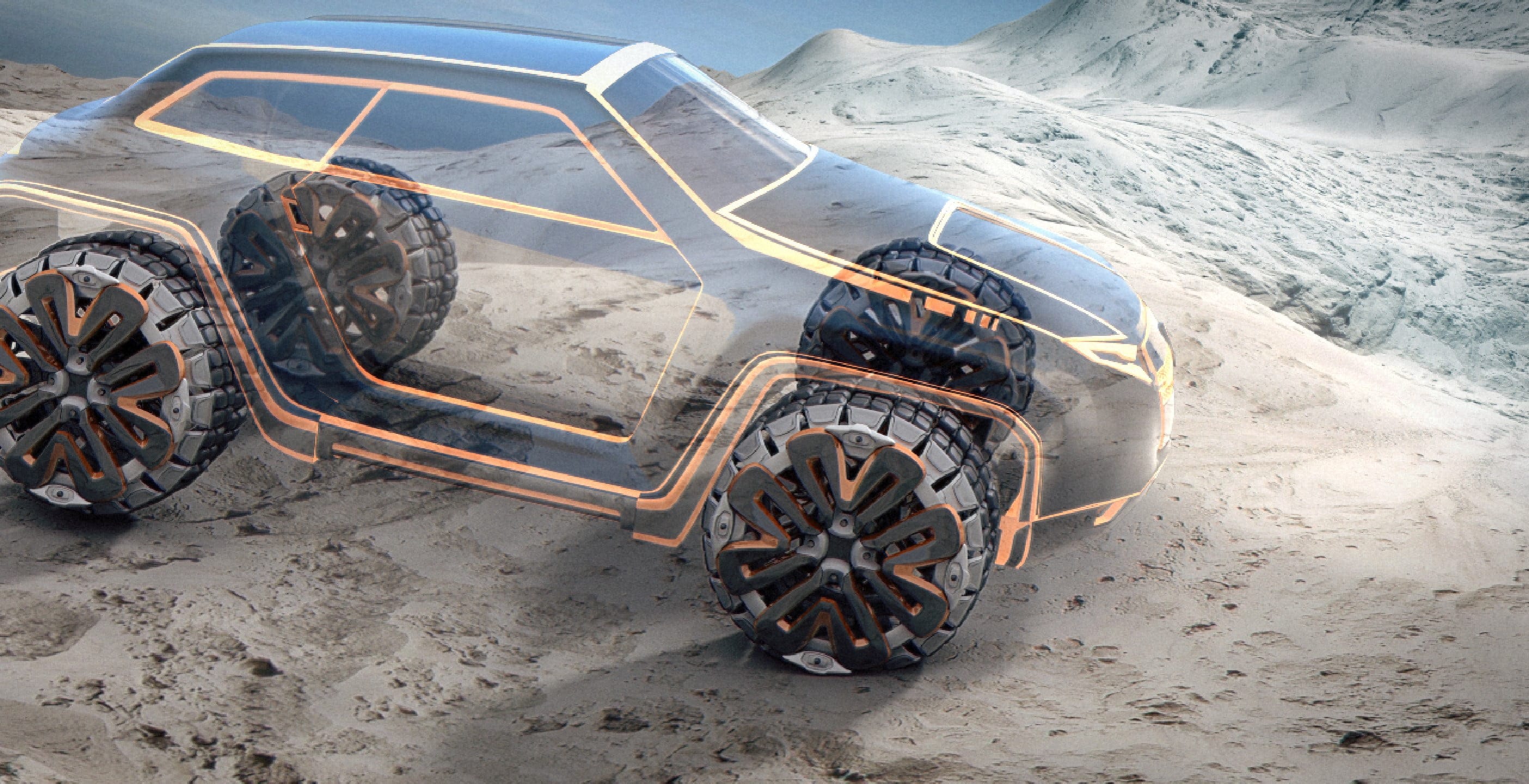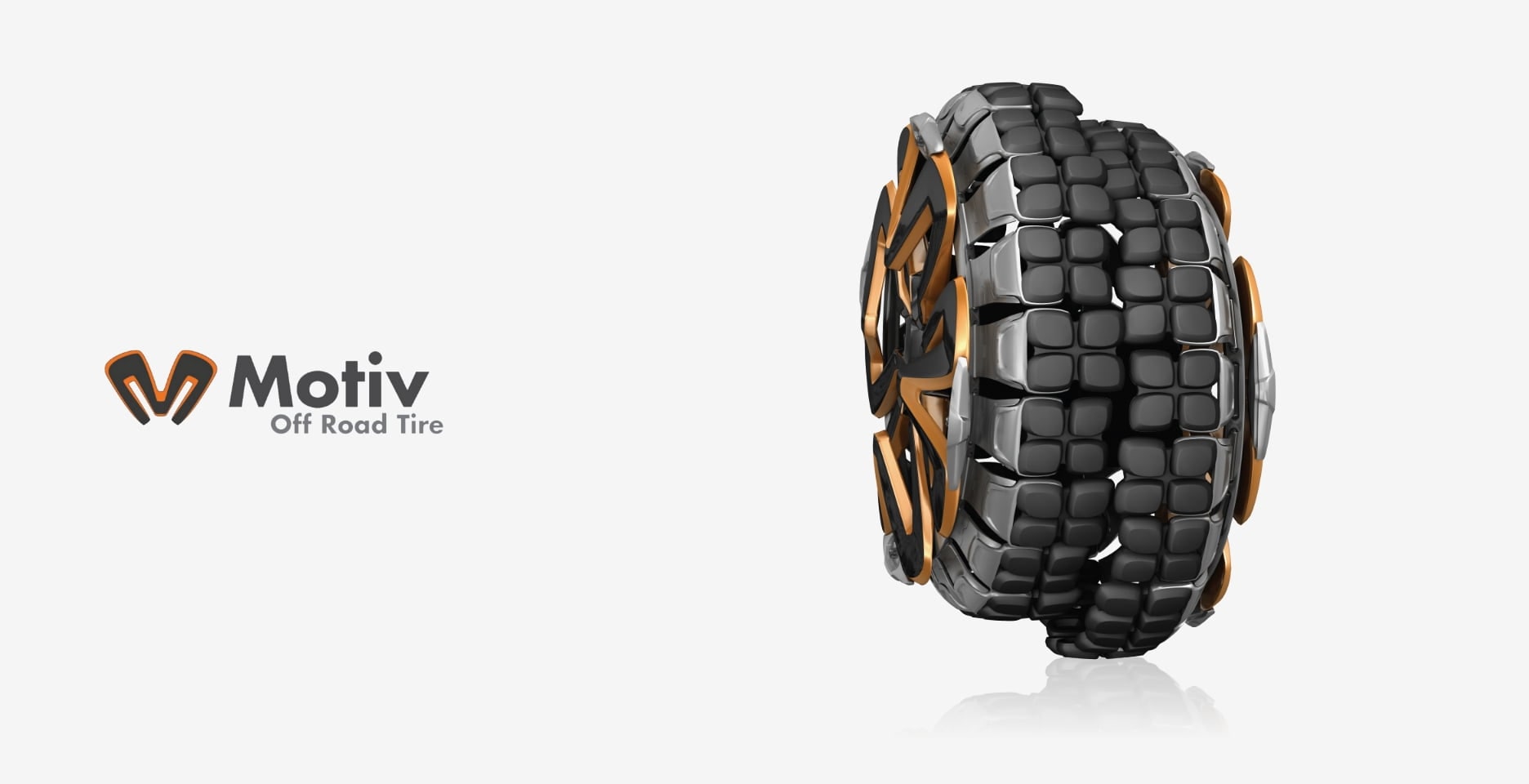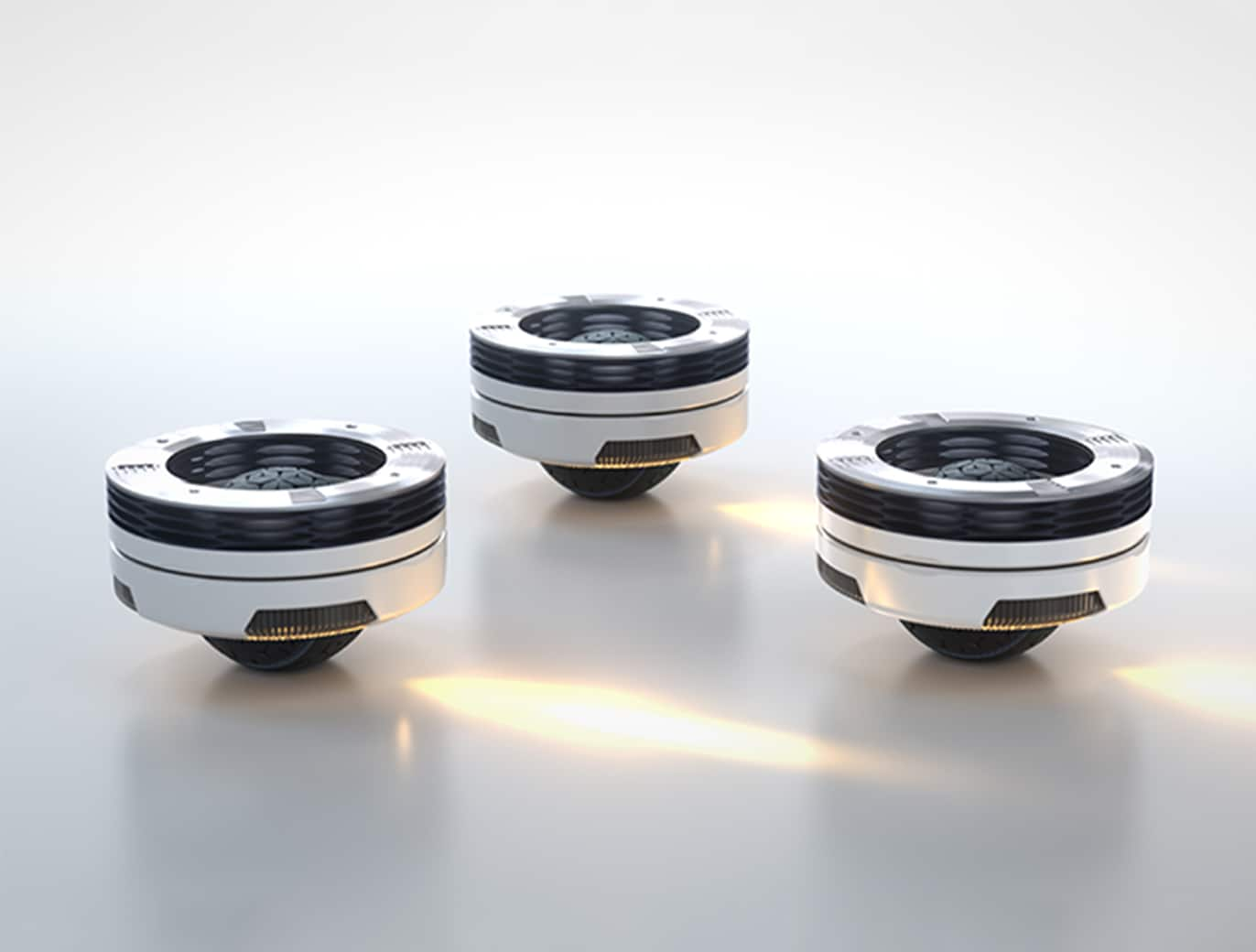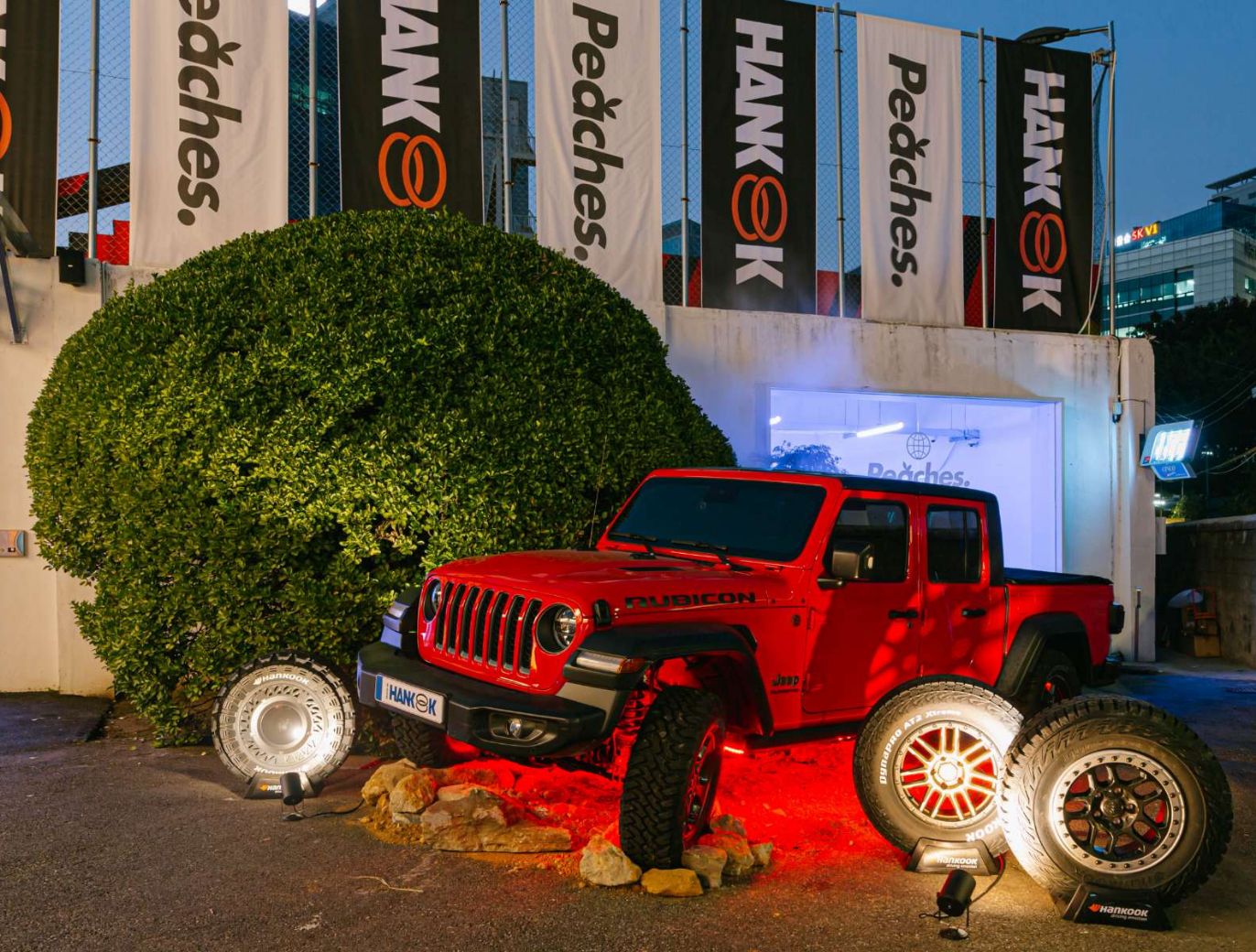Design innovation, Creating ‘Future Mobility Vision’
Design Innovation

Our Projects
Hankook Tire will always stay with you on the path towards embracing the technological innovation of the future.
Check out the future tire design stories that will excel in the world of our dreams.
2022
Urban
Reshaping
2022
WheelBot
2020
Urban
Reshaping
2018
Extending Future Life
Beyond Mobility
2016
Connect to the
Connected world
2015
Collaboration
with Vibram®
2014
A Great Challenge
for a Great Change
2012
The Way
to the Future
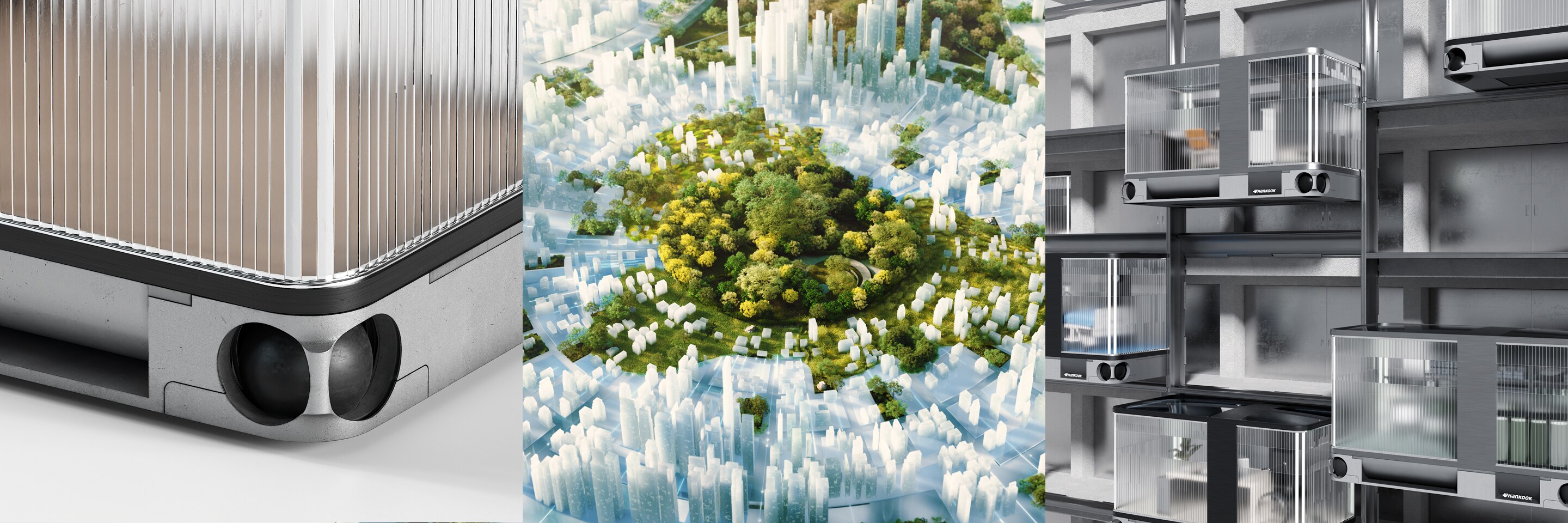
Urban Reshaping
2022
How will urban space change in the future?
'Urban Reshaping' is a project that proposes a mobility concept based on predictions of the future mobility environment and designs scalability linked to tires.
Tire technology, the basis of organic urban composition, will go beyond simple movement and dramatically change the lifestyle in cities.
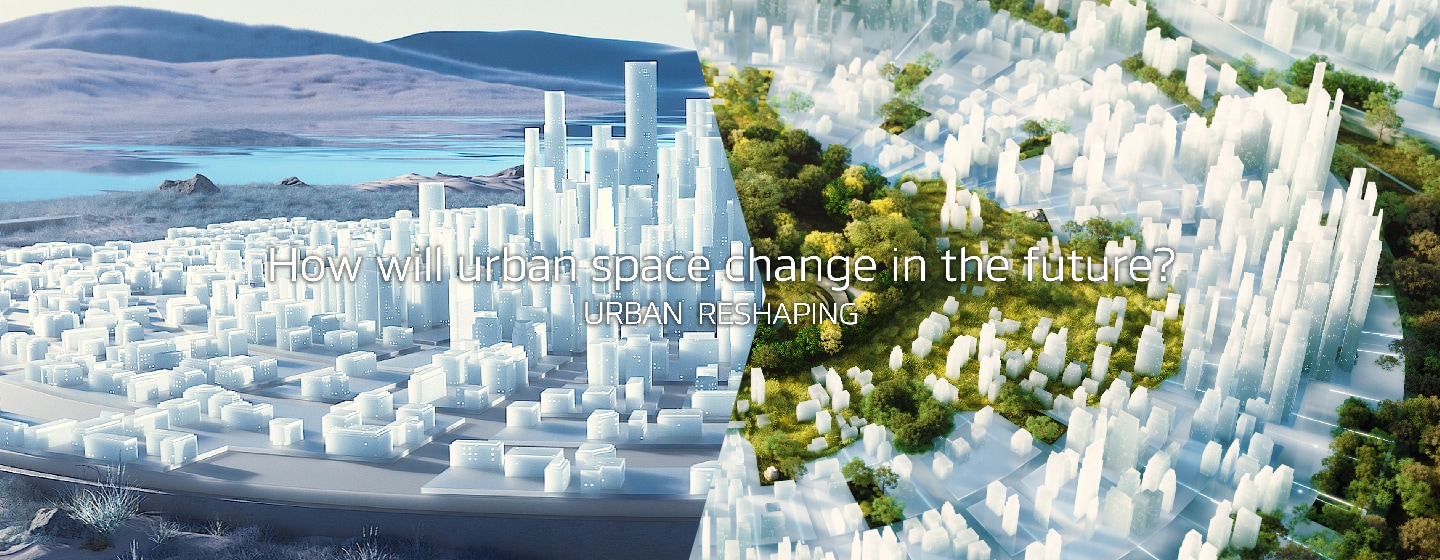

'Urban Reshaping'
Cities closely connected to mobility are expected to experience problems like regional overcrowding, population polarization, and environmental issues by 2040. Additionally, the needs of the public have increased. Therefore, the current imbalanced and limited urban shape needs to be flexible instead of static. Flexible spaces can be realized through design innovation.


Space Shifting Mobility
Space Shifting Mobility (SSM) is a system in which a minivan-sized boarding space is combined with a driving part equipped with a sphere-type wheel; a concept
in which the boarding space can move to and along a building on rails that have been installed on public roads and along buildings.
The design is
based on the premise of three-dimensional movement, such as going up and down the outer walls of buildings and on existing road surfaces. This system expands
useful space and can be rearranged as needed.
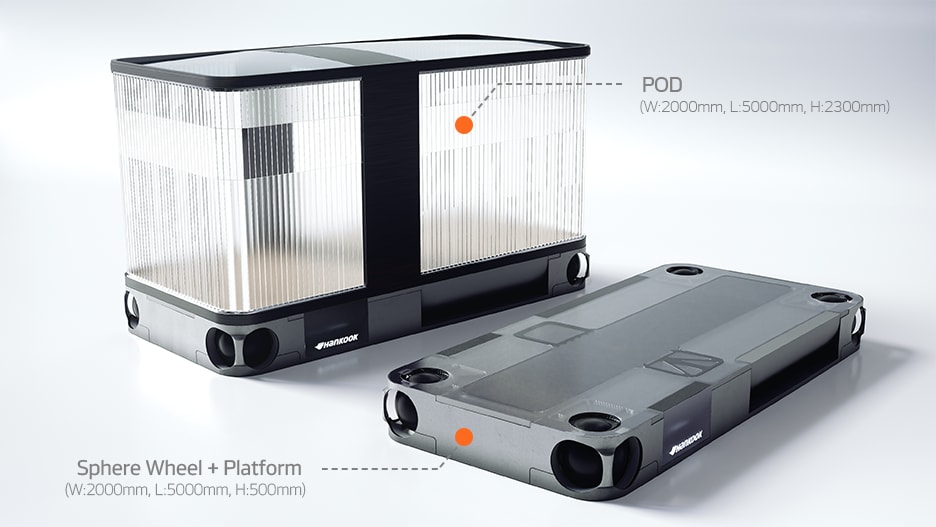
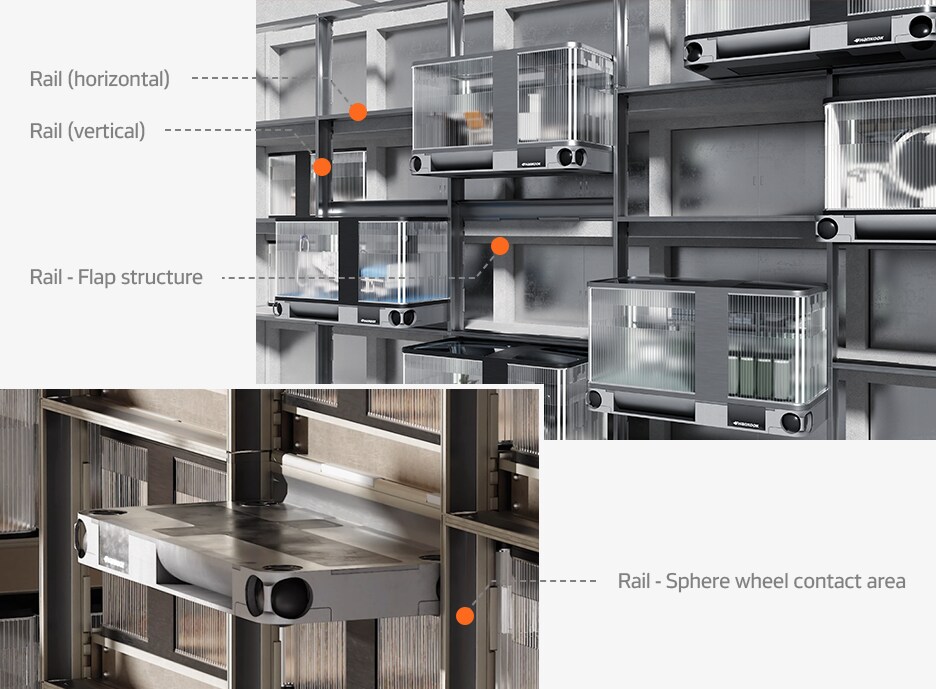
Urban reconstruction with Space Shifting Mobility
Mobility based on three-dimensional movement can expand the space in the center of a city.
Urban construction that places importance on human and nature coexisting is an indispensable trend due to the various environmental issues people are grappling
with today and with and the recent pandemic. The advantage of utilizing Space Shifting in urban spaces is that idle space can be optimized.
The
urban model led by industrialization created cities with huge buildings in a centrally intensive form, however, citizens now want a more accessible
infrastructure with larger parks.
For this reason, the large-scale commercial buildings that form the concrete forests in downtown city centers have become more of a nuisance than the goal. With
a Space Shifting function, downtown spaces can be used more freely and appropriately throughout the day and night and unused building space can be utilized.
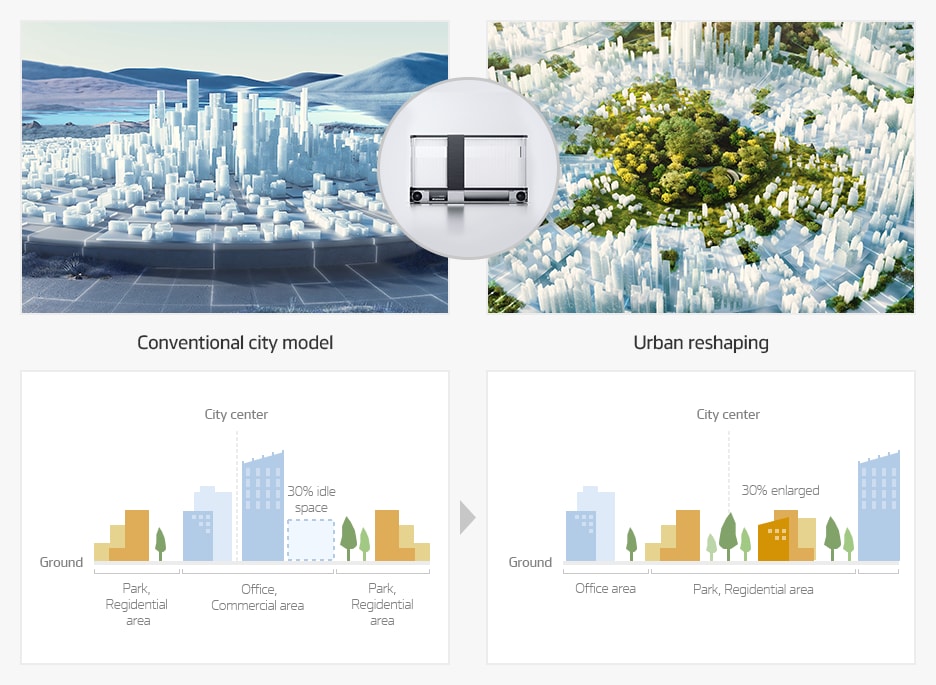


Mobility usage environment and scenarios
SSM has the advantage of being able to flexibly configure space according to needs by grafting the system into a home, medical unit, and work environment,
making it possible to efficiently use resources and energy in the future.
If a space is able to move and provide various services, it is feasible
that a garden could be created on one side of a living room, a medical situation could be responded to faster, and an office space could be easily changed
without large-scale remodeling.
This Space Shifting solution will use less resources compared to fixed large-scale construction projects in the
future, and provide optimized energy efficiency when it comes to space maintenance.
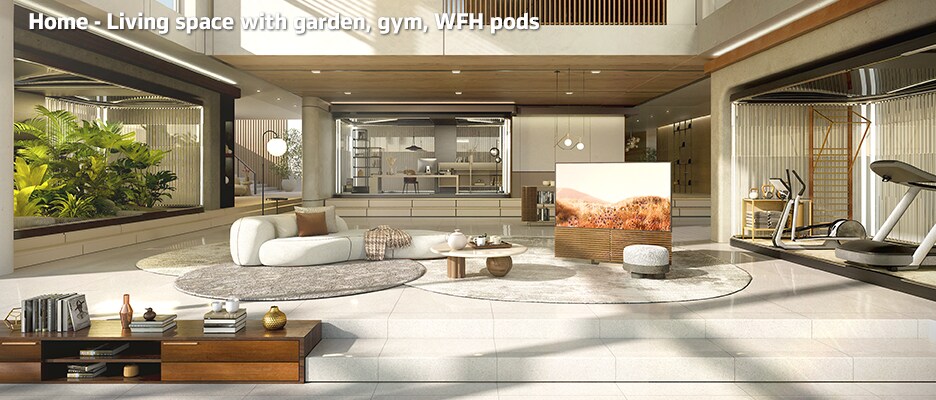

The demand for spacious and affluent residential spaces will continue into the future. Additionally, the work environment will shift the concepts of
leisure and work, and a more leisure-oriented lifestyle will exist.
The main space of life will be the houses and the communities surrounded by parks, and people will be able to enjoy a variety of activities nearby.
The idea of Space Shifting is about providing a variety of services to satisfy the necessities of a home along with sharing-based services that allow
people to enjoy more services at the lowest possible cost.
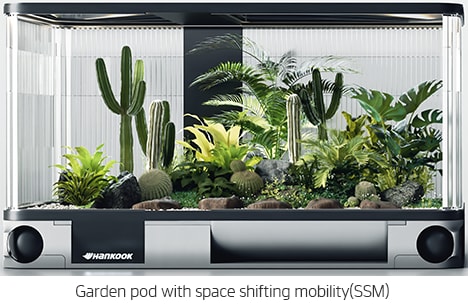


As the world went through a pandemic, the importance of healthcare was re-evaluated. With mobility like SSM, simple hospitalization and long-term
rehabilitation can be provided in the comfort of one's own home in the future. This is because anyone can be prepared to respond quickly in an emergency.
In addition, the emergency treatment facilities will be optimized with rails and POD to reduce a patient's movement and contribute to the efficiency of the
medical environment by quickly matching the necessary imaging equipment with the patient in an urgent medical situation.
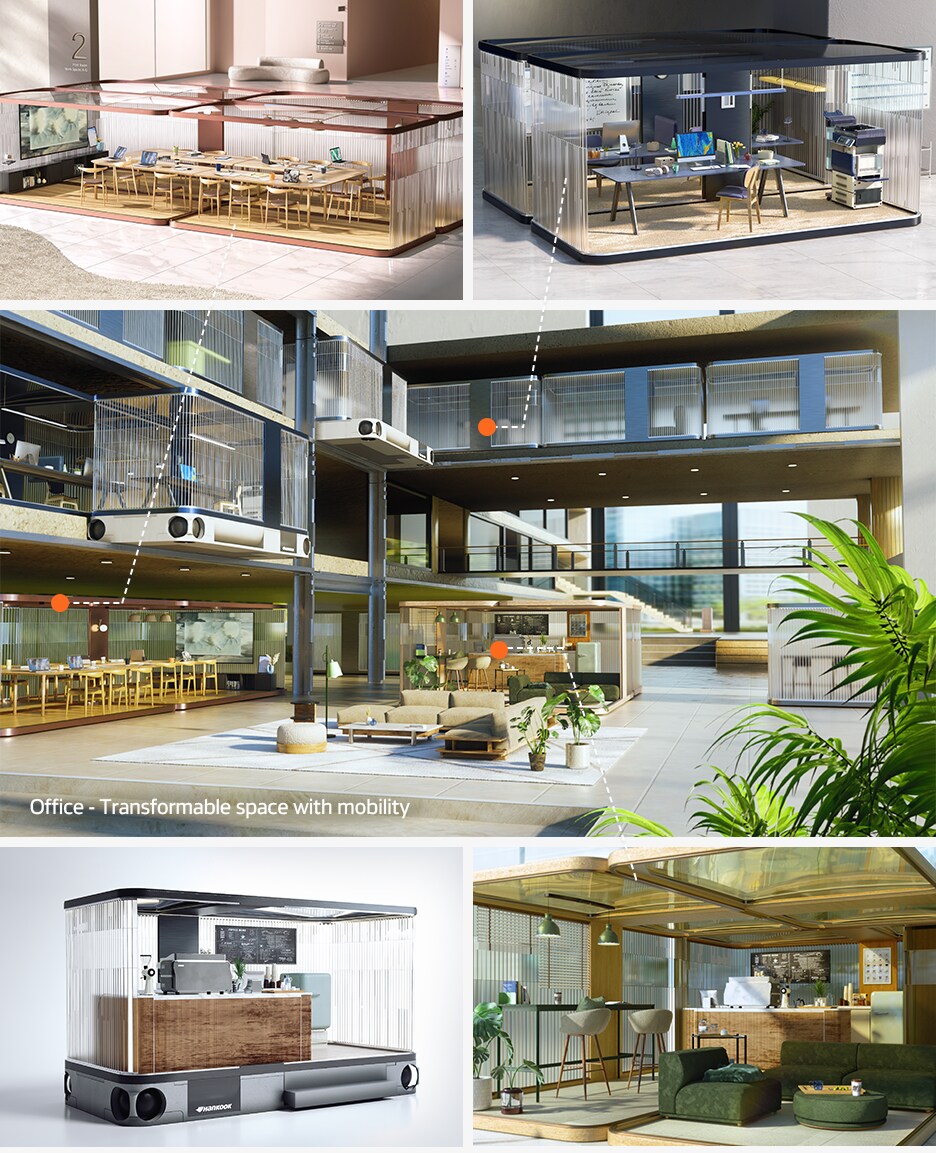
The necessary area for an office space will be smaller in the future. However, offices in the future will have more diverse uses, be able to change layouts
easily when necessary, and provide various convenient facilities for employees like VR, AR, and metaverse when in-person and working remotely.
SSM is optimized for this purpose, allowing people to configure spaces into an intensive space for one person, a collaboration space for two people, or a
meeting room for more than 10 people. The space can also become a cafe and lounge according to the season or need. An open office space can create a
resource-efficient office that requires no remodeling.
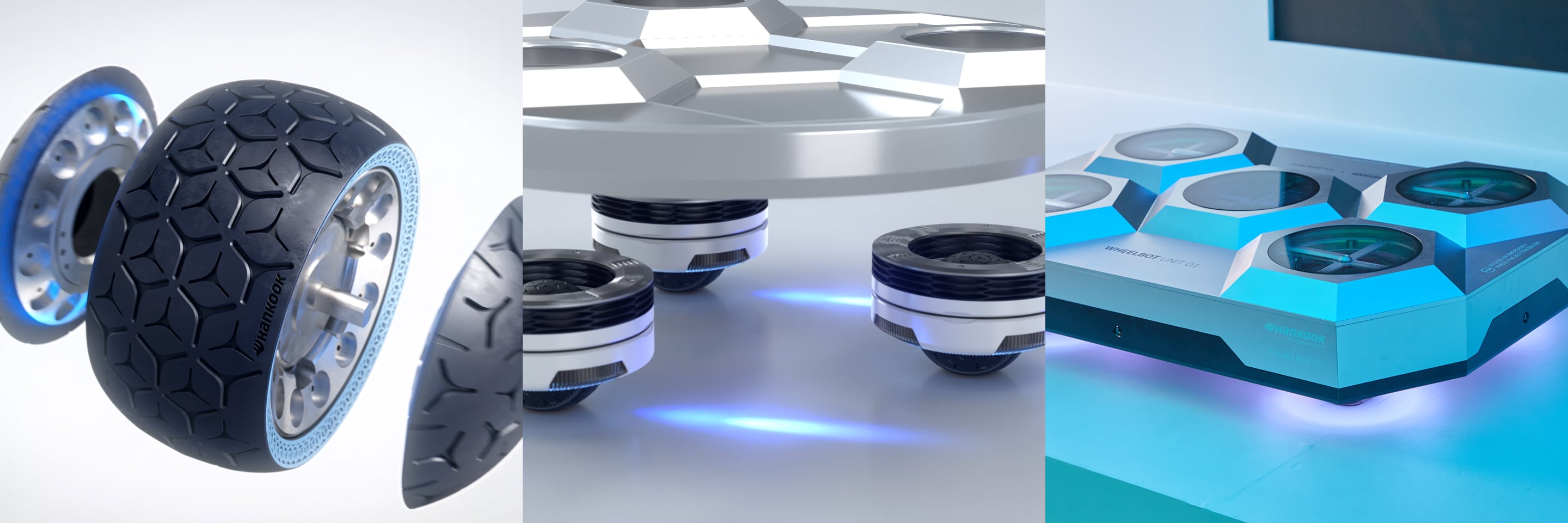
WheelBot
2022
'WheelBot', derived from the words 'wheel' and 'bot' from robot,
is a modular robotic wheel system driven by three axes, a project that realizes the future
of mobility.

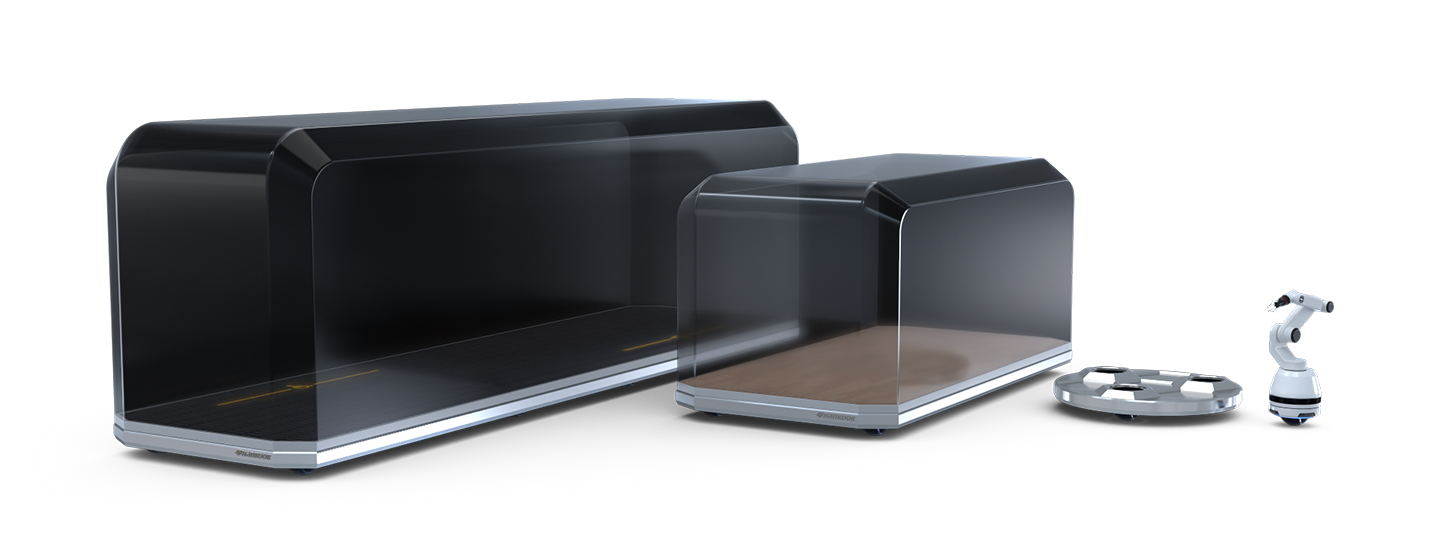

'WheelBot'
'WheelBot' is a project to realize futuristic concepts using innovative technology which can be used immediately in smart cities. 'WheelBot' is a robotic drive system created with three new approaches to the existing mobility drivetrain: modular, omni-directional, and intelligent; and has a production/operation method and drivability and usability which maximize efficiency using minimum resources. Designed for a future of eco-friendly mobility systems, WheelBot will be used as a base technology to enrich cities of the future and will be the first step in urban reshaping.
Omni-directional
The tire for WheelBot, which consists of a multi-directional tread pattern and NPT structure that can be driven in all directions, provides 3-way driving
capabilities with the following three axes:
X-axis: Driving in the forward and backward directions.
Y-axis: Steering and changing directions.
Z-axis: Side rolling and crab walking via rotation to the side.

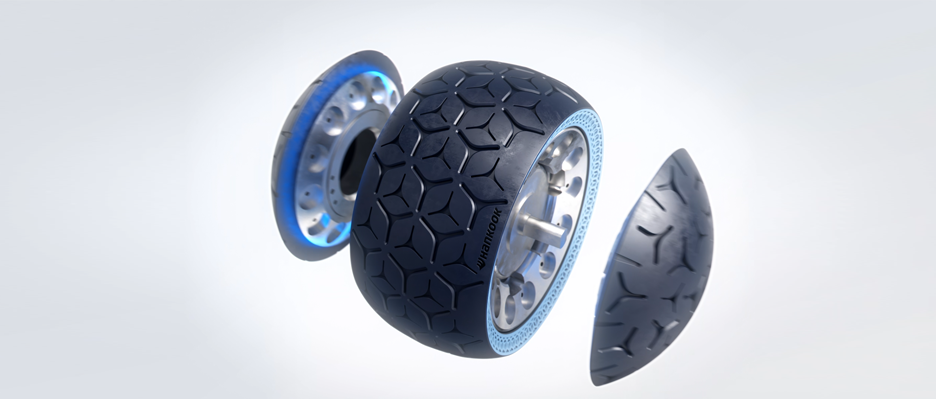
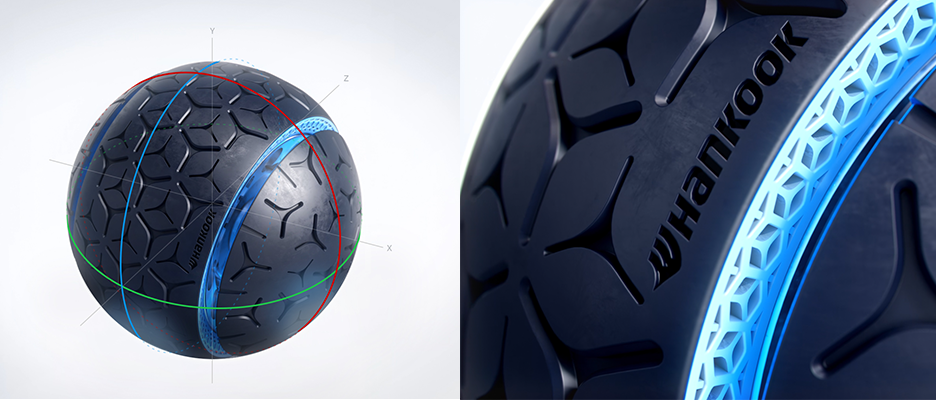
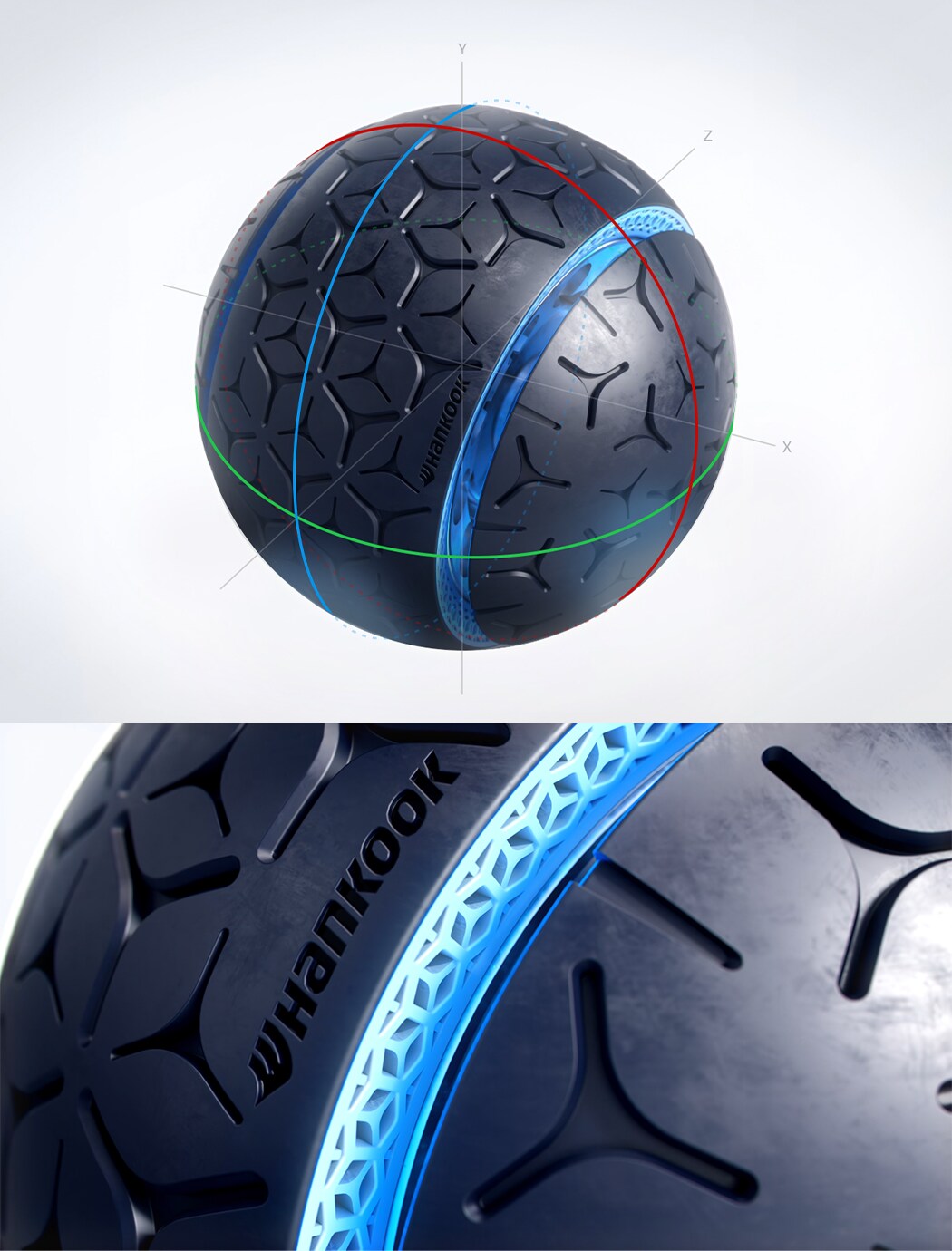
Modular
The ultra-small modular strategy established through research on the EV module platform goes beyond the limits of the existing platform. The WheelBot system can be efficiently and infinitely expanded like LEGOs to optimize smart mobility applications. Companies will be able to freely develop the Pod applications creating mobility ecosystems similar to the operating systems Android and iOS.
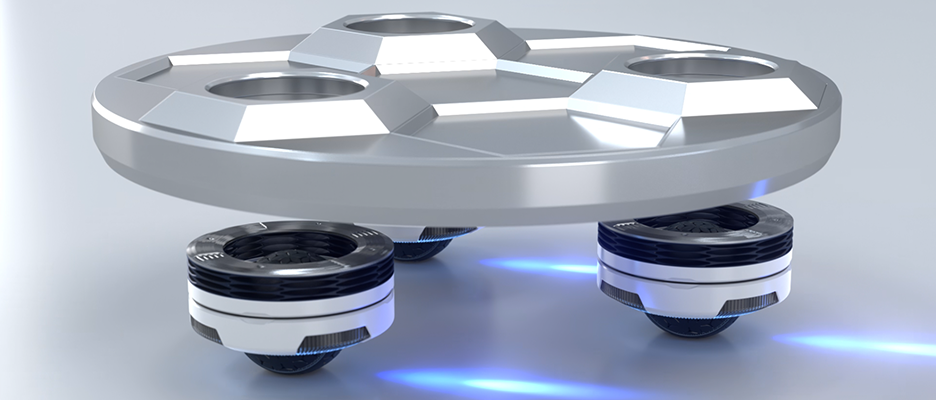

Intelligent
The intelligent robotic platform module WheelBot presents efficient driving through the fusion of a 3-axis motion structure and active control intelligence. Moreover, this system will bring innovation to interior usability by removing the drivetrain and lowering the minimum ground clearance. In the era of electrification and autonomous driving, drivability and mobility and the freedom of usability will infinitely expand the user experience with vehicles.
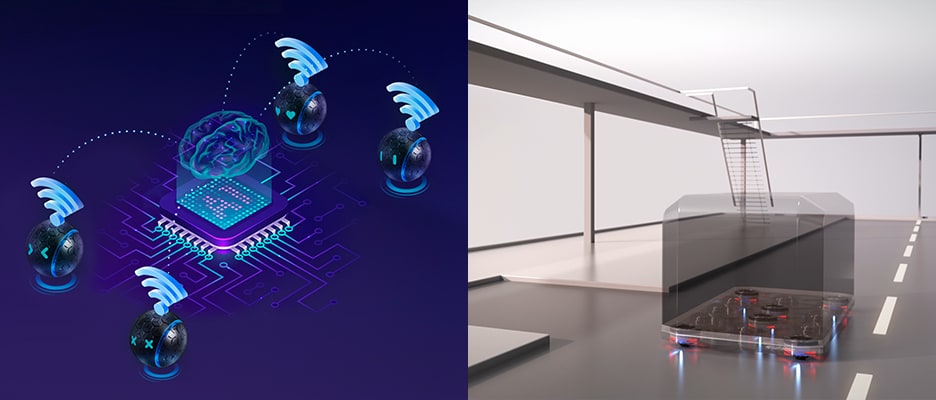
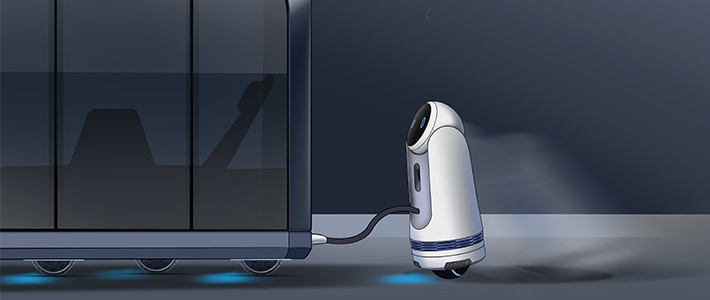
WheelBot allows a more dynamic driving experience than is found with the small wheels used in robots which will create more opportunties as service robots are added for more mobility in cities of the future.
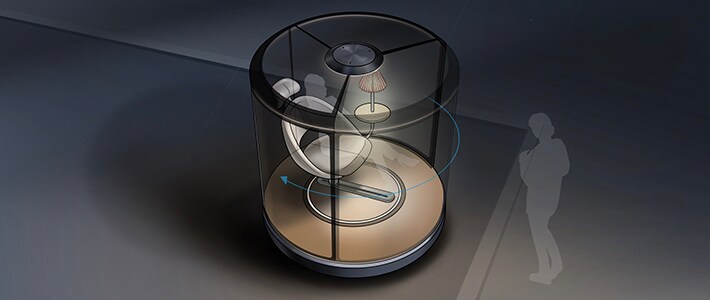
A new type of moving space with the capability to get on and off in all directions. / Driving in all directions.

Infinite possibilities for new door structure, interior layout will be expanded, and more corner space usability with four wheels and suspension.


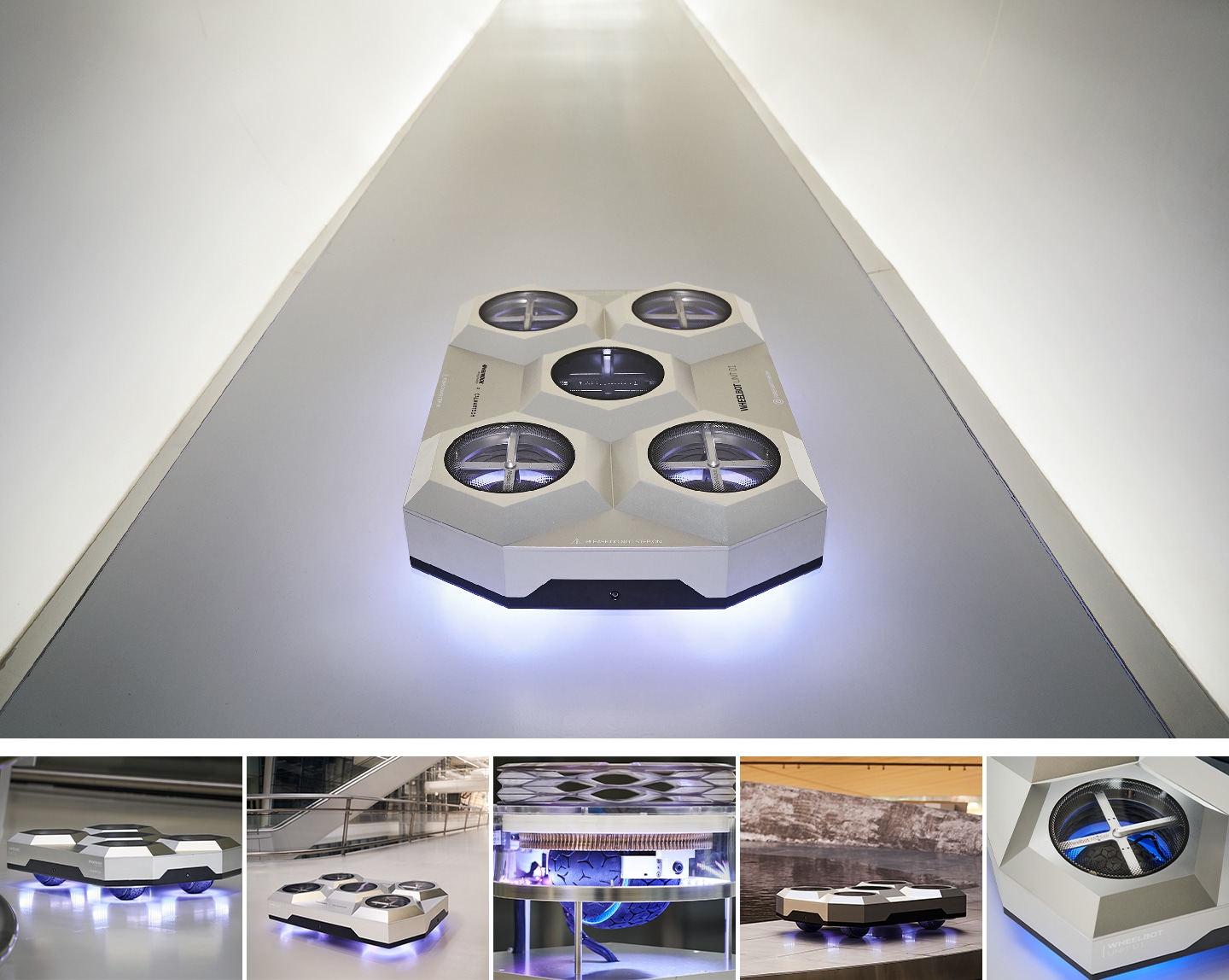
Unveiling a driving body and platform capable of autonomous driving in 2022.
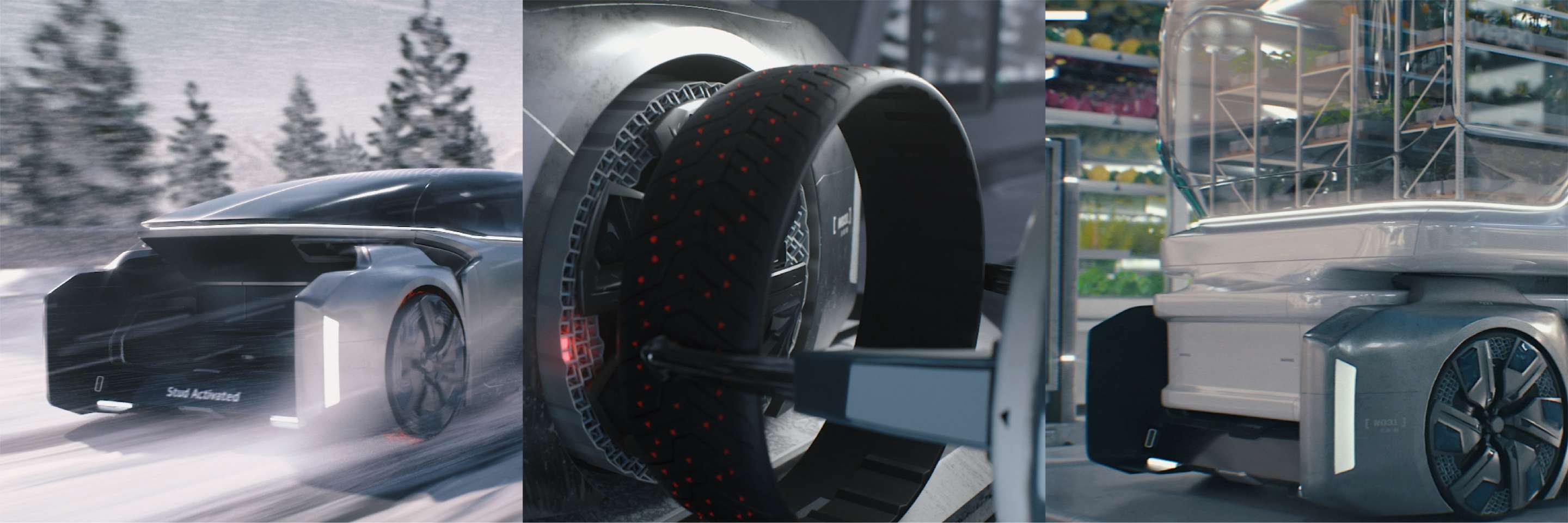
Urban Reshaping
2020
Urban Reshaping 2020 is our next-generation design project that addresses upcoming urban infrastructure and tires. Tire technologies that respond to all weather/all drive conditions on a dime will usher in dramatic improvements, not only to mobility but to urban lifestyle in general.




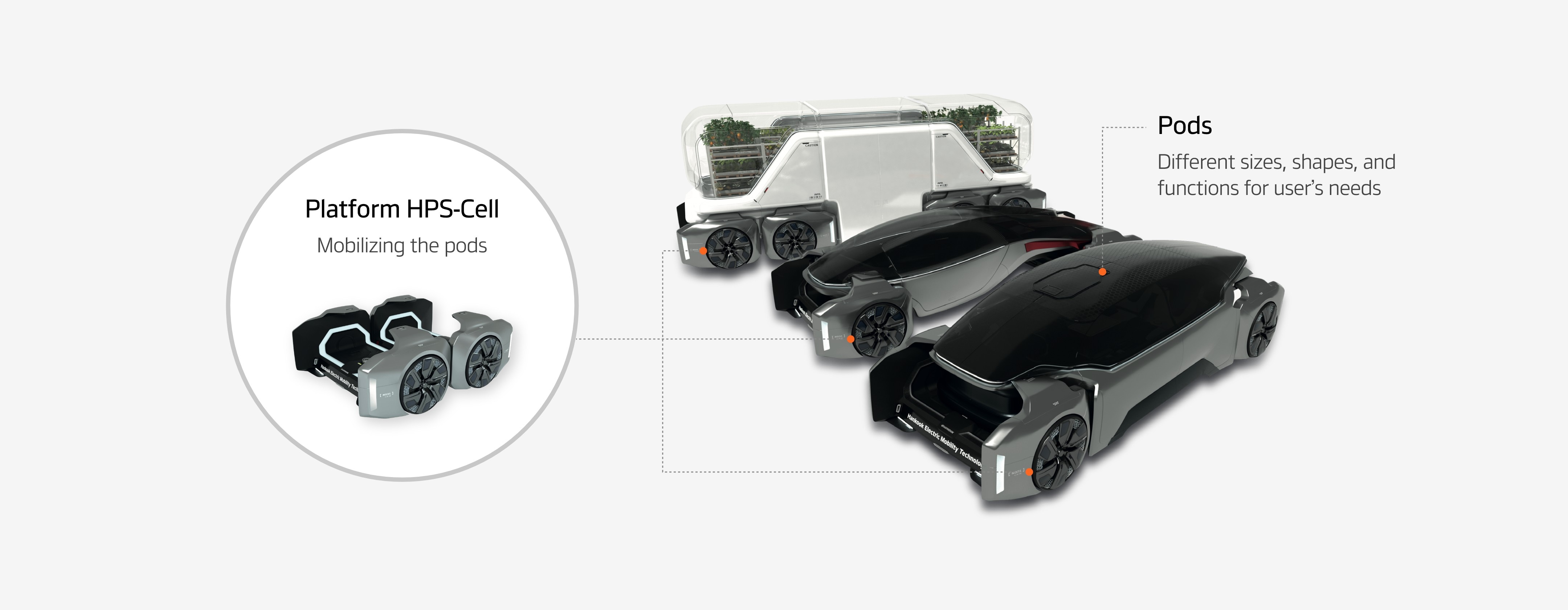
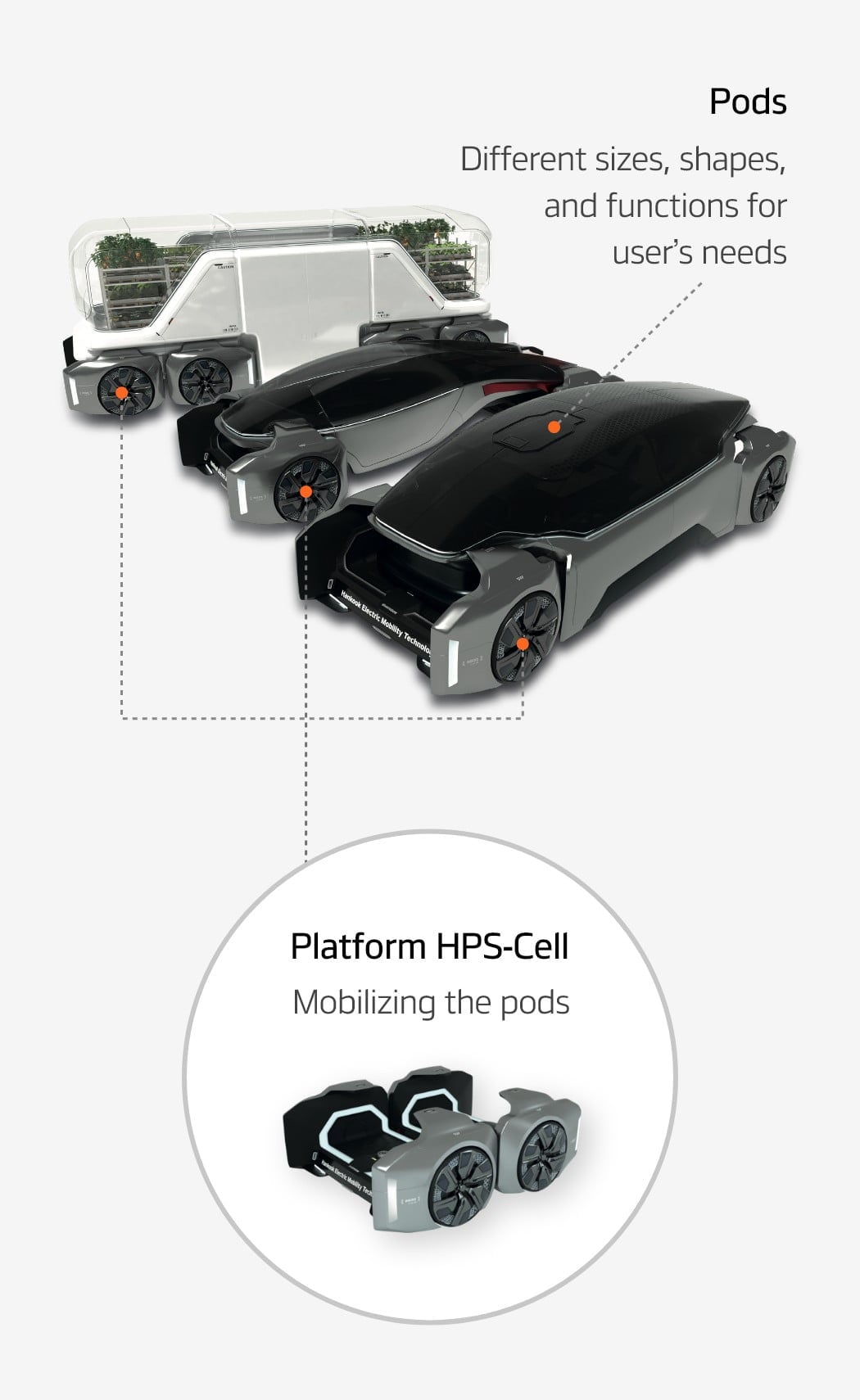
‘Urban Reshaping’
Our technology helps fast track whole cities into the future. Our mobile modular platform “HPS (Hankook Platform System)-Cell’ conceptualizes the idea of next-generation mobility that separates spaces from platforms. This will provide optimal mobility services in a future reality equipped with cutting-edge technologies and automation infrastructure for the environment, autonomous driving and AI (Artificial Intelligence) to take our quality of life to a whole new level.
Hankook Platform System(HPS)-Cell
One platform consists of two wheels: a general 4-wheel type is basically made up of two sets of platforms. This future technology will be applicable to 8-wheel, 10-wheel and other diverse forms of mobility.



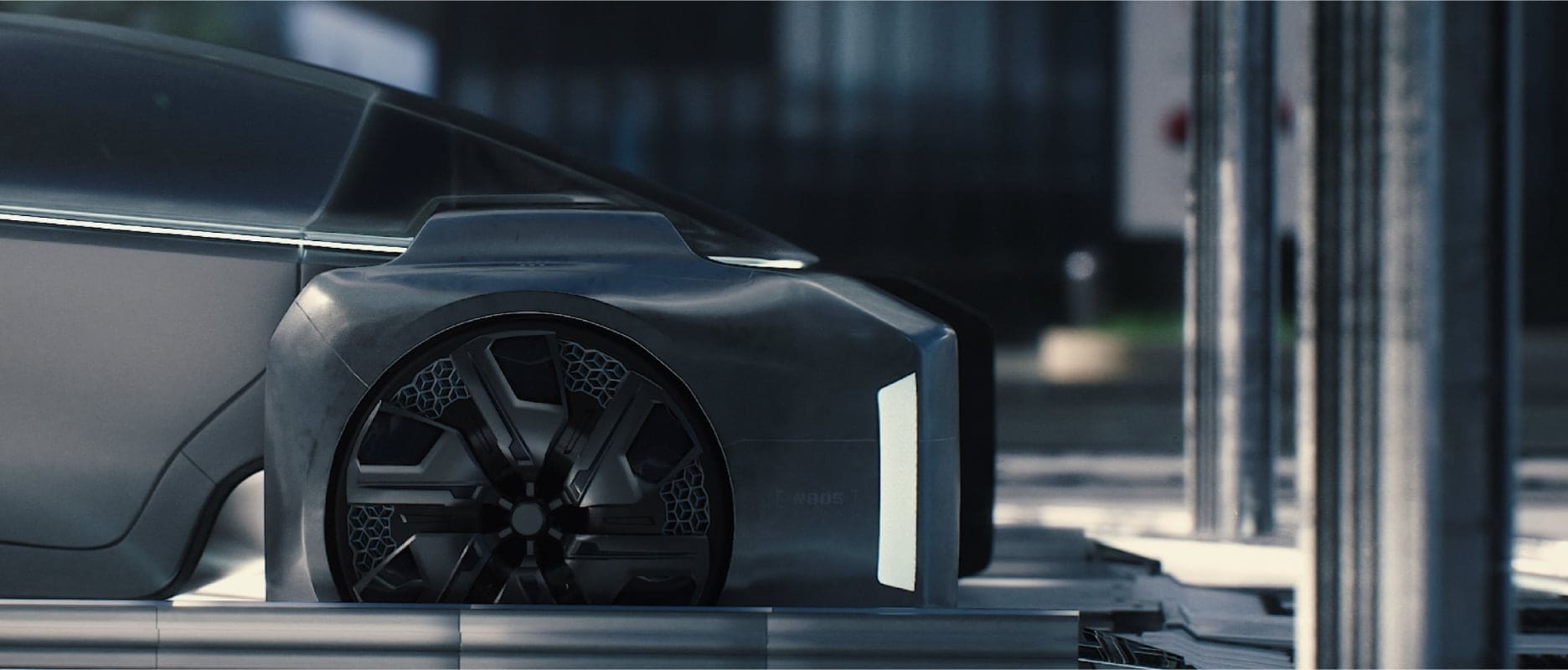
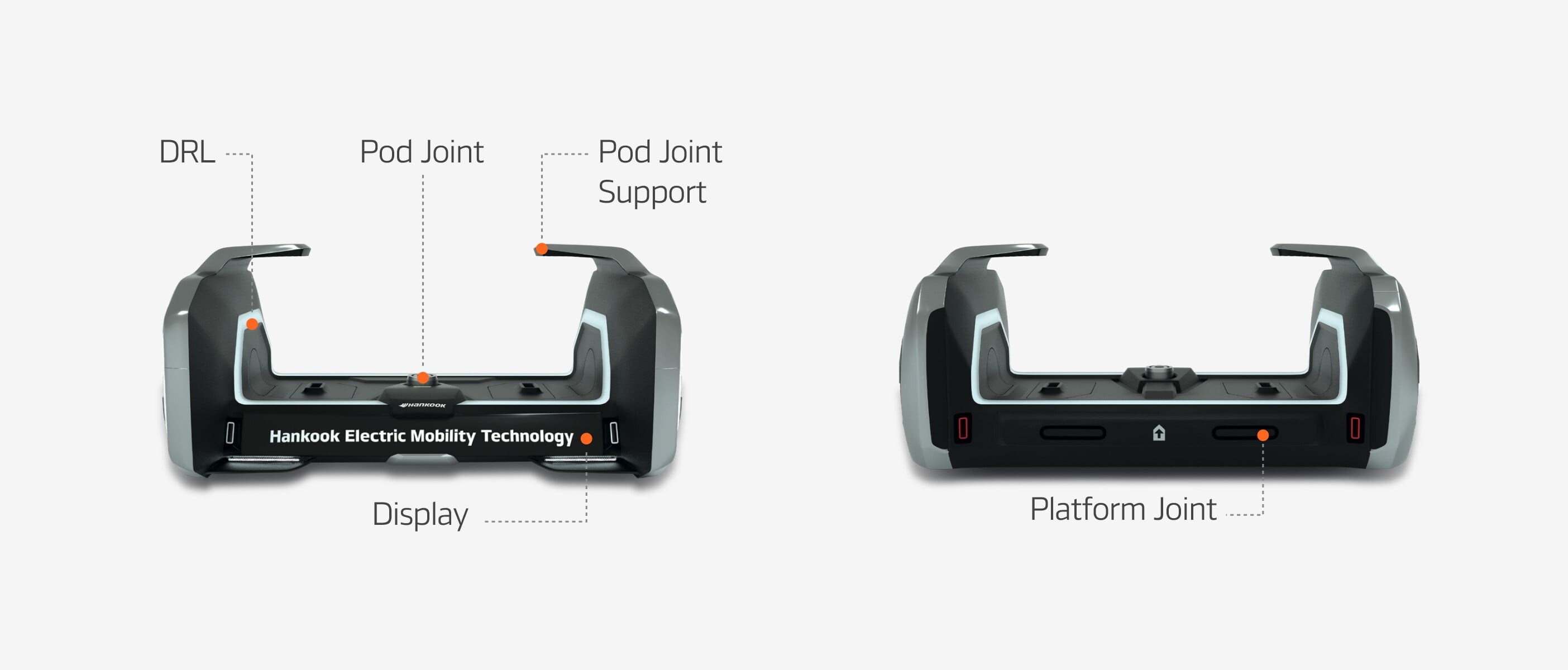
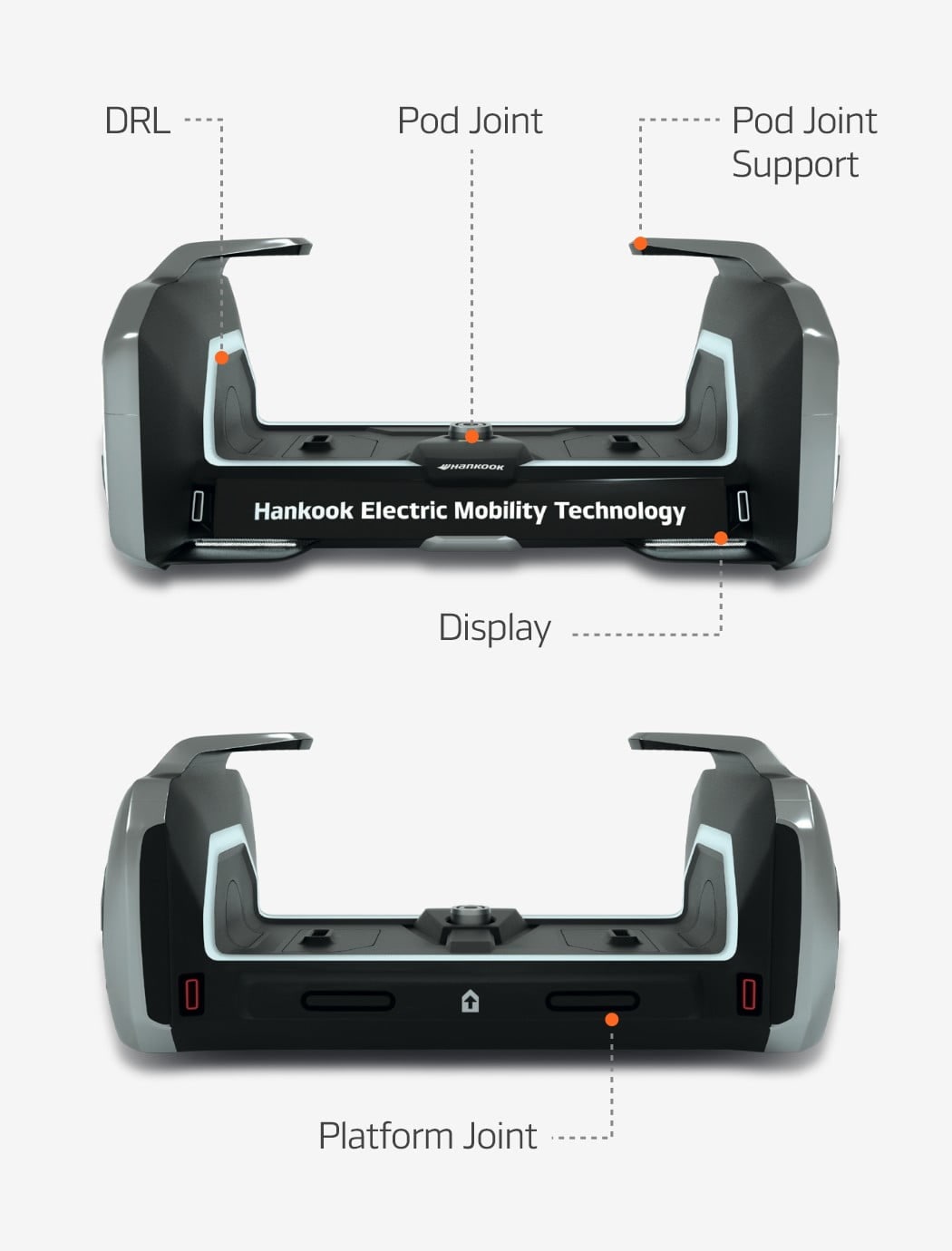
‘HPS-Cell’ Tire
HPS-Cell tires are airless tires that contain unit-cell structures overlapped complexly to achieve 3-dimensional strength. They are embedded with ultra-precision sensors that identify the tire’s tread wear status and road conditions in real time. They are also equipped with a first-of-its kind efficient management system that responds to tire wear-induced risks and automatically changes tread patterns to best suit varied road surfaces.
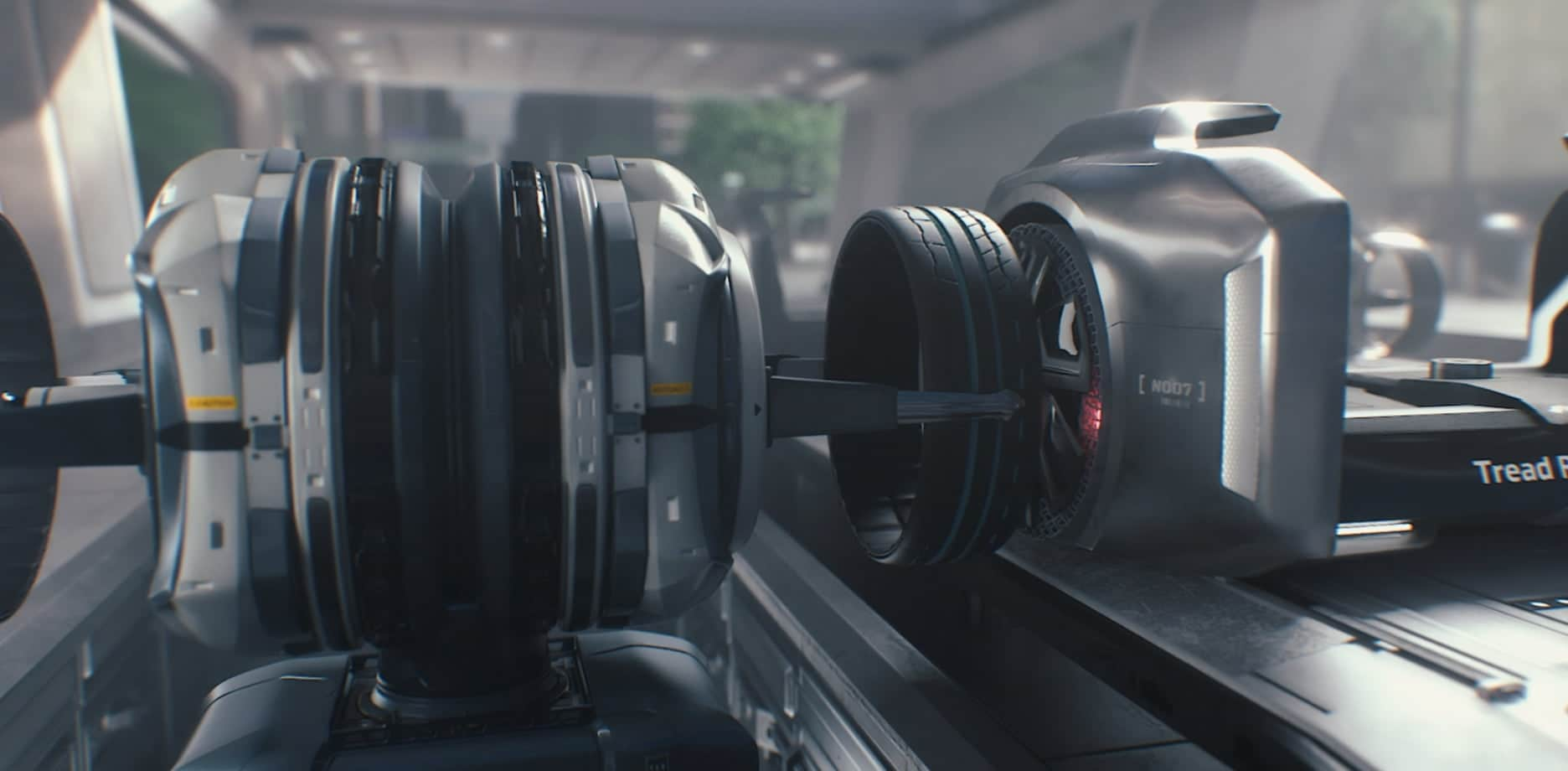
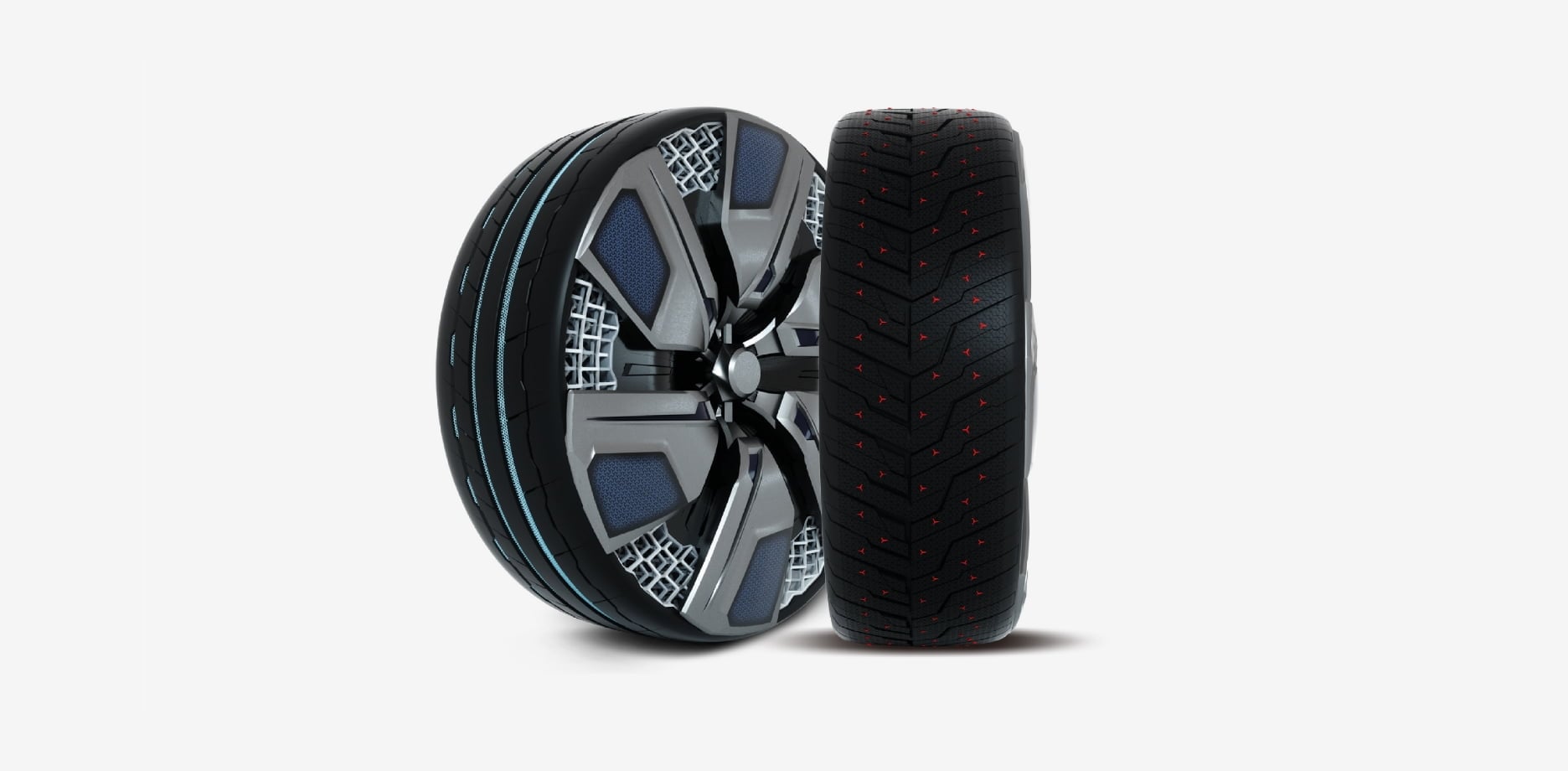



Extending Future Life Beyond Mobility
2018
Combining the future-oriented ideas of the Royal College of Art (RCA) and Hankook Tire’s globally-renowned technology, this project was designed to present tire systems that will create new value in the future driving landscape of 2035.



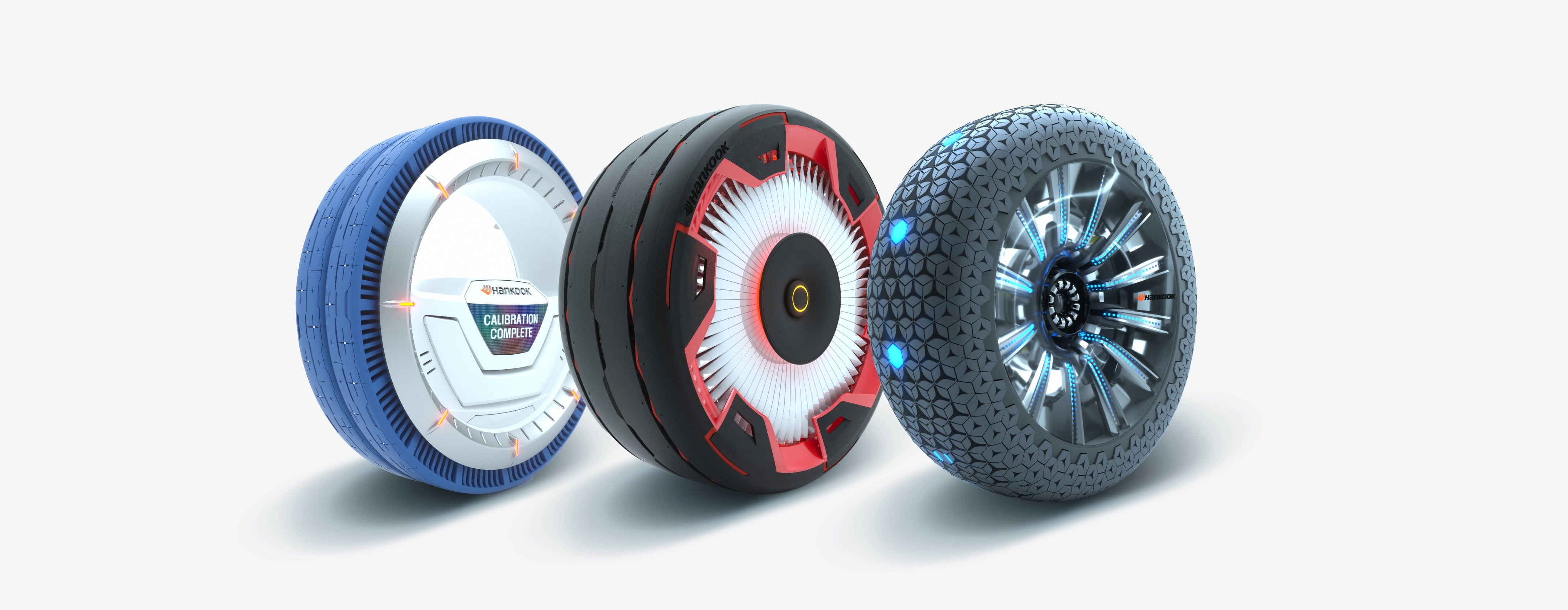

‘Extending Future Life Beyond Mobility’
We look for new possibilities for tires in the future mobility environment, which will probably take hold around year 2035, when fully autonomous driving, robots and AI will become an integral part of our daily lives. Our intent is to design the future of tire technologies from the individual, public and commercial aspects.
Futuristic Racing Tires
These tires help maximize downforce to enable vehicles to remain stable at high speeds. Their separable treads increase the width of the wheels to improve tire grip while their internal wings and side fans allow for greater air flow to deliver a more aerodynamic and thrilling driving experience.

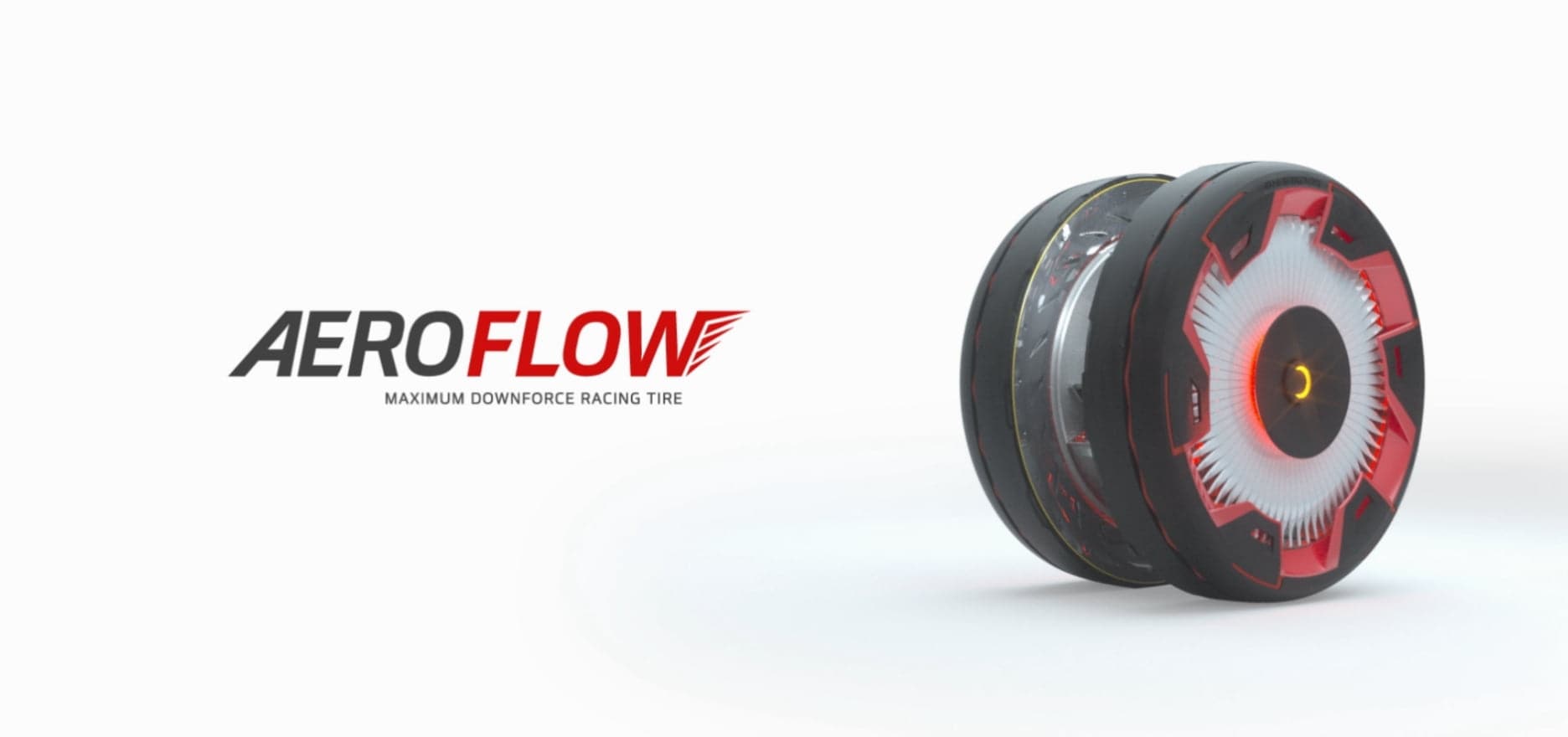
Future Logistics System
The HLS-23(Hankook Logistics System) represents a tire-enabled innovative logistics system. This system is able to either operate in single unit mode or in group mode depending on the size and weight of the delivery items. The separable two-row tread structure enables the operator to individually control the speed and direction of each row to drive straight or even pivot. The system moves through the recognition of road coordinates, and self-charges to provide sustainable logistics services.


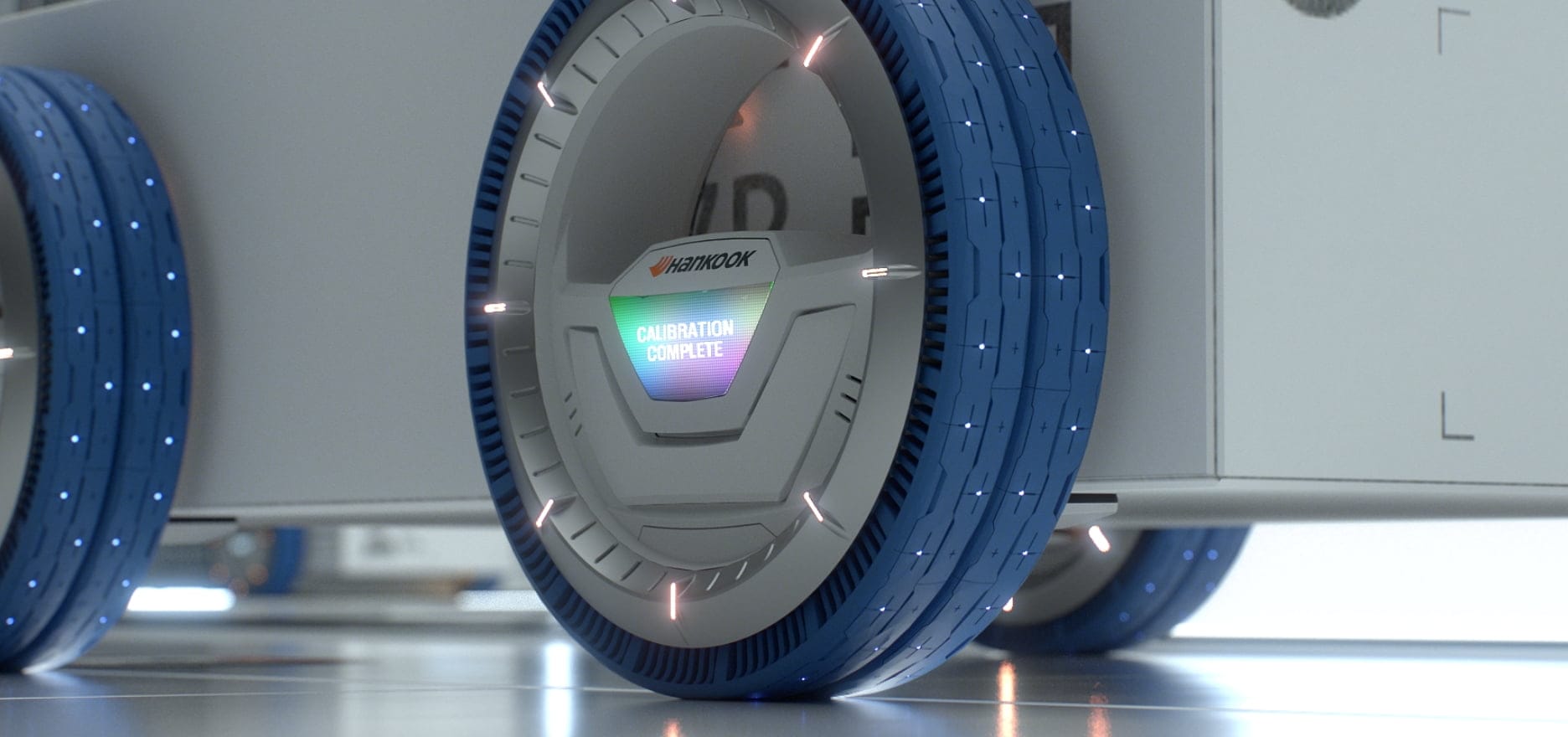
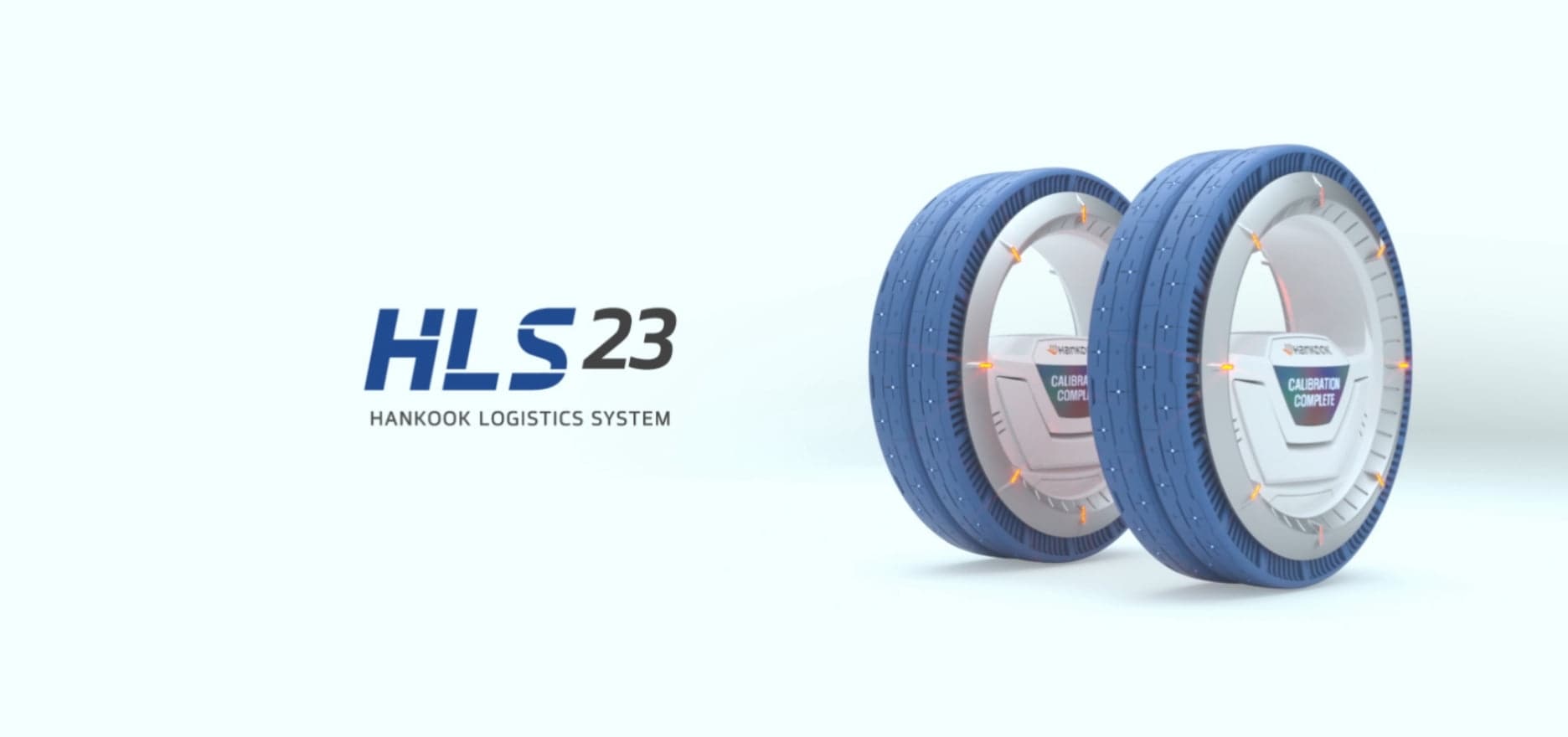
Variable Smart Tire
Mounted on fully autonomous shared vehicles, our variable smart tires adapt to the developing conditions of urban city centers in a moment’s notice. The smart sensors embedded on these tires allow for the precise identification of road surface data, and even support self-charging and diagnostics. The information these sensors provide is used with EAP(Electro Active Polymer) technology to help form blocks and grooves on tire treads to eventually produce peak drainage and maximum performance.


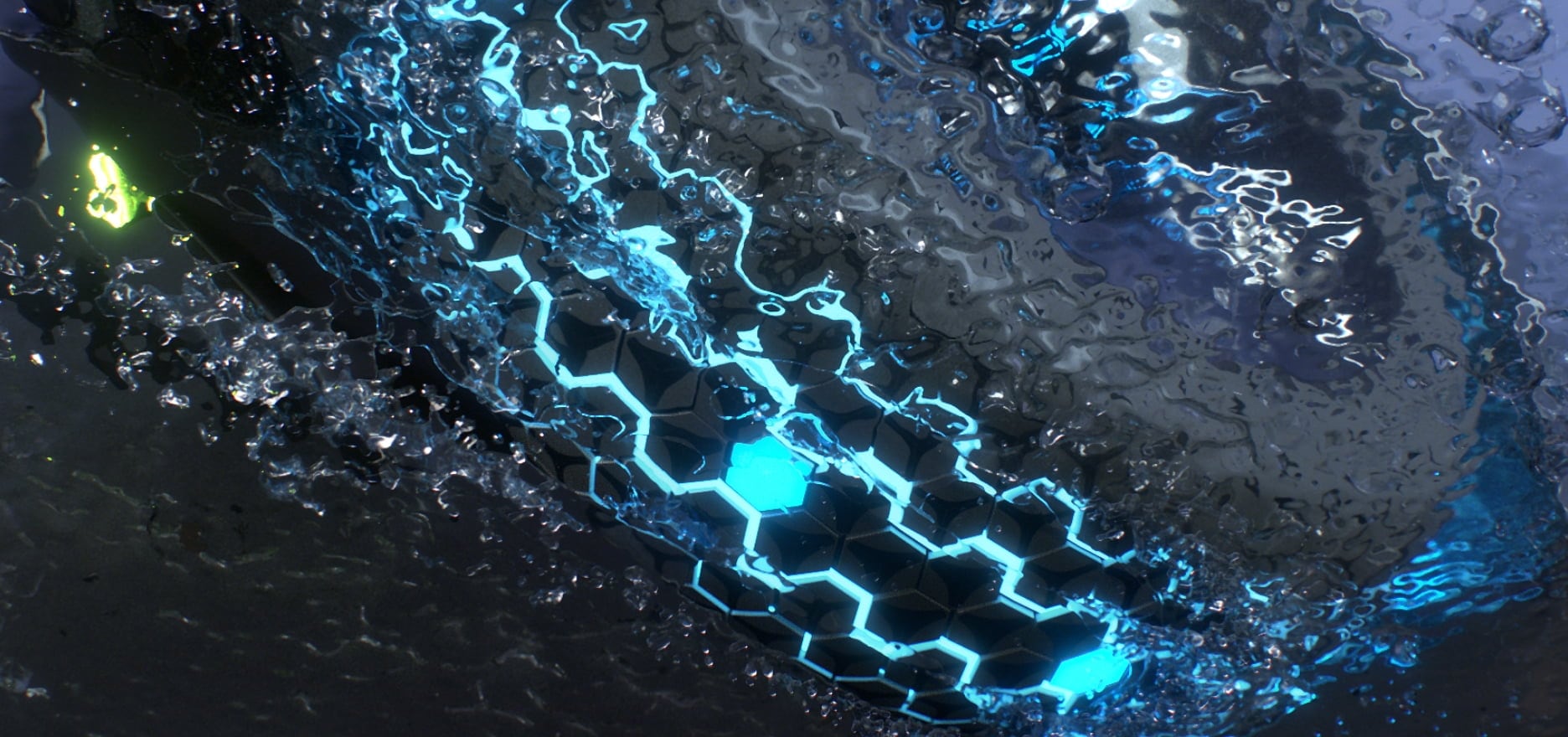
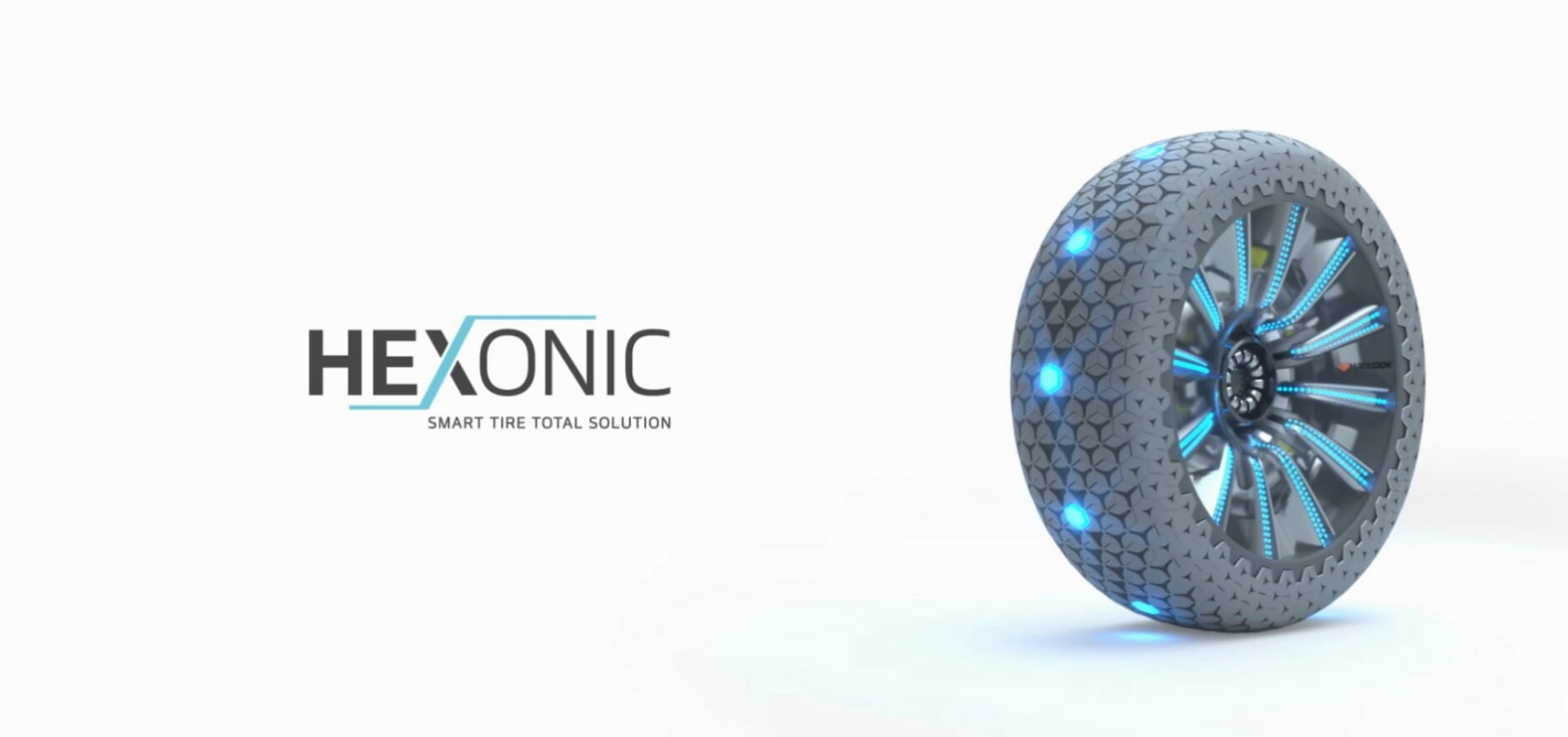


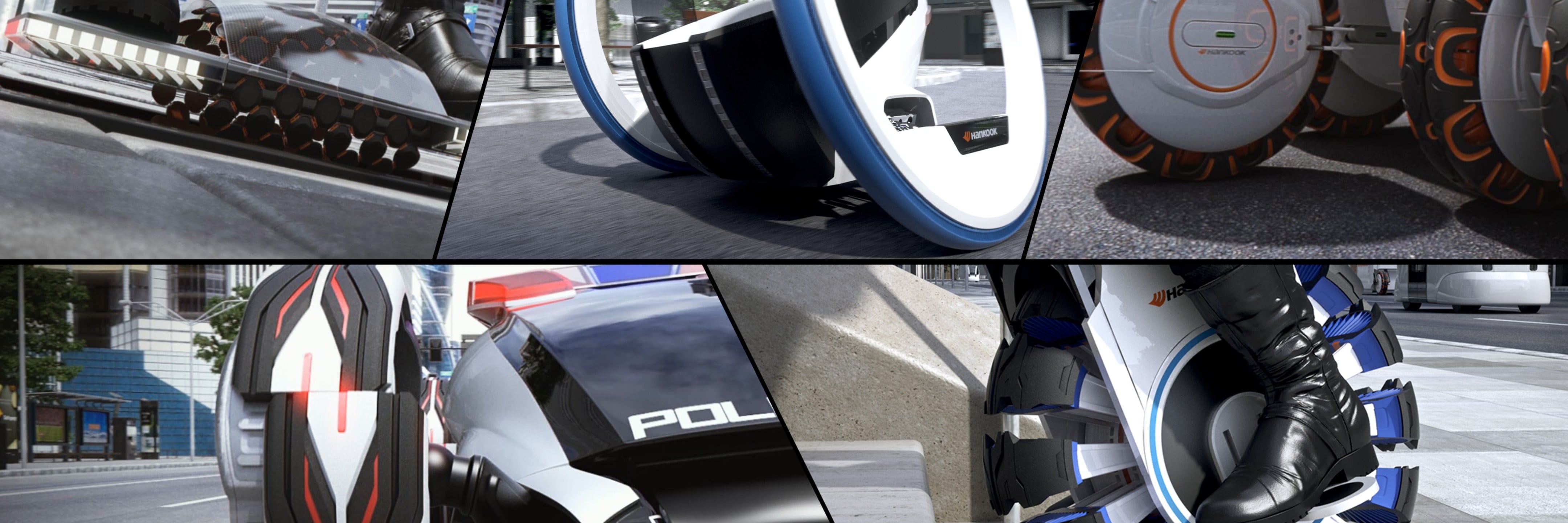
Connect to the Connected world
2016
This project is intended to forecast the changes in mobility in the future megacities and highlight the vision of future mobility through tires.


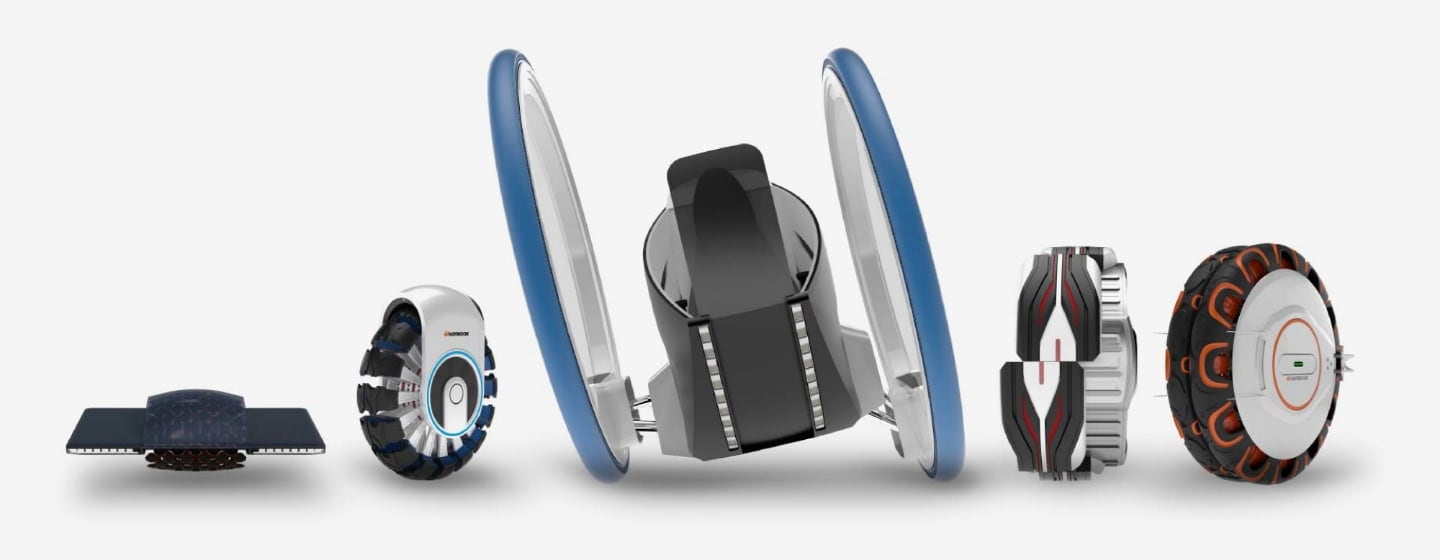

‘Connect to the
Connected world’
We worked together with the University of Cincinnati in the United States to forecast the changes in the environment for vehicles and driving in megacities of the future and studied the various components of infrastructure such as general roads, alleys, and stairs. Furthermore, we designed innovative tires to provide the ultimate traction for a wide range of future mobility options, including shared mobility, self-driving cars, and emergency vehicles.
One-Seater Comfort Mobility Ⅰ
The one-seater mobility mode, Magfloat, can also travel indoors. The principle of the magnetic field expansion and rotation allows the mode to move at a speed of 20 km/h or less to bring leisurely and freedom fused movement to perfection.
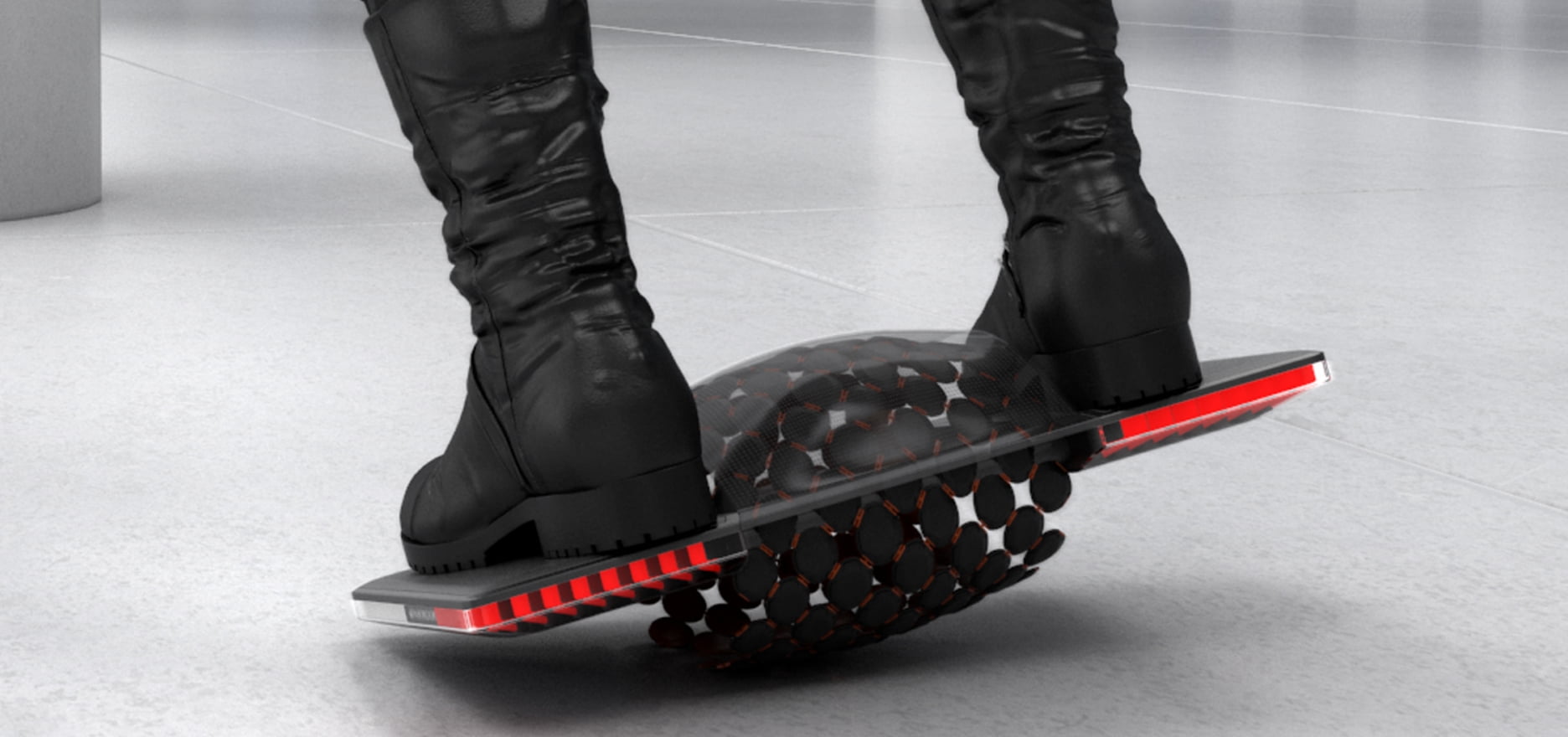
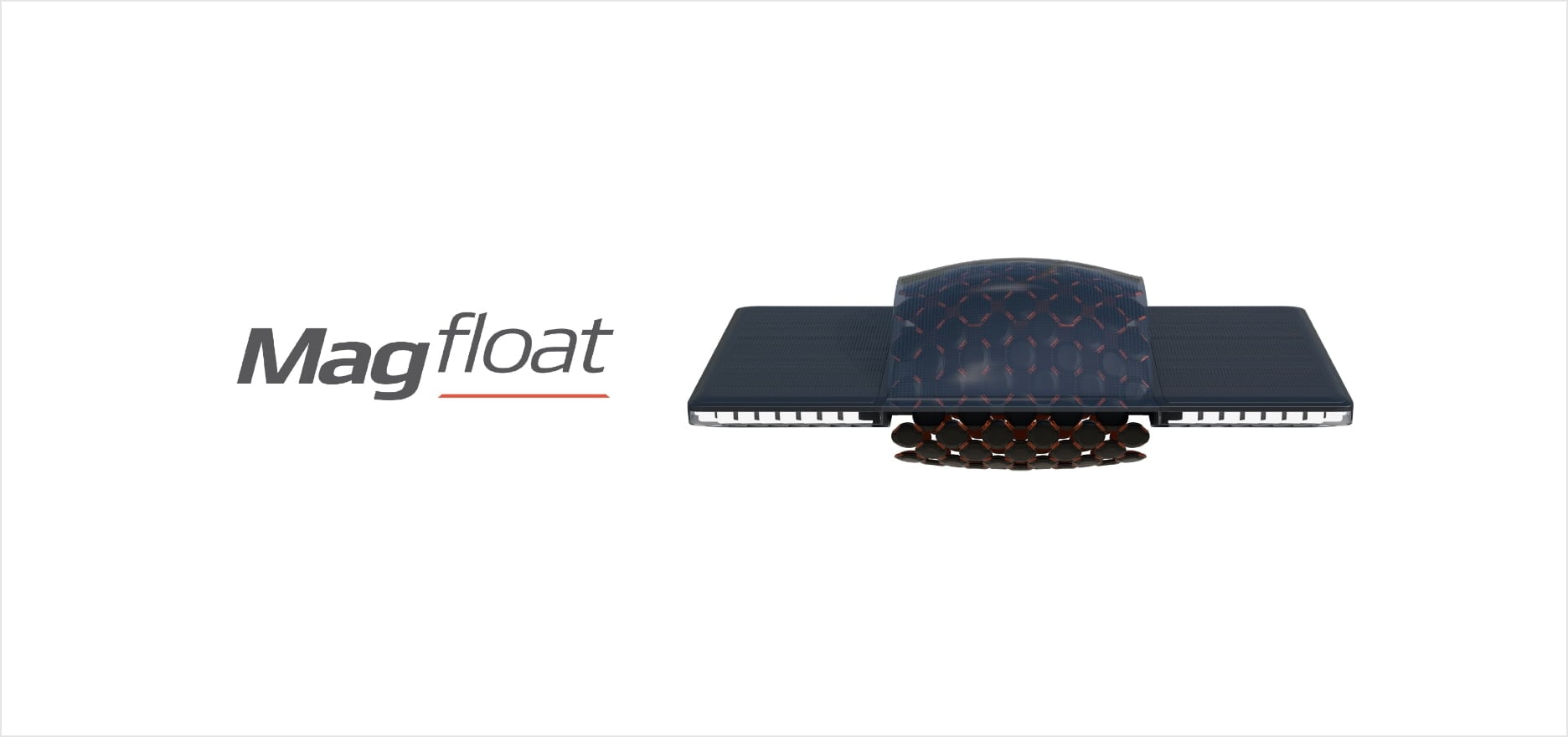
One-Seater Comfort Mobility Ⅱ
Flexup, a future-oriented one-seater mobility mode, can freely corner even on flat ground. As the split tread expands or contracts, the mode can move without reserve even if it encounters stairs while driving on the road.

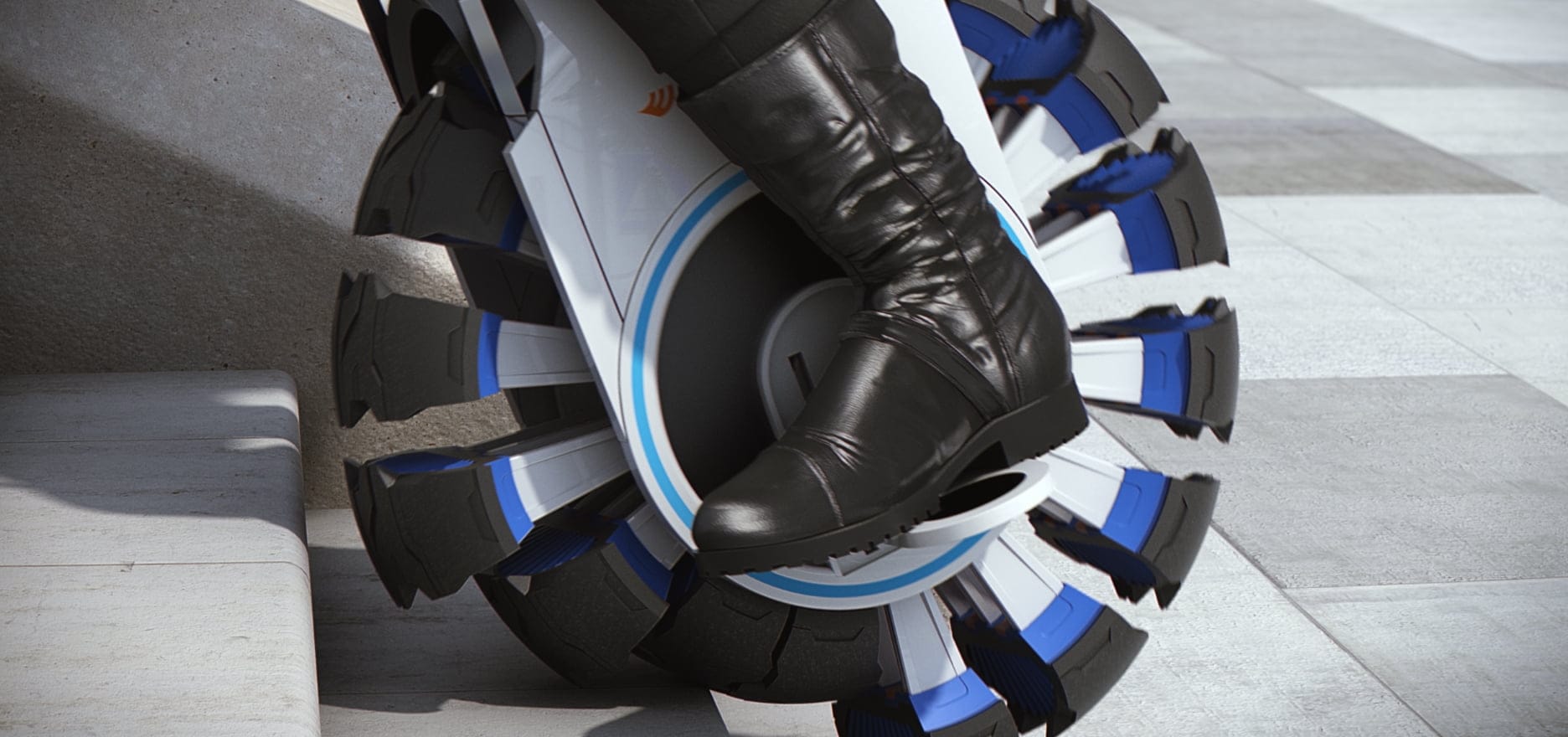
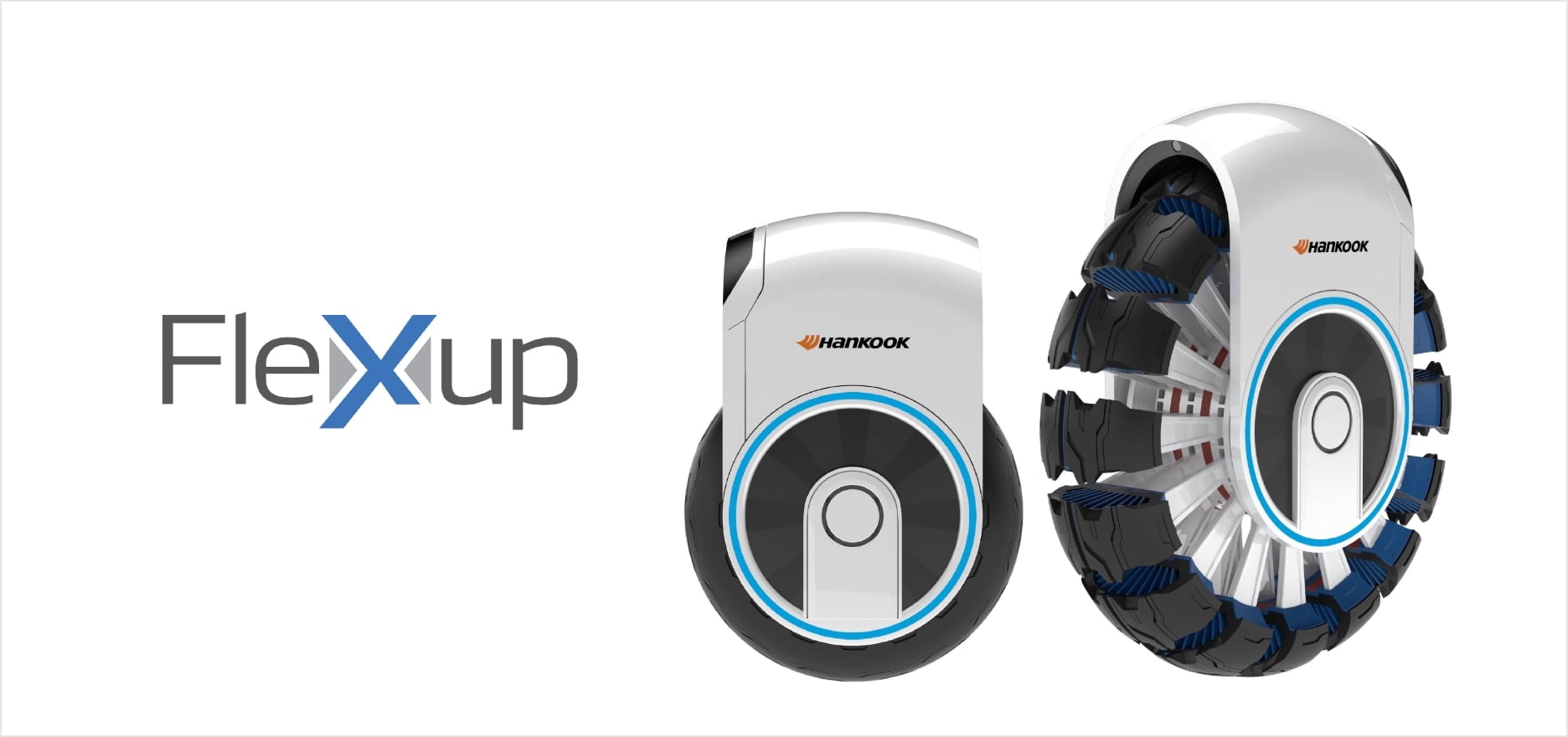
One-Seater Flexible Mobility
iPlay, the one-seater mobility mode, drives on two wheels with maximum efficiency and cornering performance. Its flexible suspension structure enables the minimization of volume in the standby mode, and it demonstrates ultimate performance even while driving at high speed or cornering as the wheel angle changes.
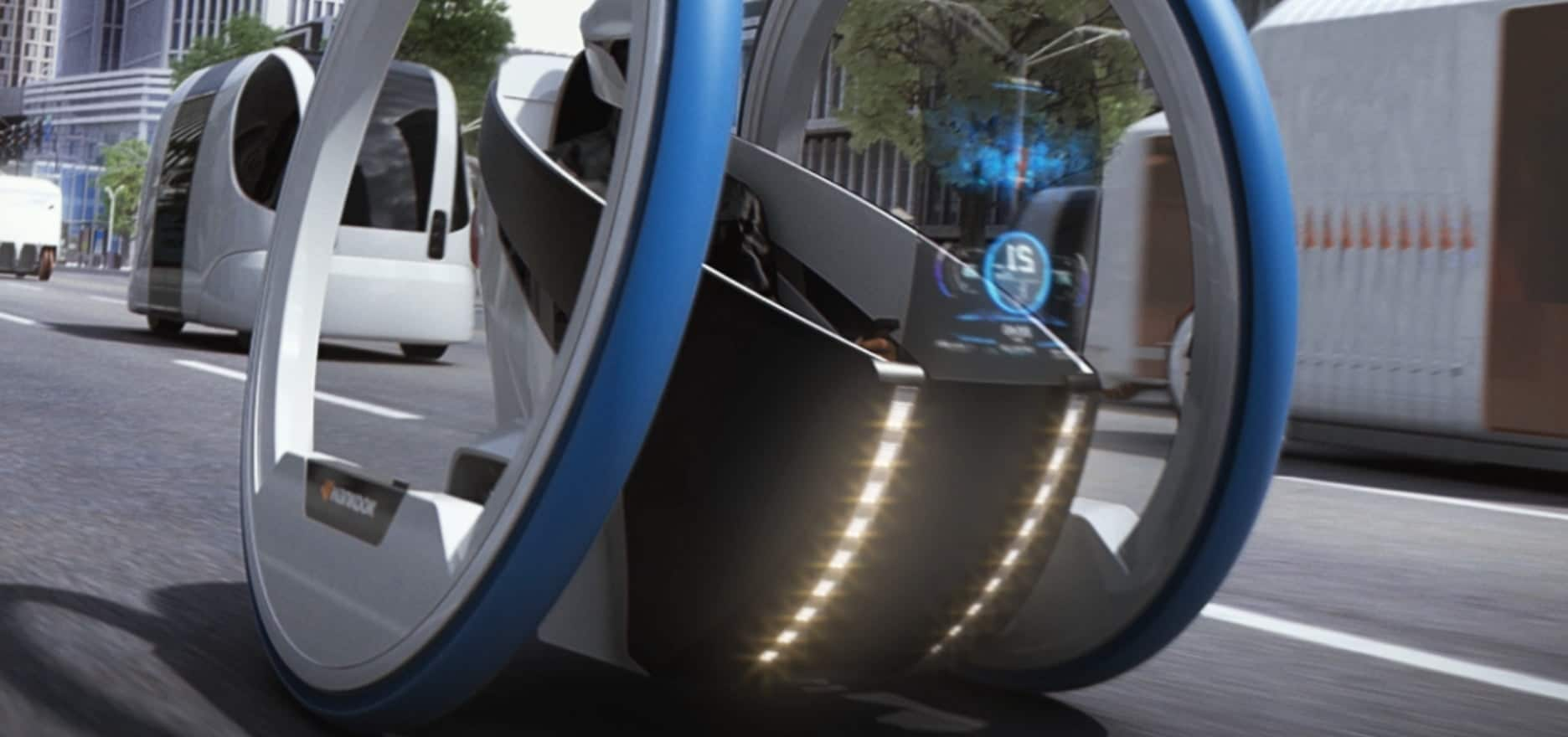
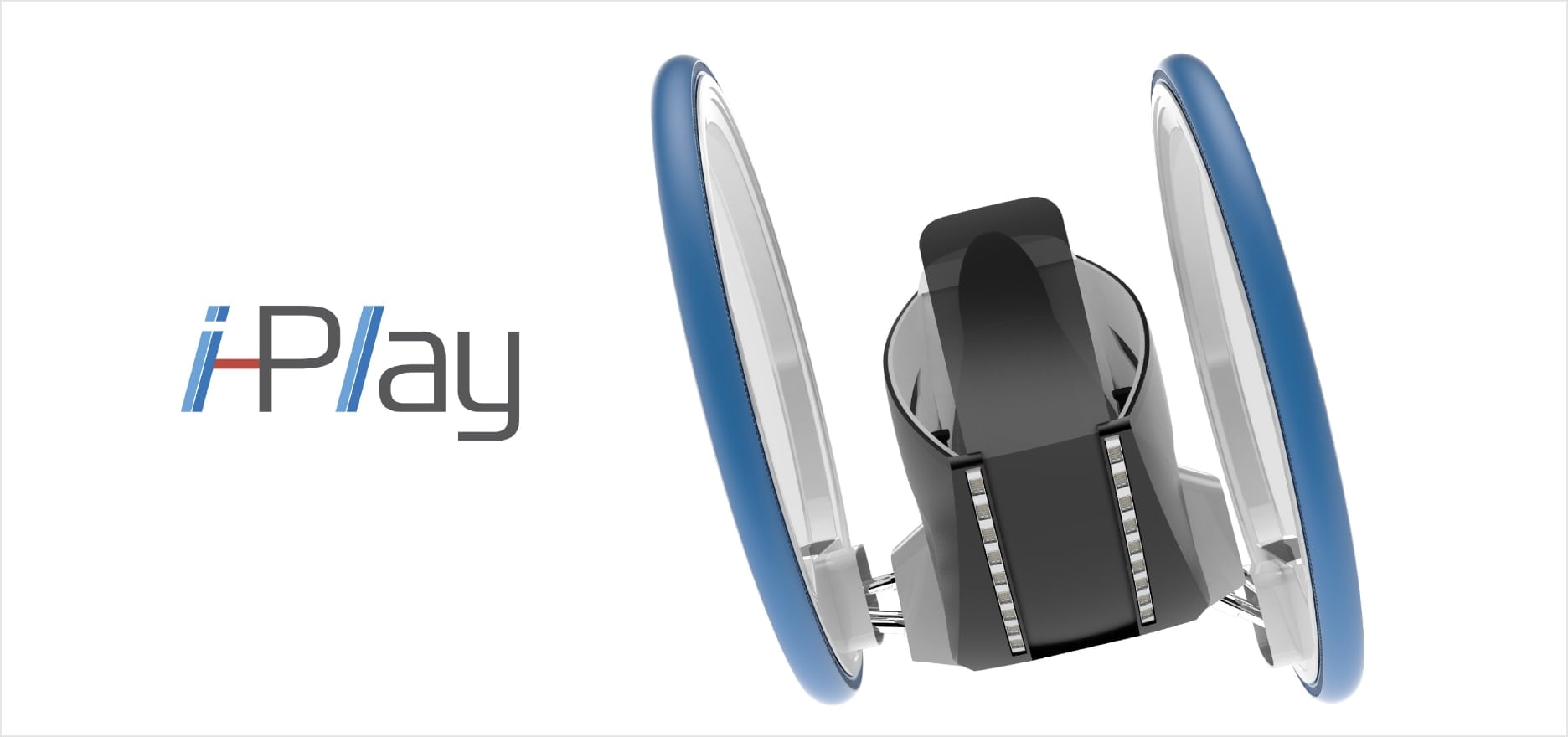
Multiple-Seater Flexible Mobility
Autobine, an autonomous bus, automatically mounts and removes tires, and changes its body size depending on the number of passengers. The self-powered tire even carries an intelligence system that detects the weight of the vehicle and automatically mounts to the bus.
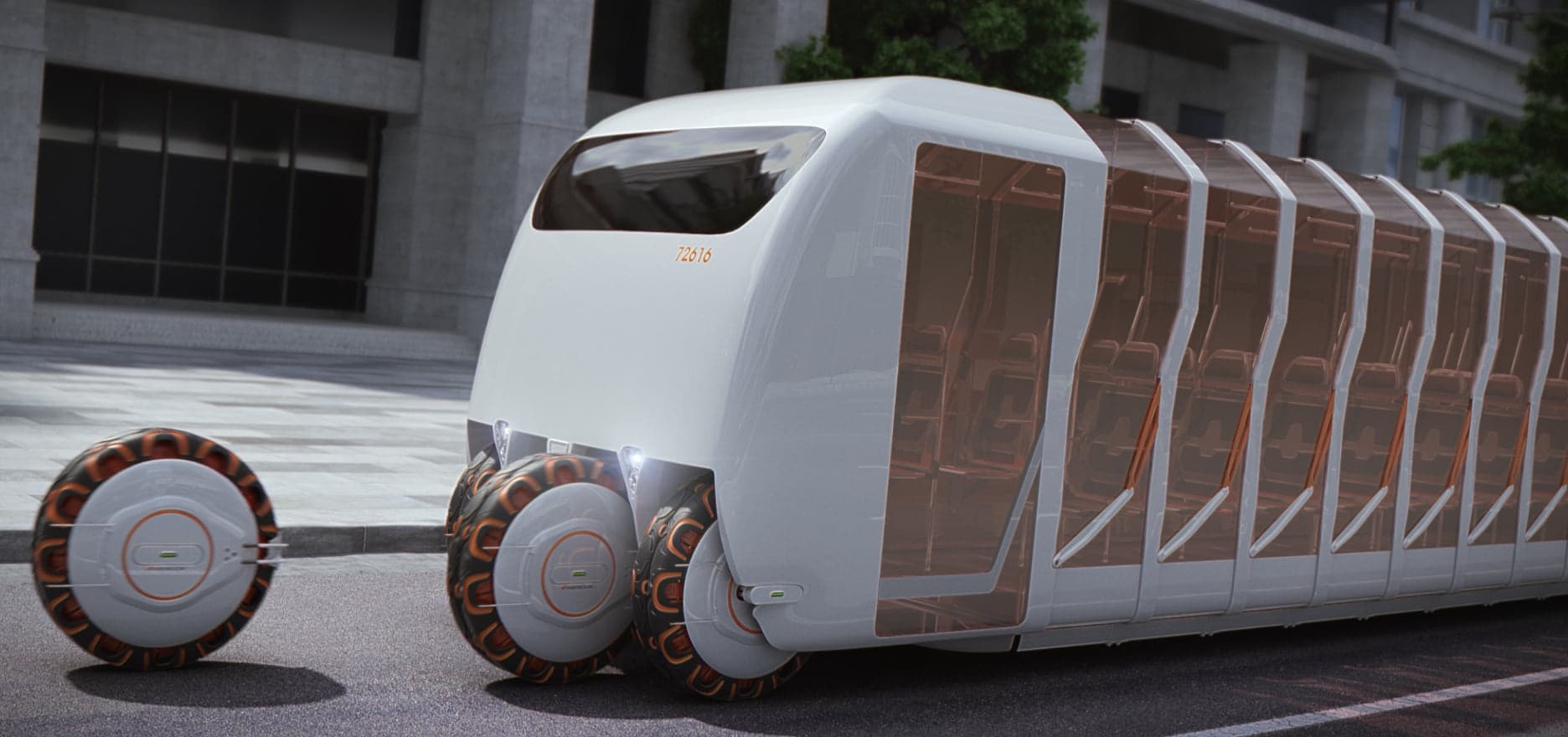
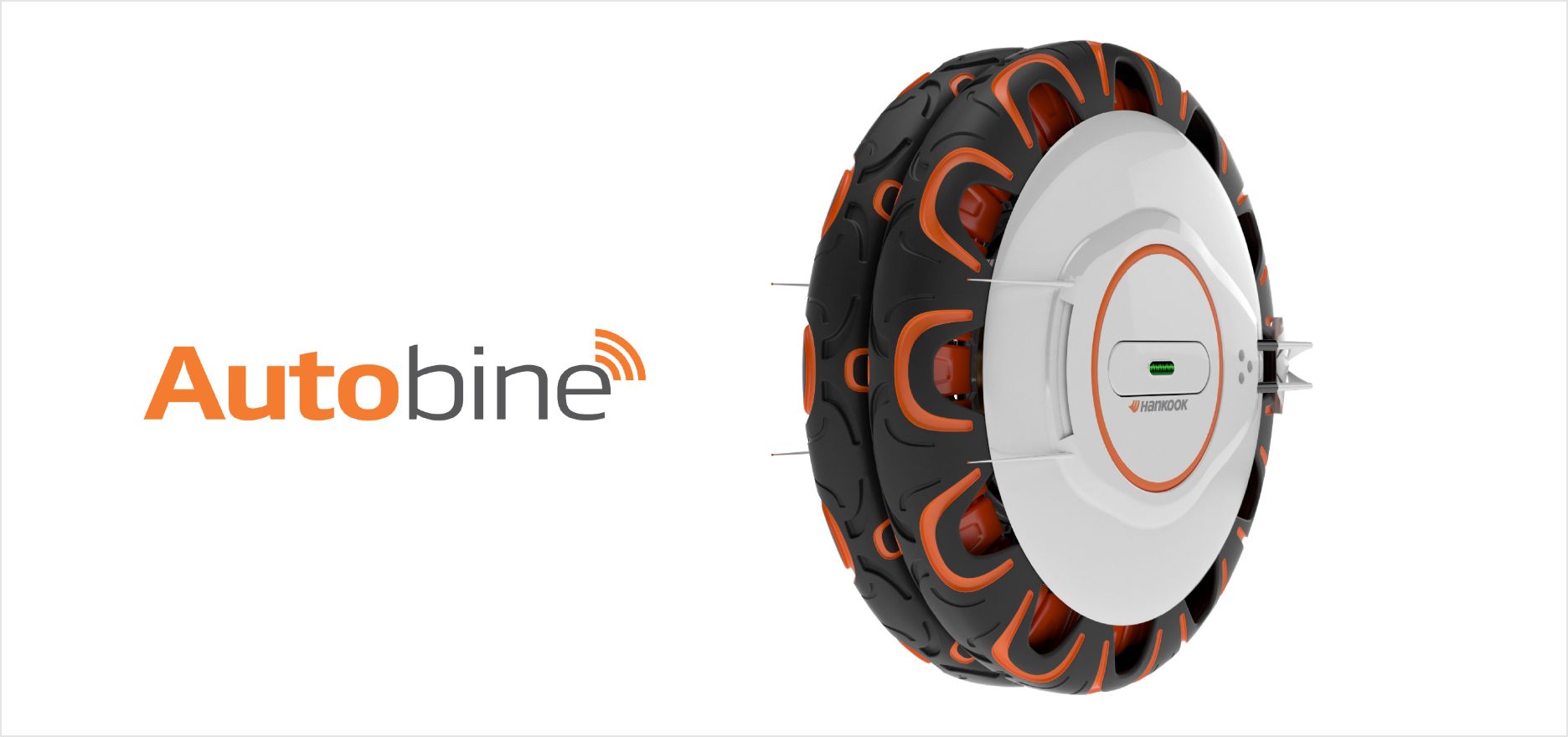
Police Comfortable Mobility
Shiftrac is a mobility mode available for police cars only and provides an agile and convenient driving experience to deal with an increasingly complex city. Its block shifting built around the physics of ice skating enables powerful cornering and rapid lane changes, and guarantees urban safety in a rapid and accurate manner.

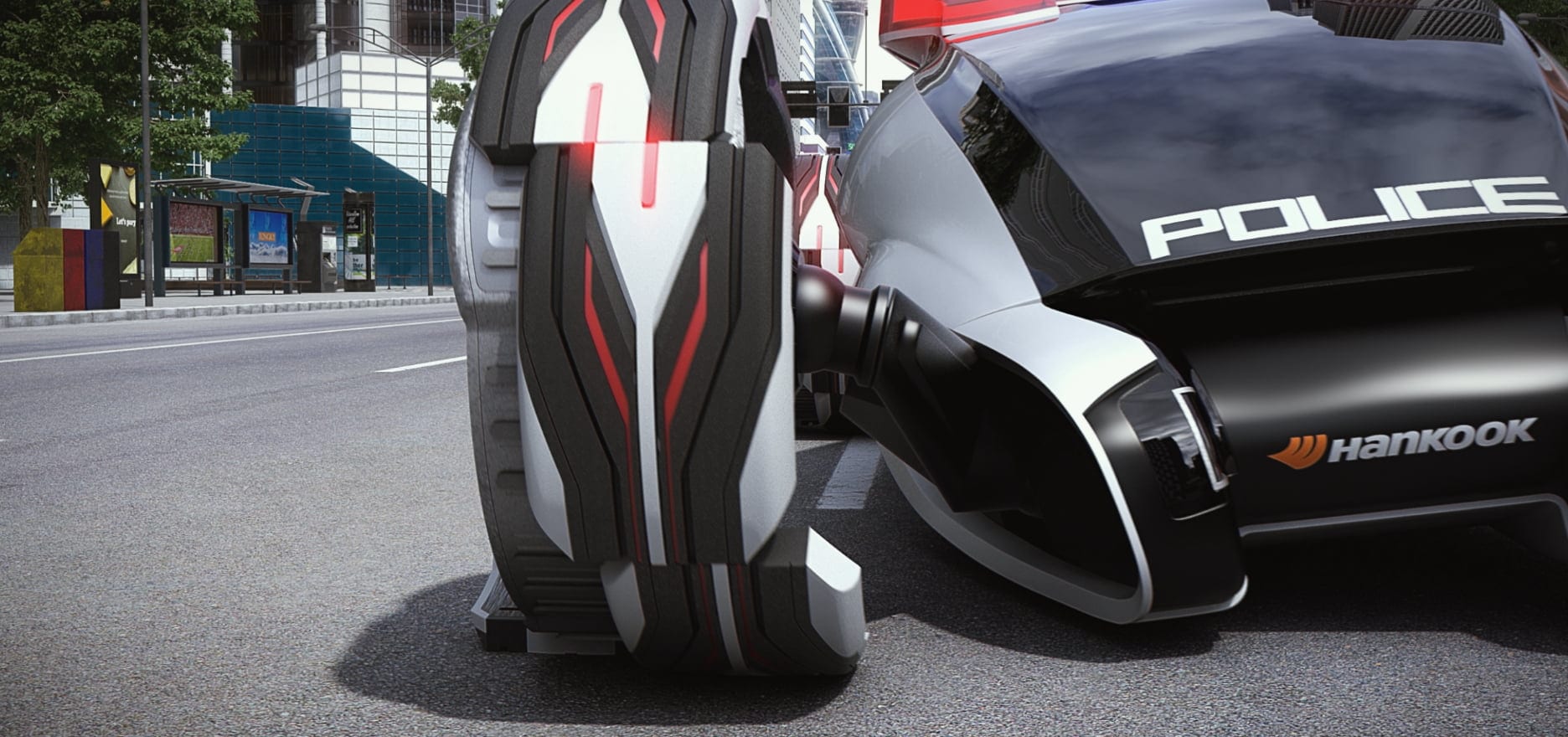
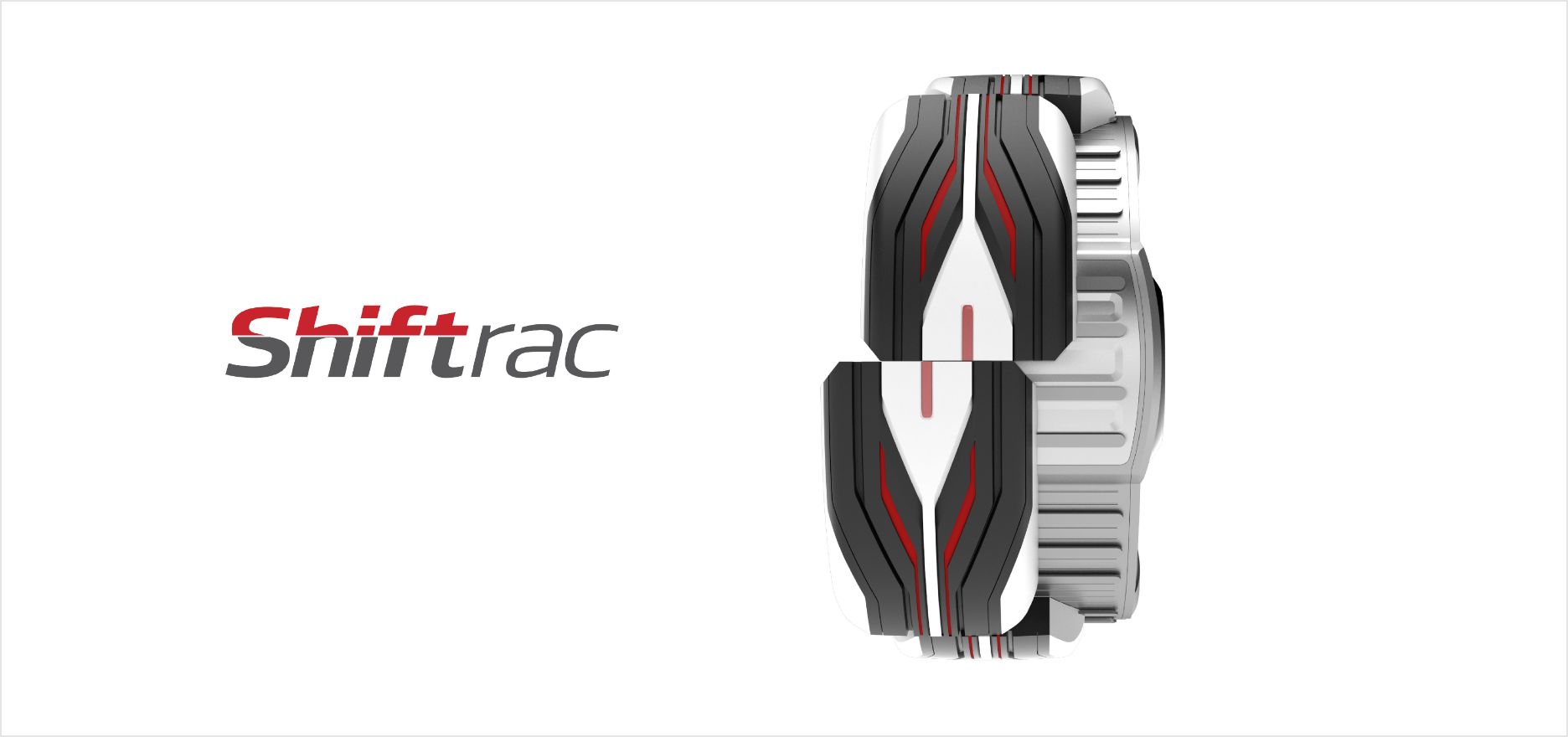


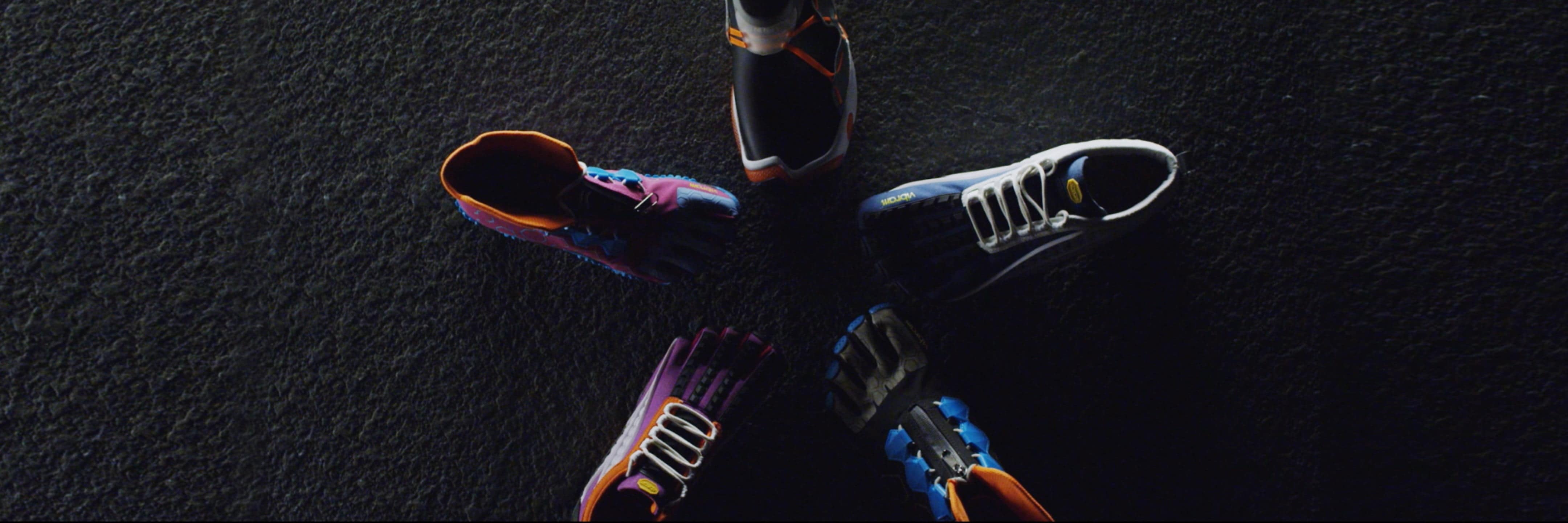
Collaboration with Vibram®
2015
Vibram, the Italian-based world’s No. 1 manufacturer for the outsole of a shoe, has joined forces with Hankook Tire with top-tier technology. The collaboration of the two companies, which serve as robust feet for cars and human beings, has enabled us to launch this unparalleled joint project to offer the ‘pleasure and uniqueness of driving’.

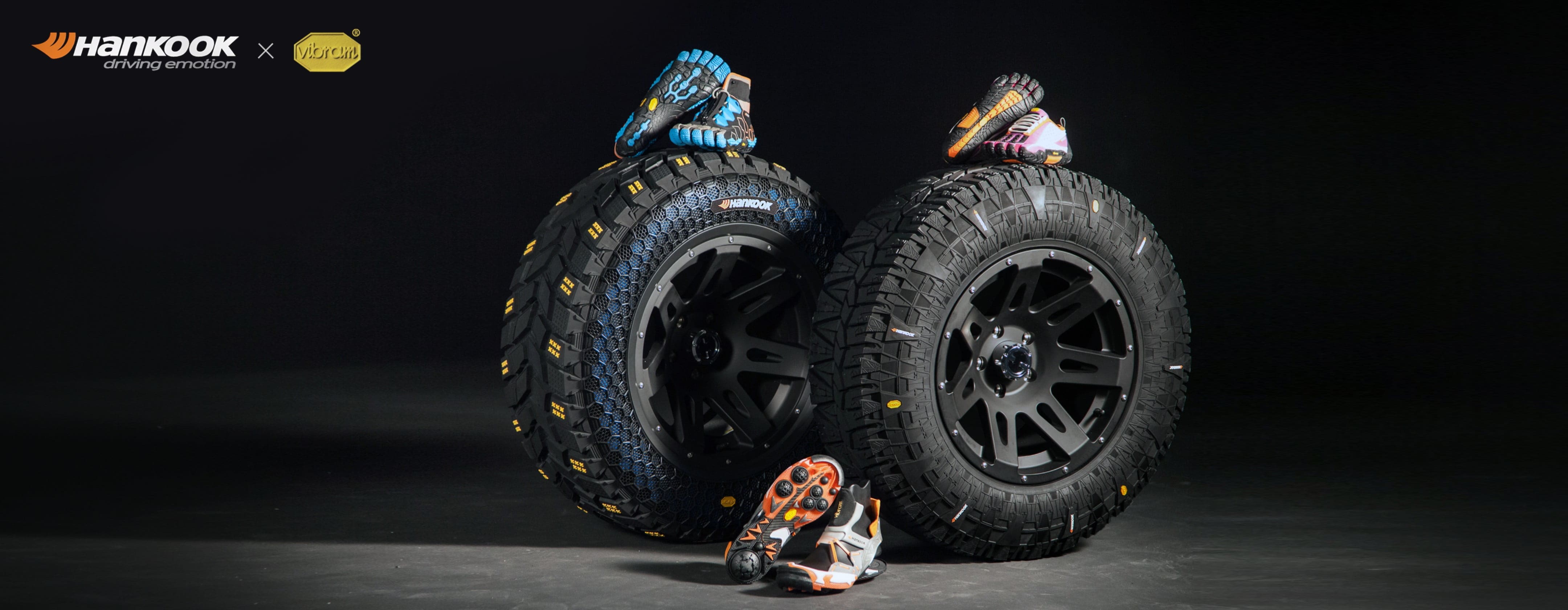

‘Collaboration with Vibram®’
Under the design themes of “Tire go fashionable” and “Shoes embrace dynamic high-end technology”, Vibram’s unique style and Hankook’s technology mixed beautifully. Venturing to embrace a new vision is made possible when two different brands cross over the silo of their industries to pursue innovative convergence.
Sidewalls Enabled by Ultra Light 3D Cocoon Technology
Serrations in woven-knit patterns and block surfaces created at various angles protect tires from shocks.
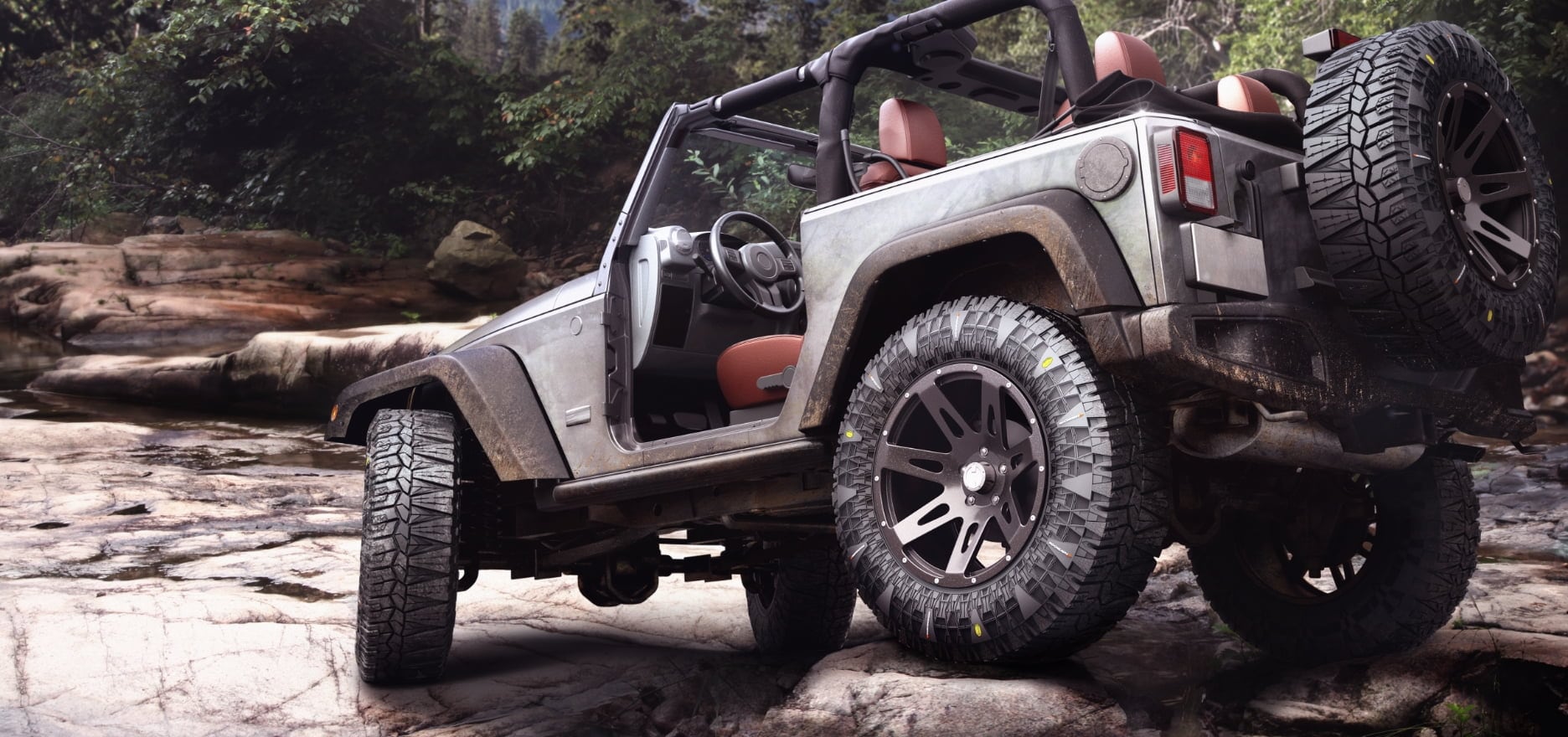
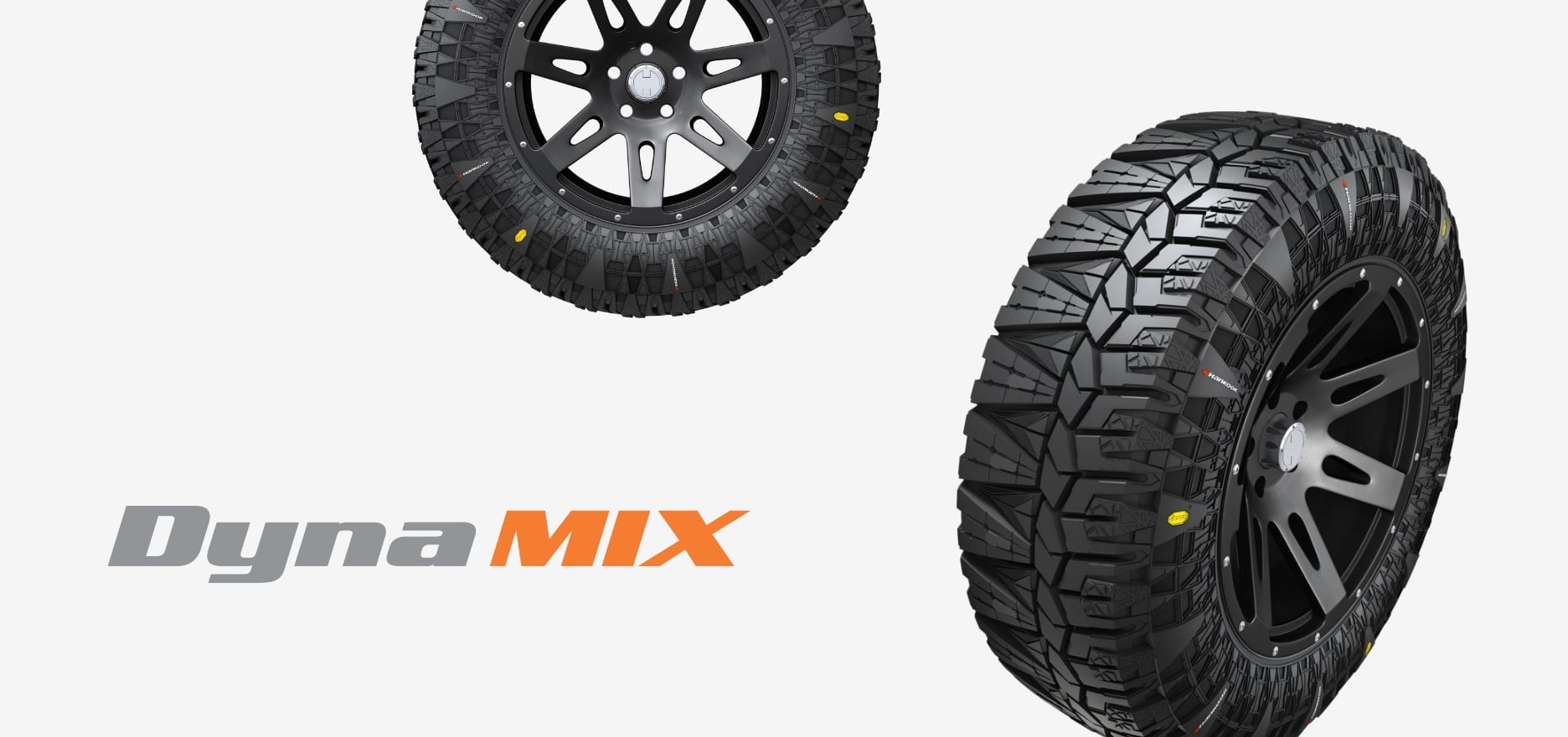
Honeycomb Layered Structure Design
Harnessing Vibram’s iconic design pattern, this structure aims to add traction performance in mountainous topographies. The application of color compounds also enables young drivers the added pleasure of picking out their own tire colors to match their car.

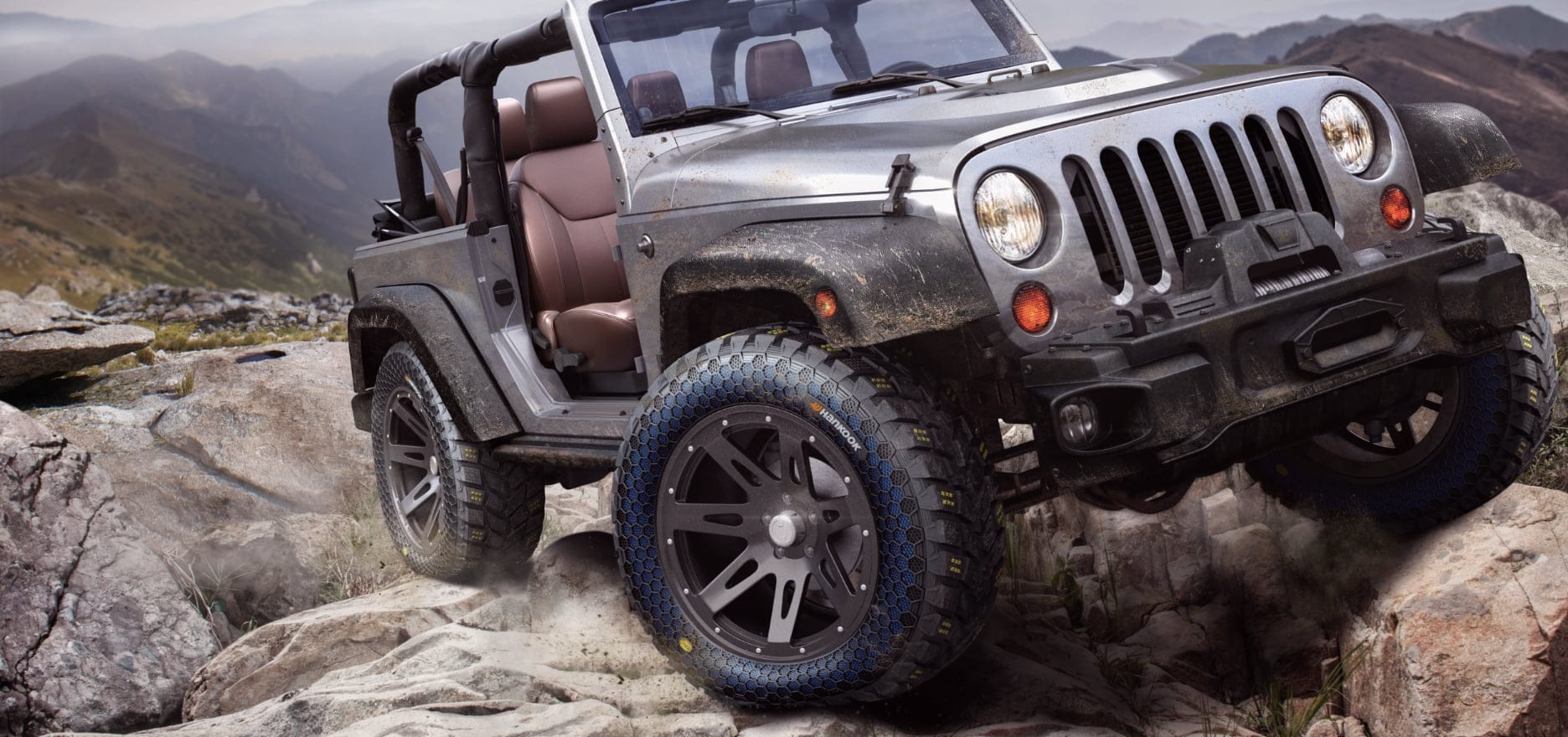

Vibram Concept Footwear
DynaTREK & DynaSTRYKE BKL
Inspired by the design of the concept tires DynaMIX and Dyna SYNC, these shoes embody a novel idea along with an unprecedented functional design.
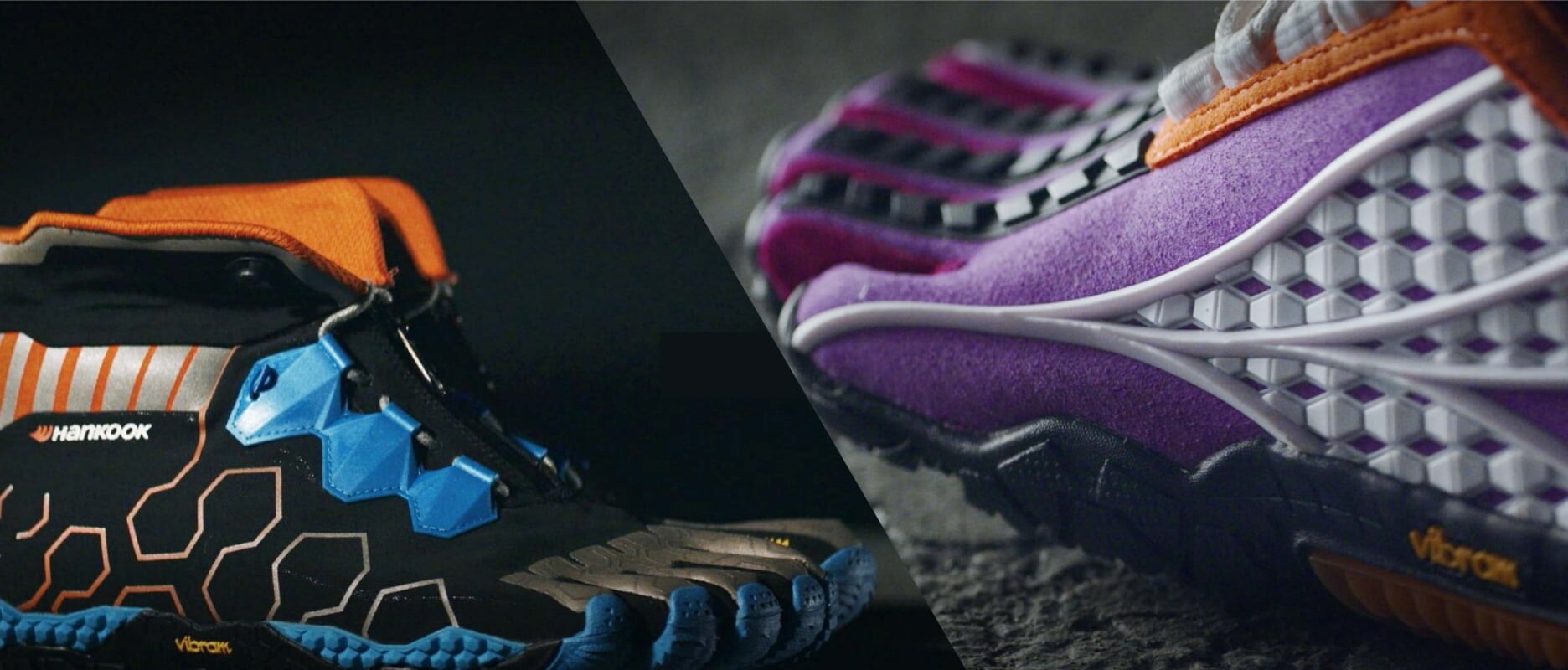
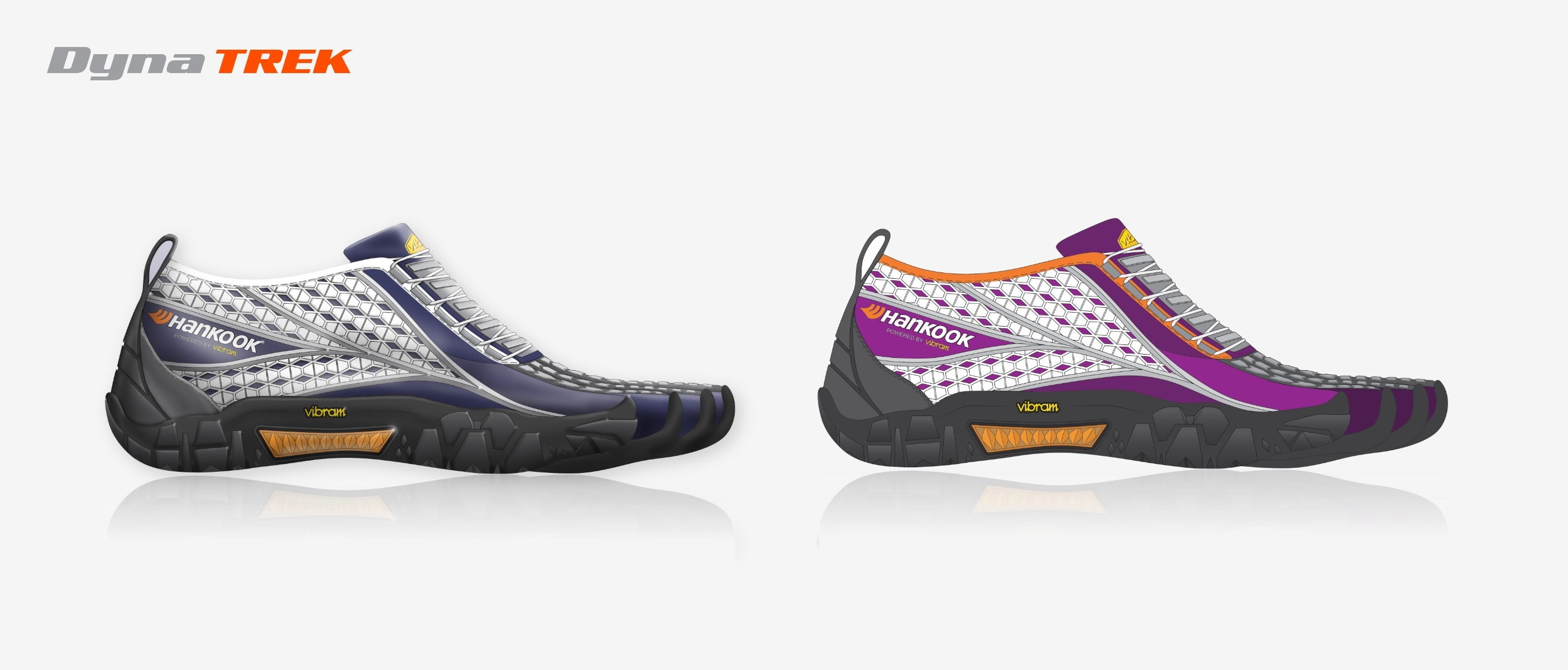
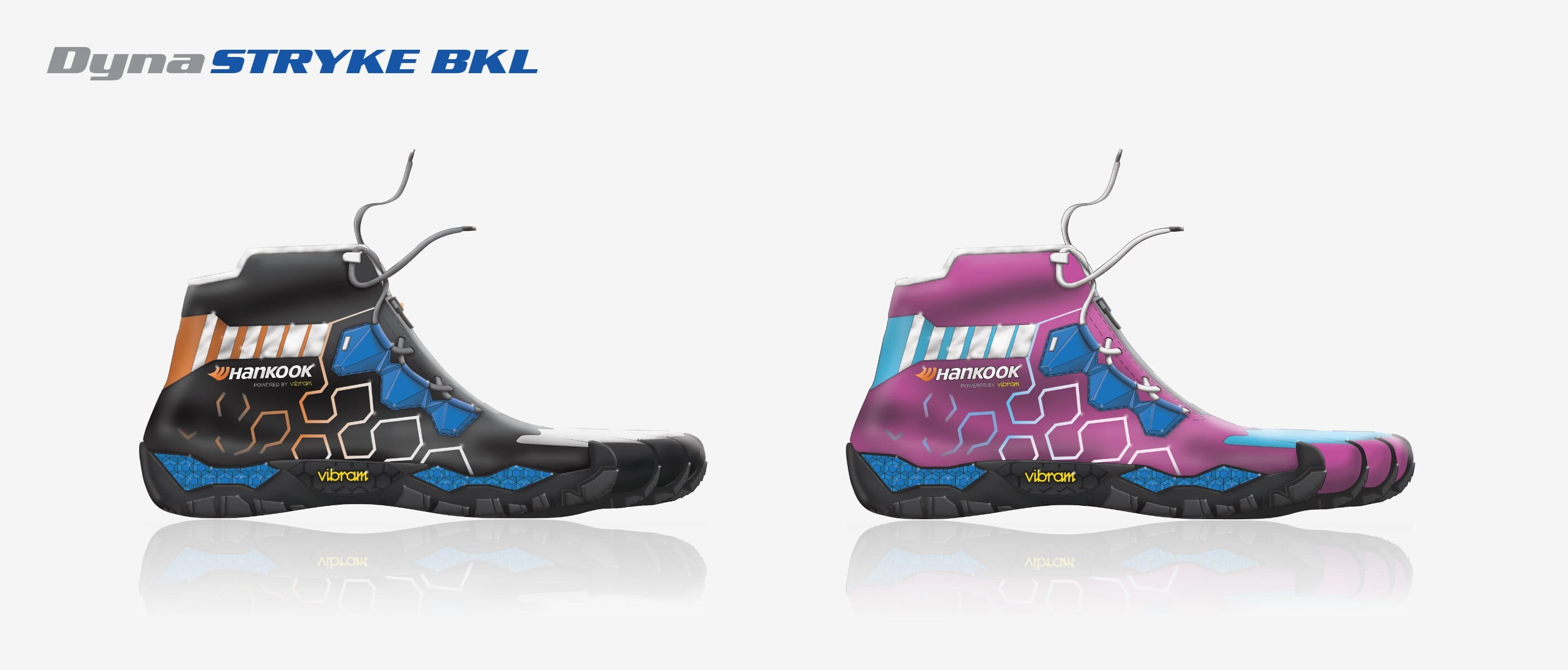
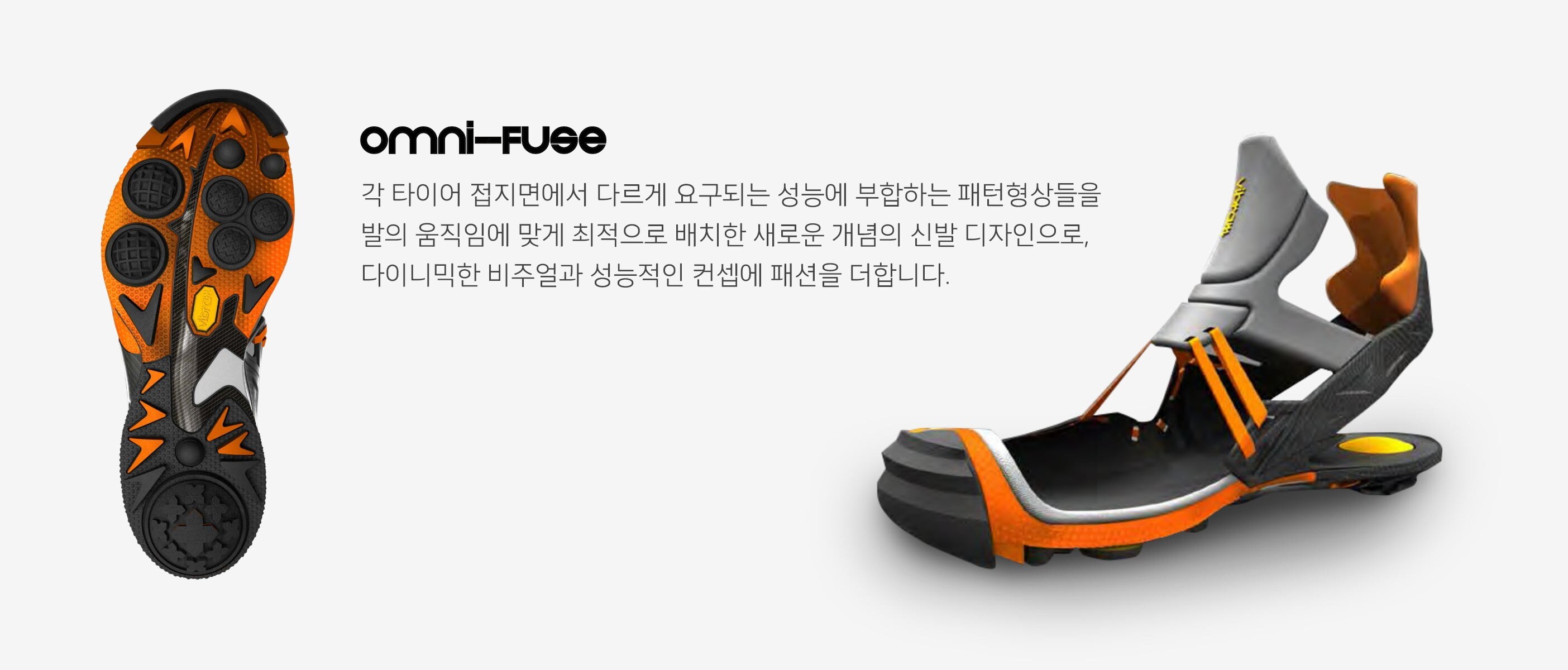
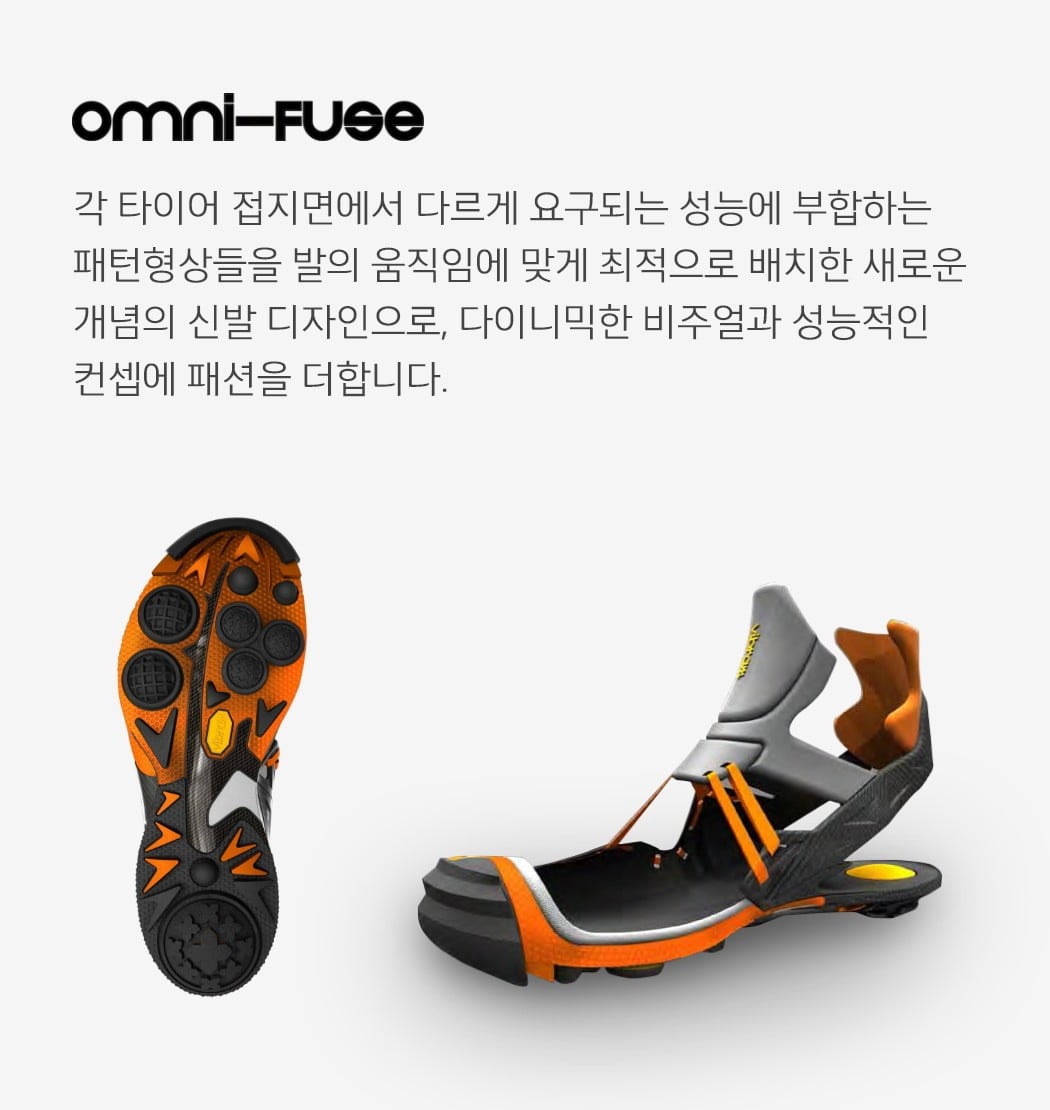


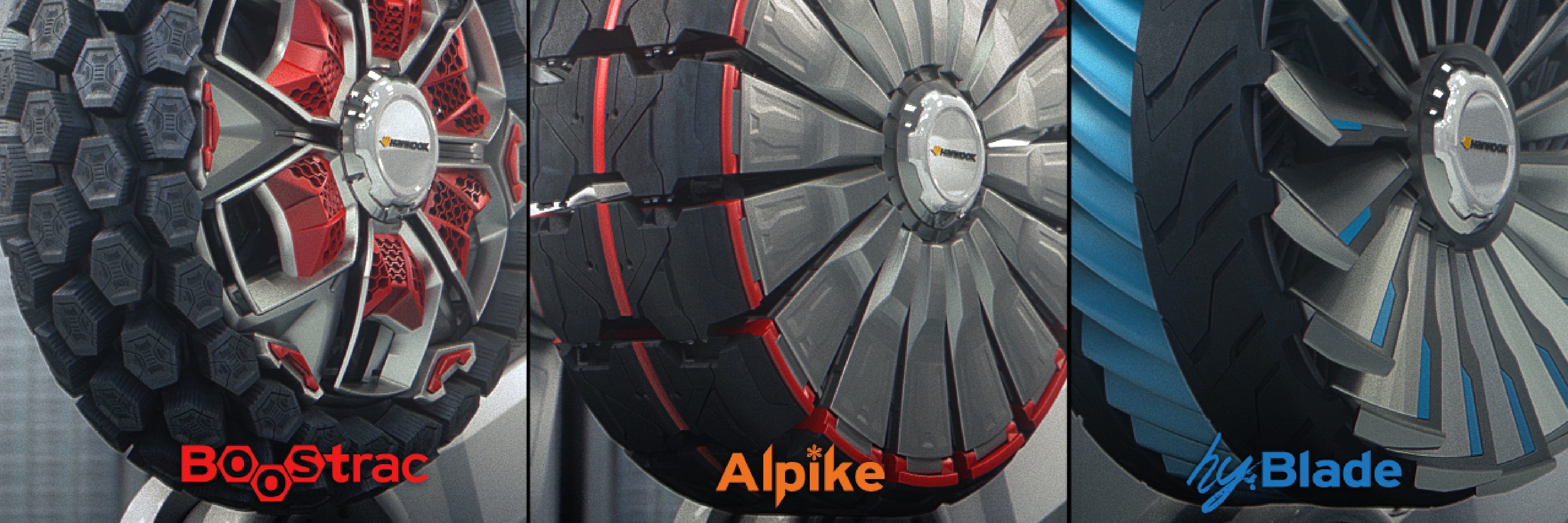
A Great Challenge for a Great Change
2014
In searching for the best way for tires to move forward amid climate change stimulated by global warming,
this concept project is designed to embrace the
driving vision of the future that we must shape with new tires.



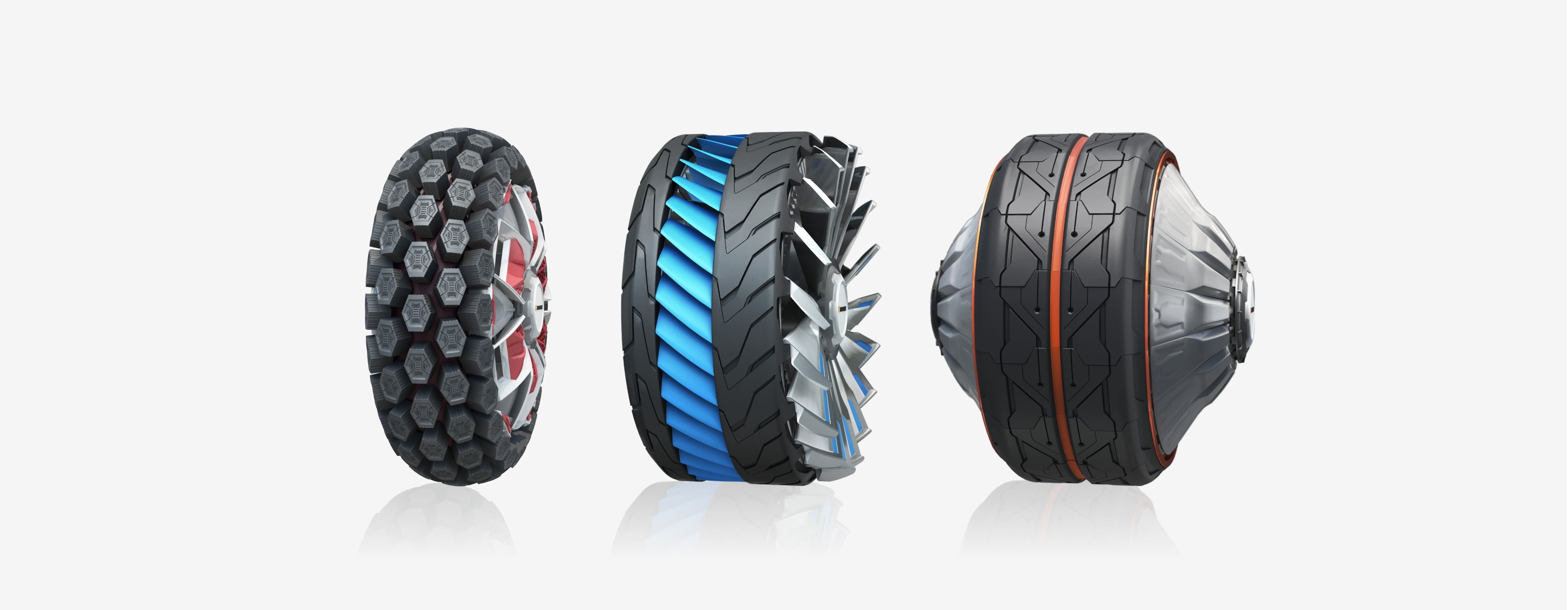

‘A Great Challenge for a Great Change’
We scouted for a tire that delivers the best driving performance in the face of unpredictable environmental changes caused by rapid global warming. After conducting a series of in-depth research, we will showcase three types of concept tires that can expertly handle the widely varying geographical issues caused by abnormal weather conditions such as desertification, heavy rain, and heavy snow.
Variable Tread Block-Structured Design
A variable tread block structure of these tires enables tremendous driving force. The tread blocks that extend in all directions boast unrivaled three-dimensional traction, providing the vehicle with the grip to drive on desert terrain without any issues. As it raises the vehicle's ground clearance, it guarantees the excellent components needed to navigate rough roads.



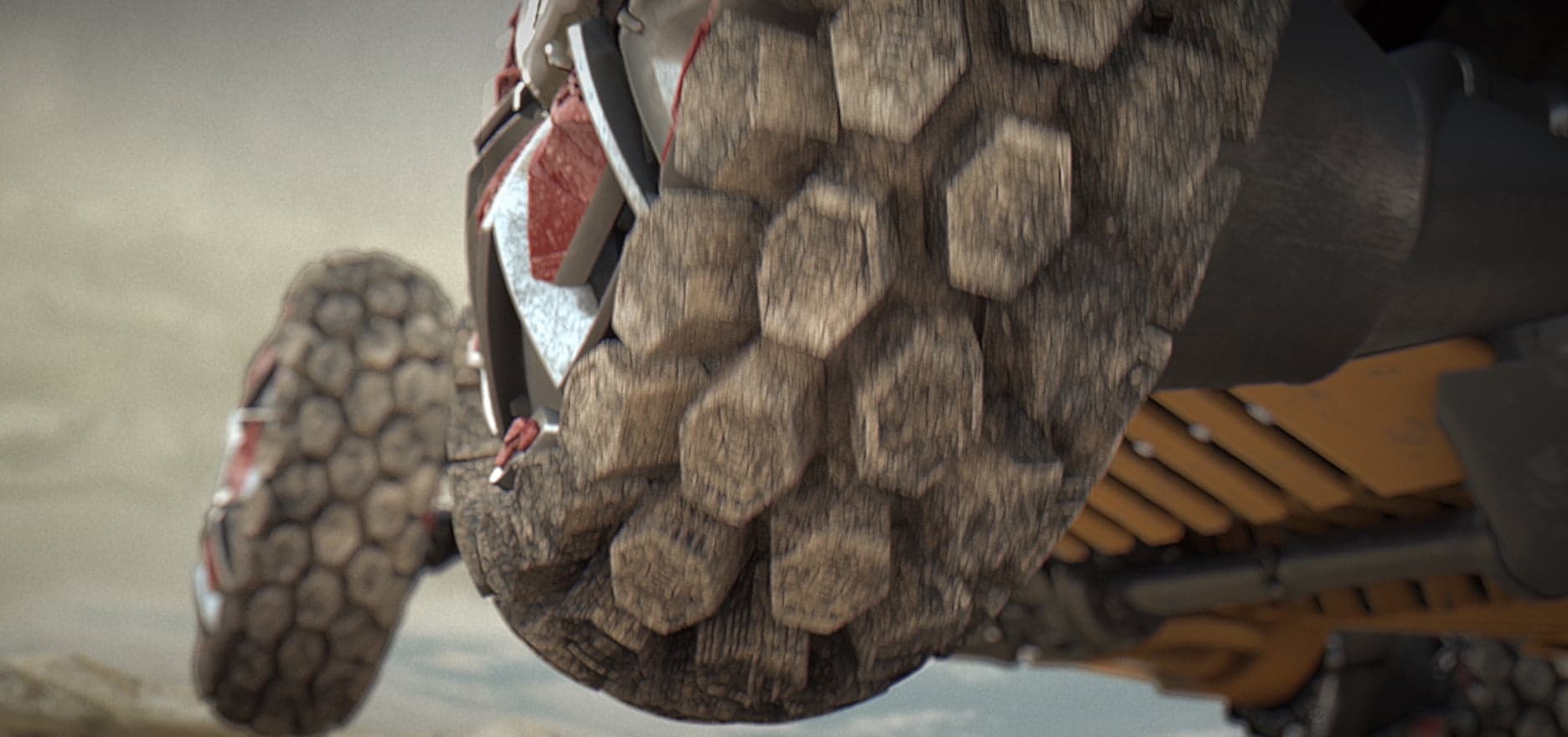
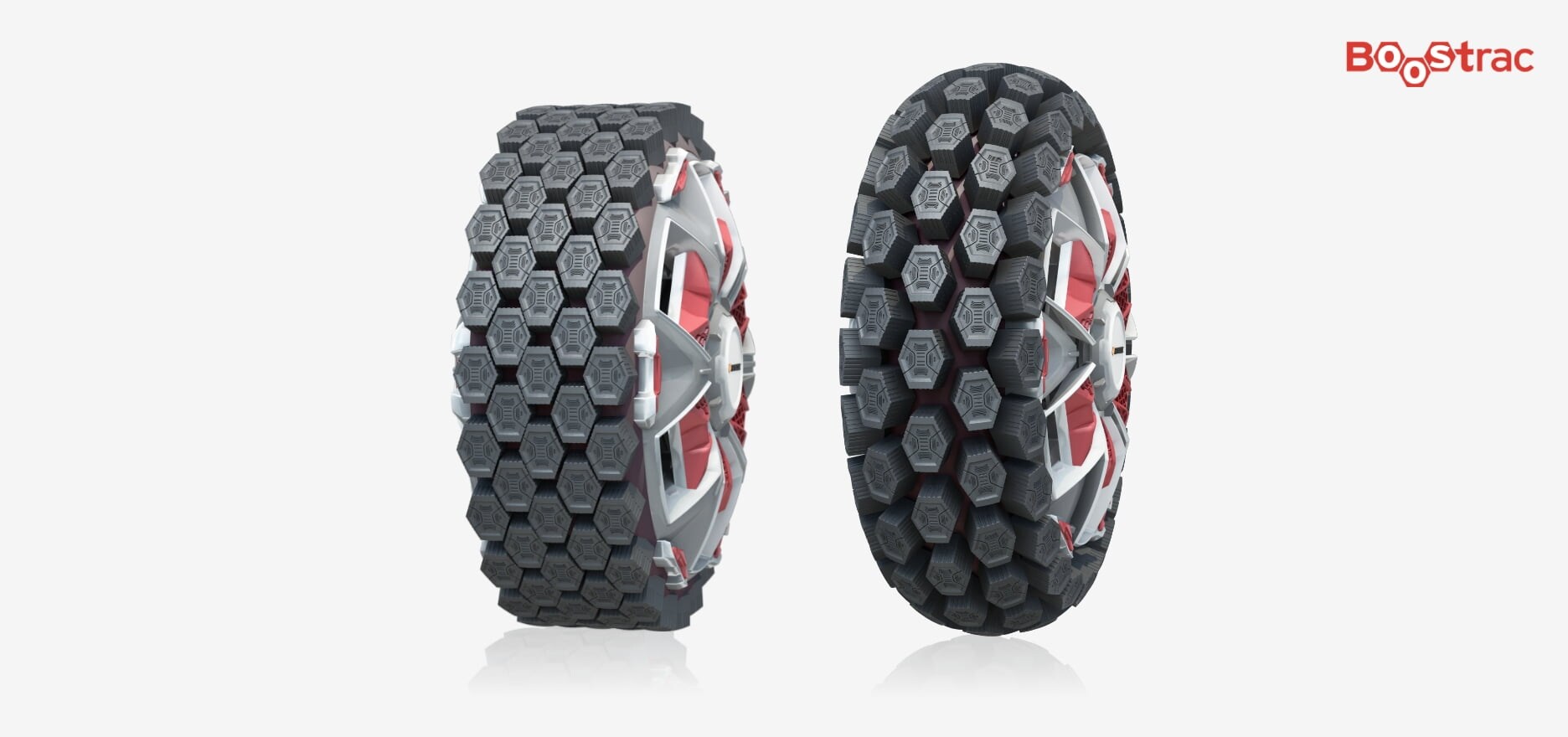
Tread Blade-Structured Design
This tire capitalizes on the tread’s blade structure to completely disperse water from beneath while driving in the rain. Even when submerged, the waterwheel principle of the blade and the additional resistance of the side spokes ensures a strong driving force.



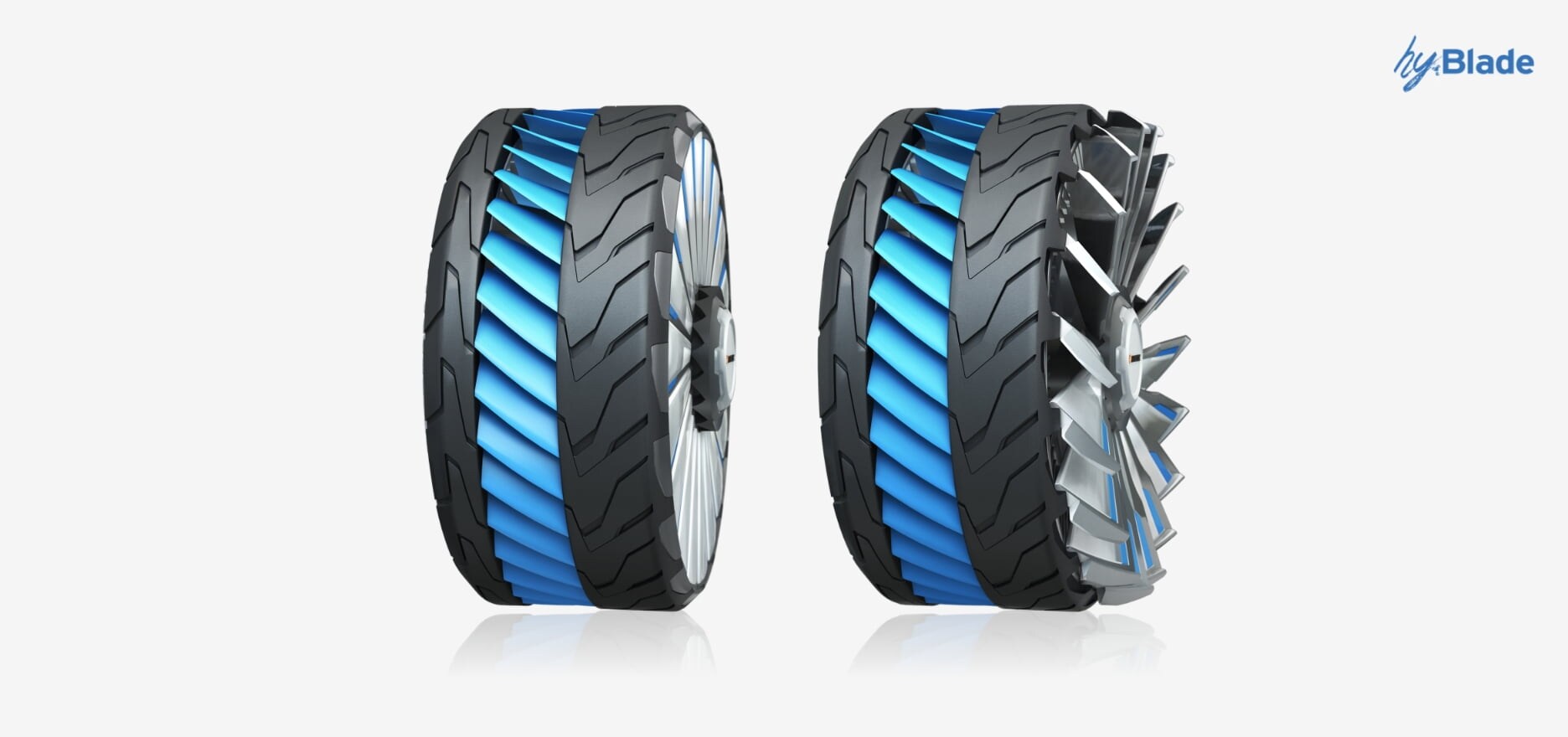
Circumferentially Extended Design
Its circumferentially extended structure supports the vehicle as it drives in harsh winter conditions without any issues. The vehicle's much higher ground clearance improves its ability to navigate rough roads and its increased tread assures greater grooves, thus increasing its traction. Sharp studs exposed between the grooves bring perfection to powerful driving even on snow and ice-covered terrain.


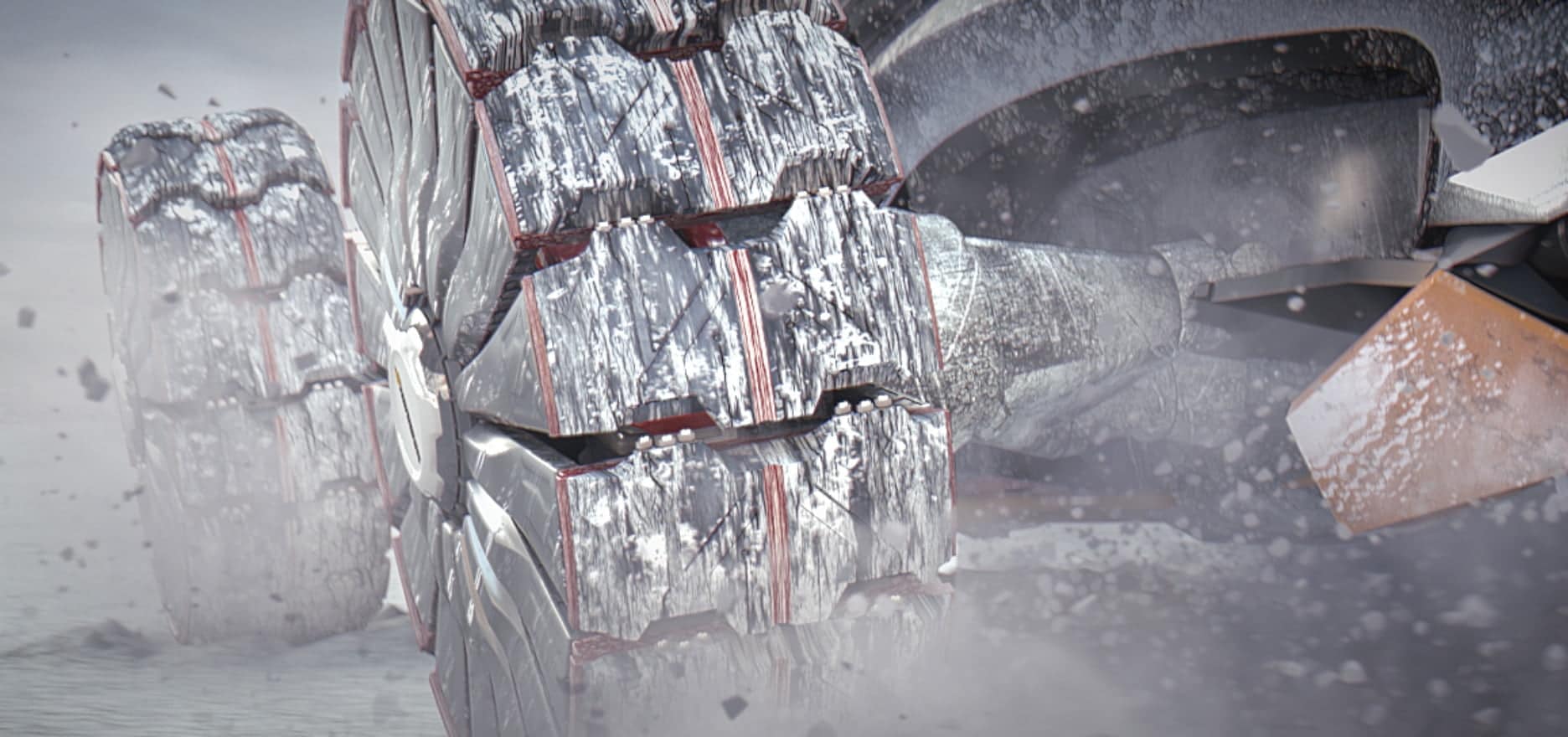
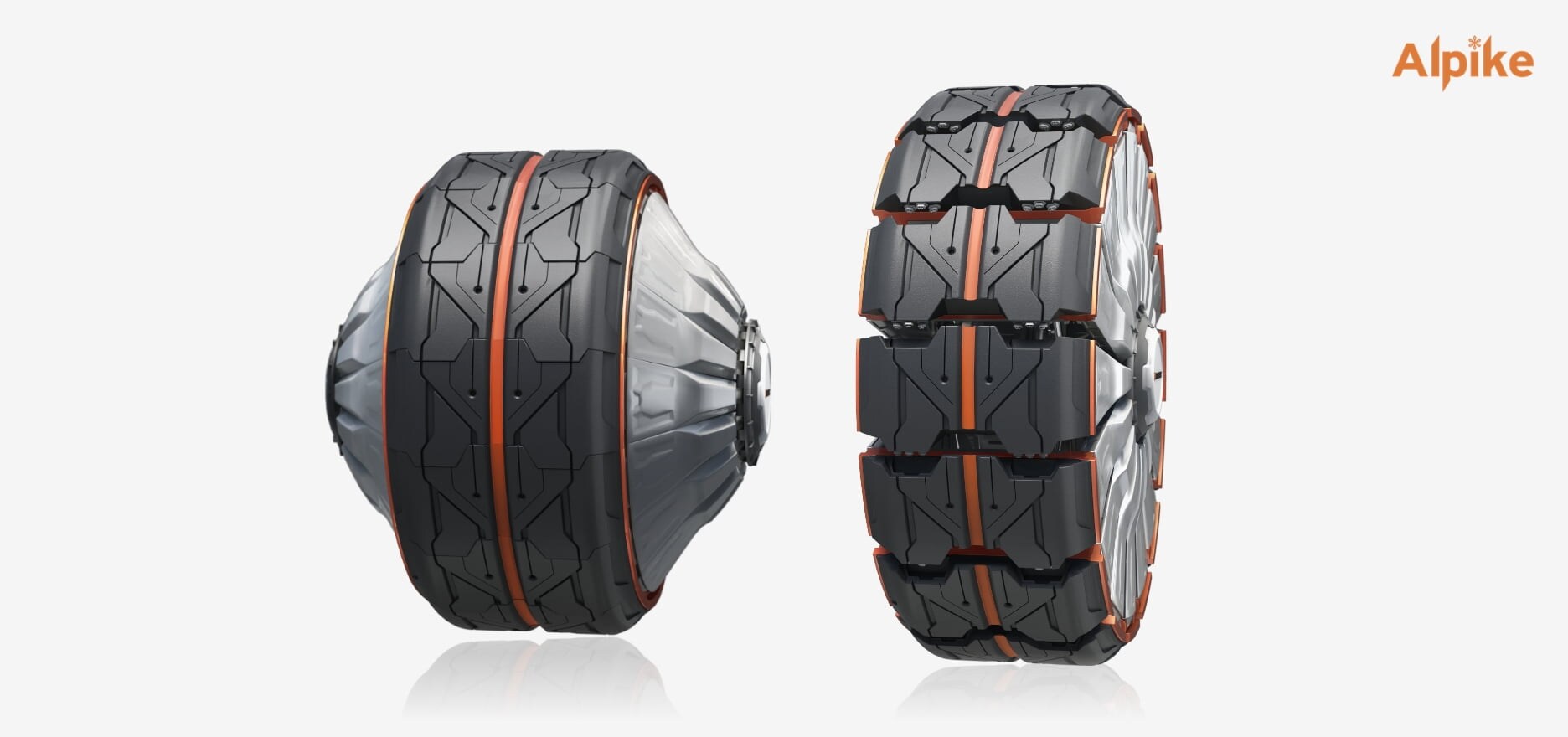


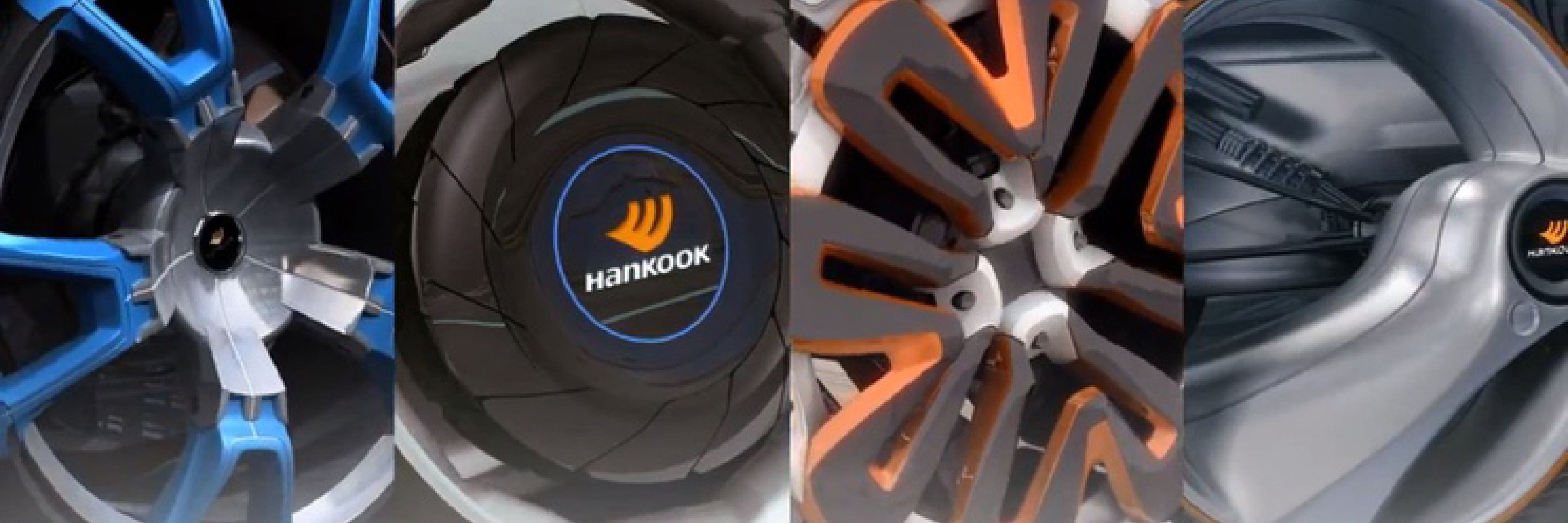
The Way to the Future
2012
In search of tires suitable for numerous driving conditions that will emerge in the future,
this concept project is designed to present the vision of
future driving.




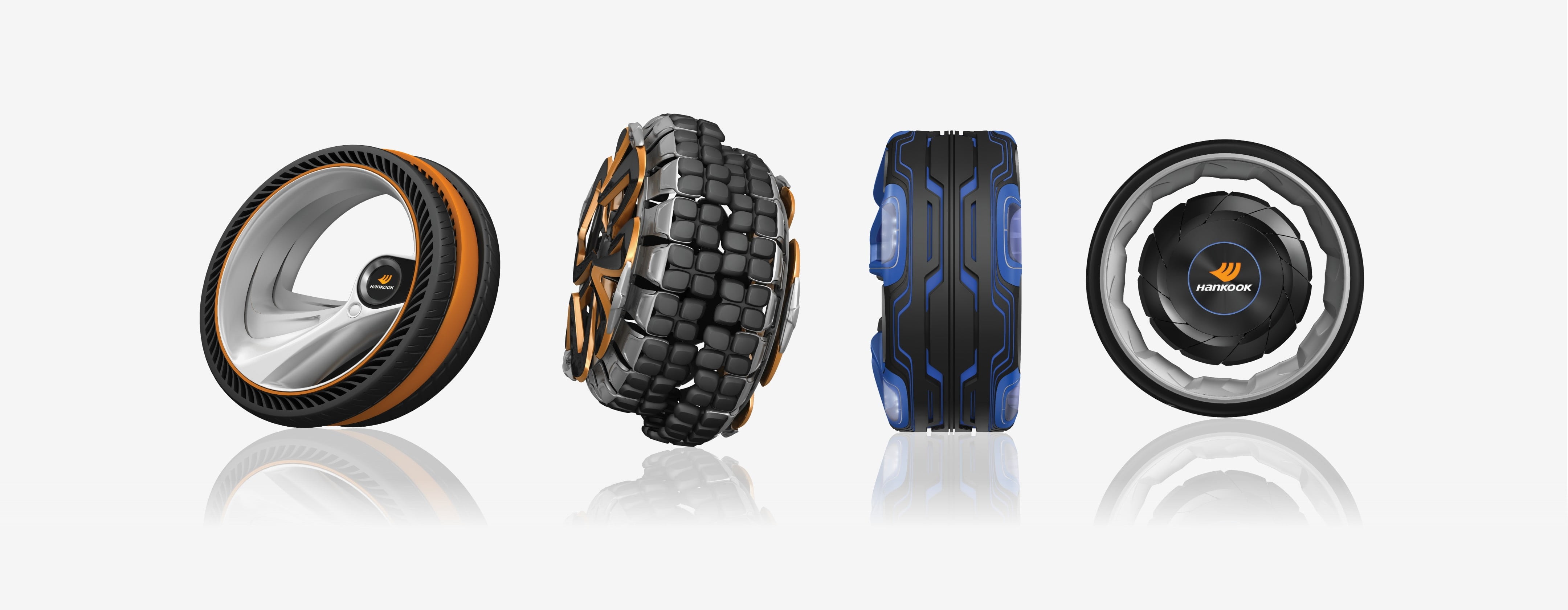

‘The Way to the Future’
The core of driving starts with the tires, not the cars. In its element, the tire is a component intended to closely connect the driver with the ground and endure the effects brought by the ground conditions. We unveil to you the ultimate concept tires to deal with the varying driving environments (extreme cornering, exhilarating adventure, fuel efficiency, and intelligent future tire).
Variable Hybrid Tires
The shape memory alloy located inside the tread changes from moment to moment in line with the changing circumstances. This tire demonstrates two completely opposite performances, from the sports mode to the fuel efficiency mode.



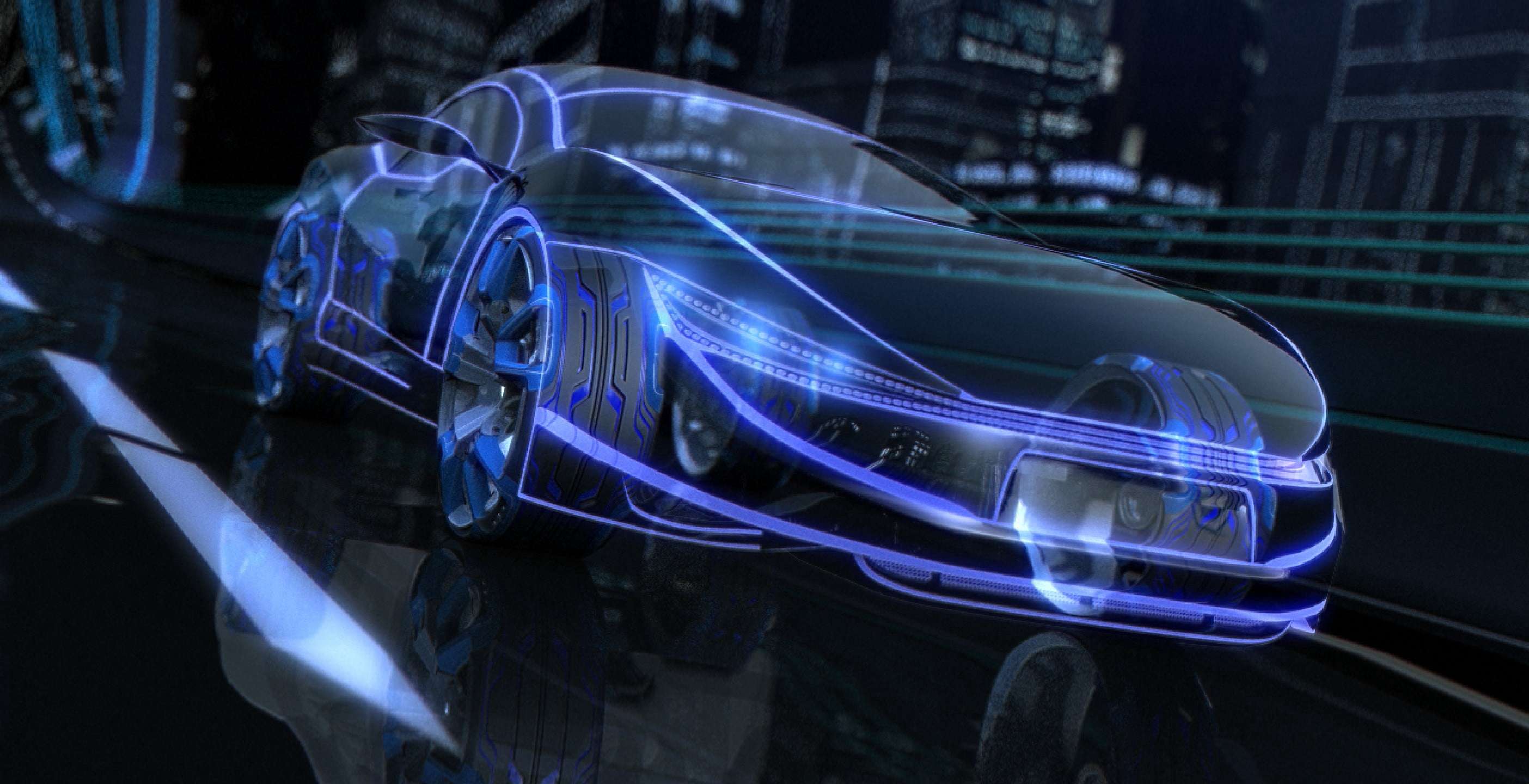
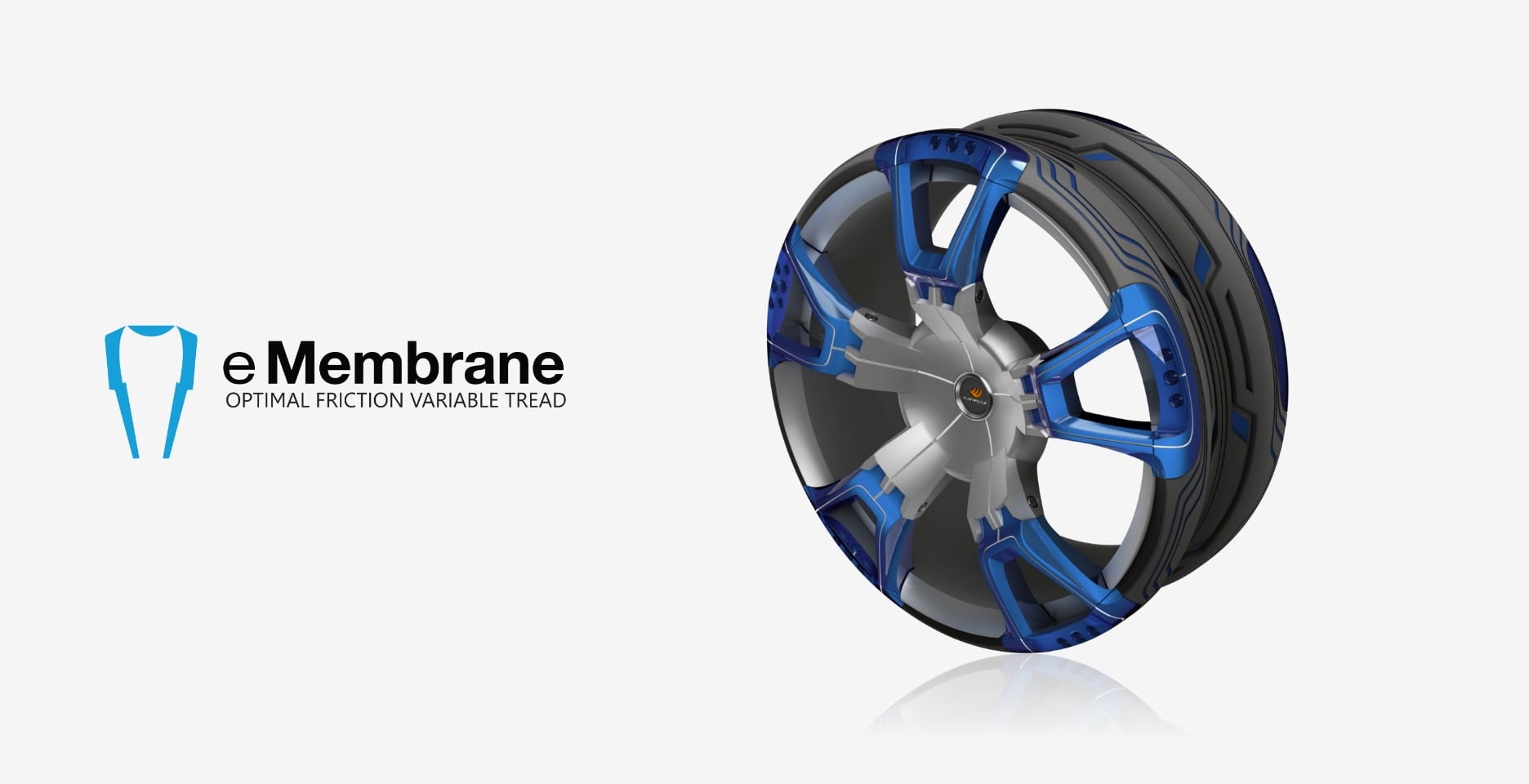
The Revolution of Sport Tires
This is a non-pneumatic tire that consists of three different parts. This performance tire relies on the ‘tiling system’ to assure no loss in the speed and balance even when extreme cornering and its powerful traction enables the drive to reach higher speeds than that achieved in the straight section.

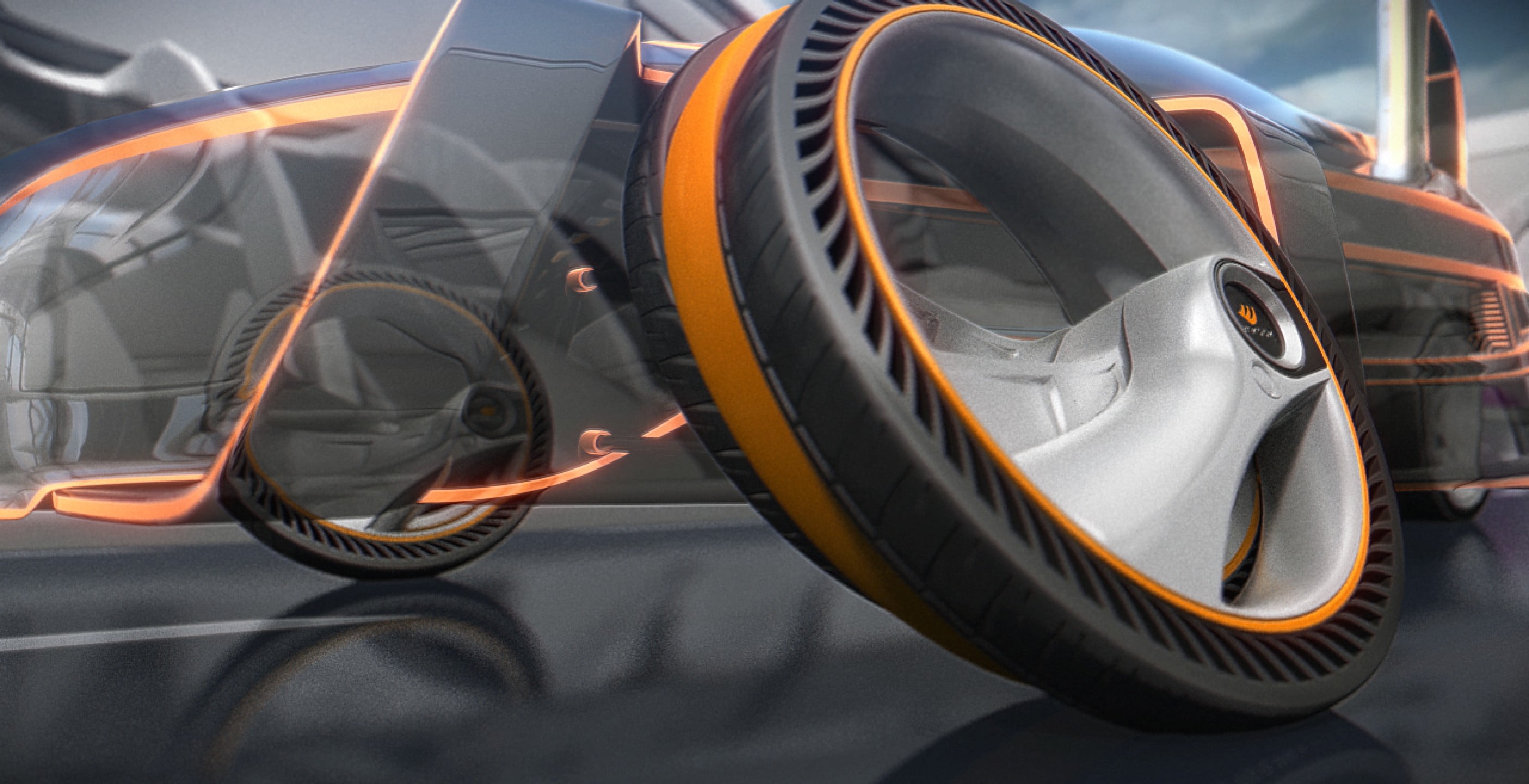
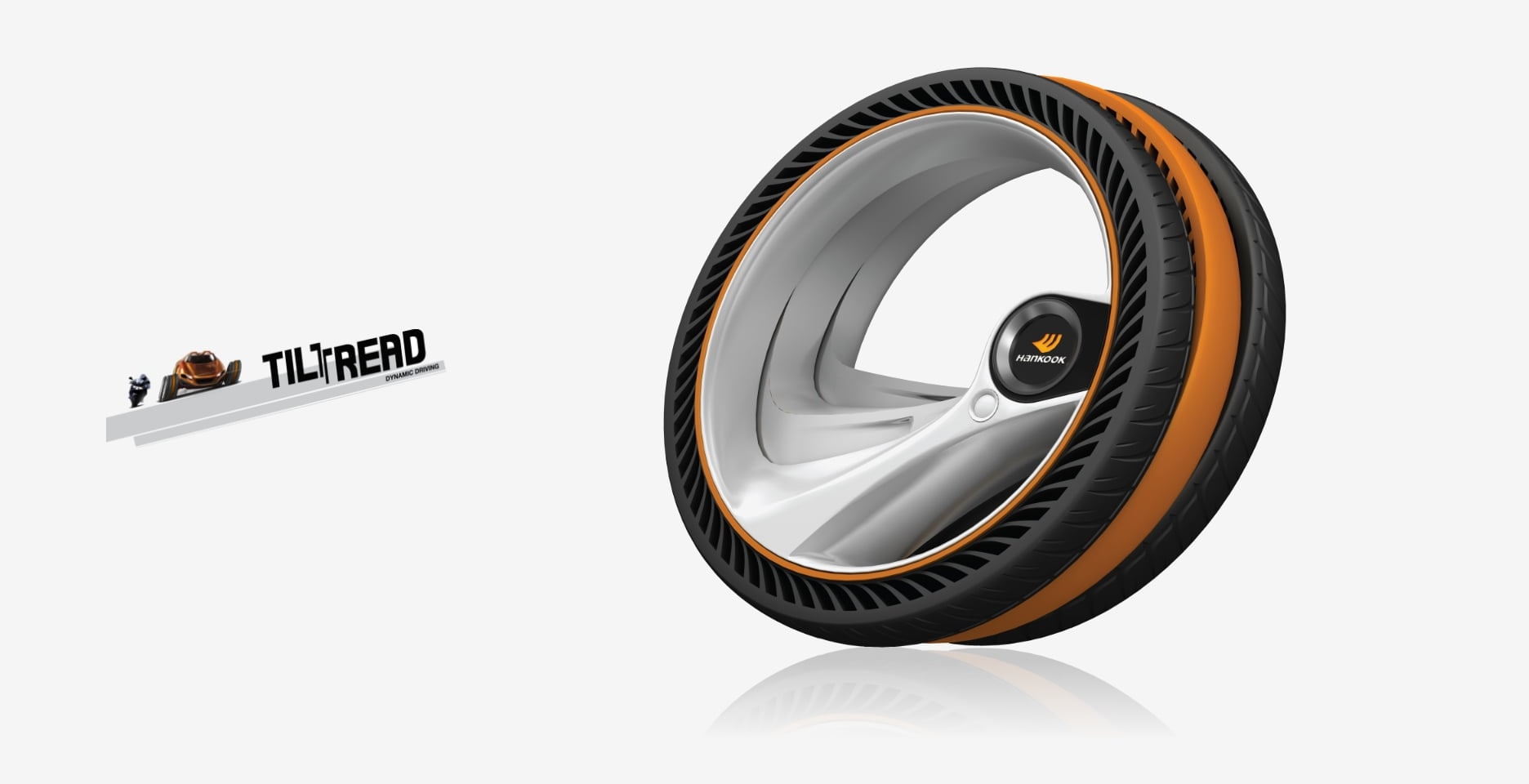
Smart Tires of the Future
This type of tire creates a magnetic field in the space between the tire and the rim to perfect a quiet and comfortable driving experience.
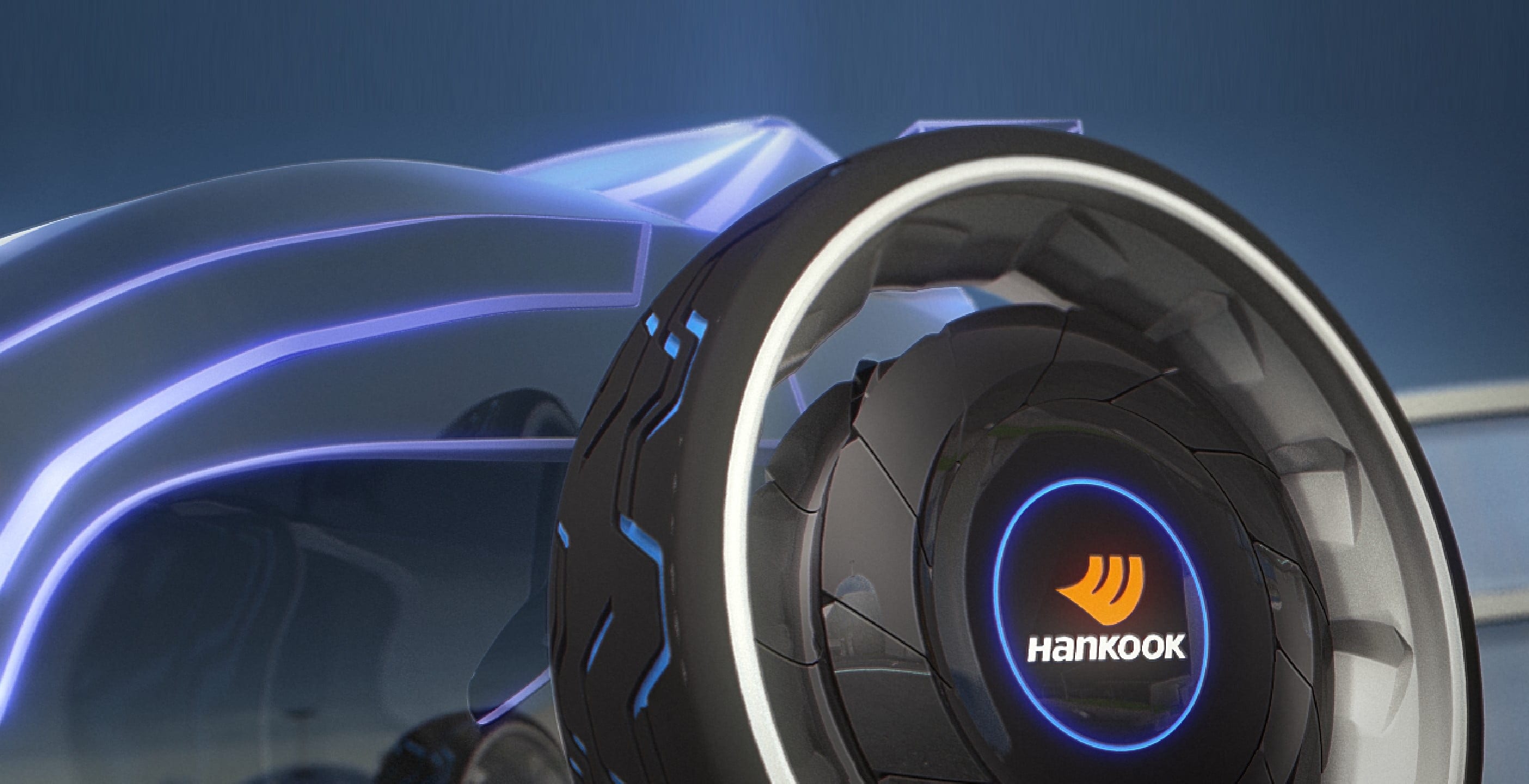
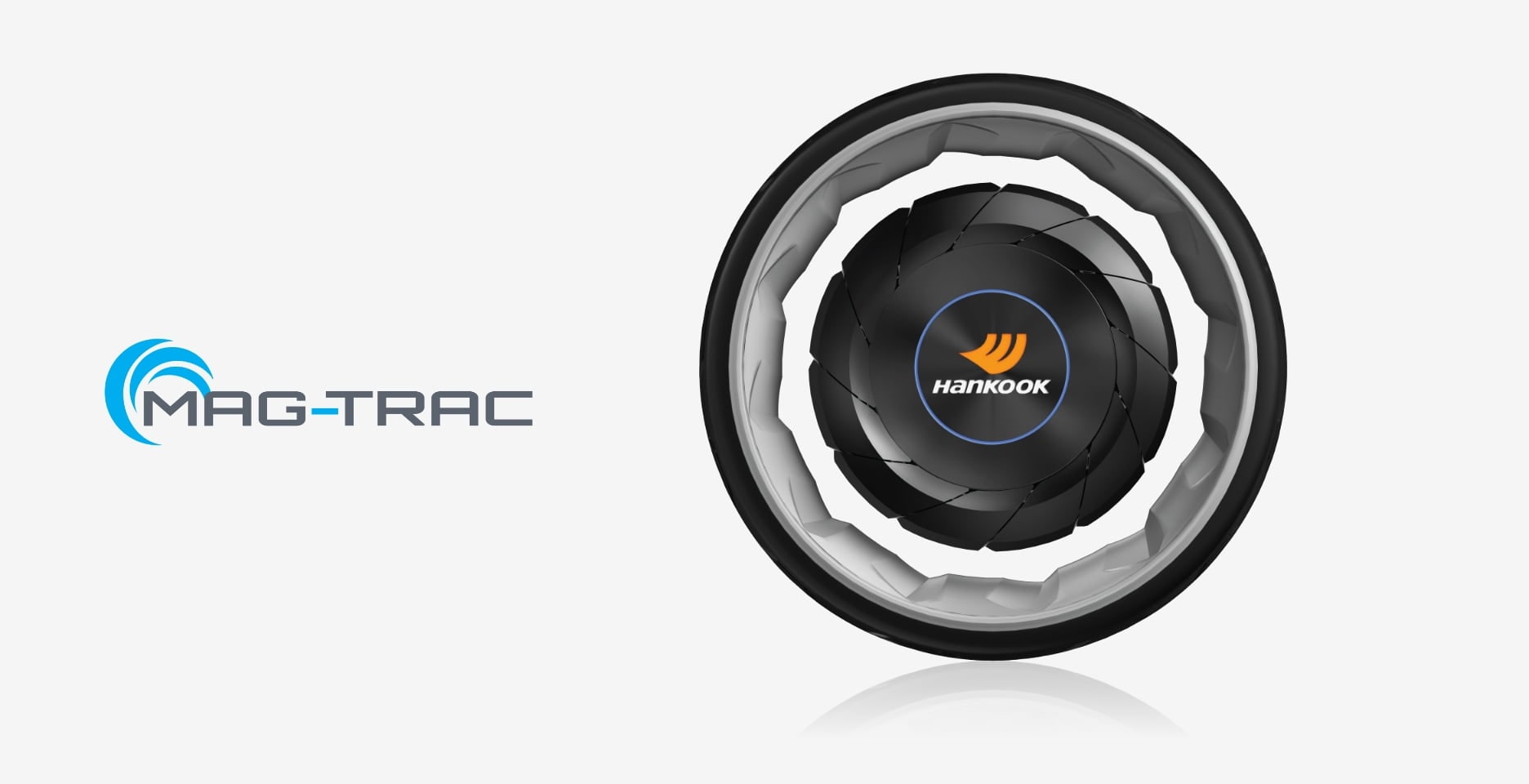
Variable Hybrid Tires
This is an off-road tire of the future designed to effectively absorb any impact even on extremely rough roads and prevent tire blowout accidents in real-time.
